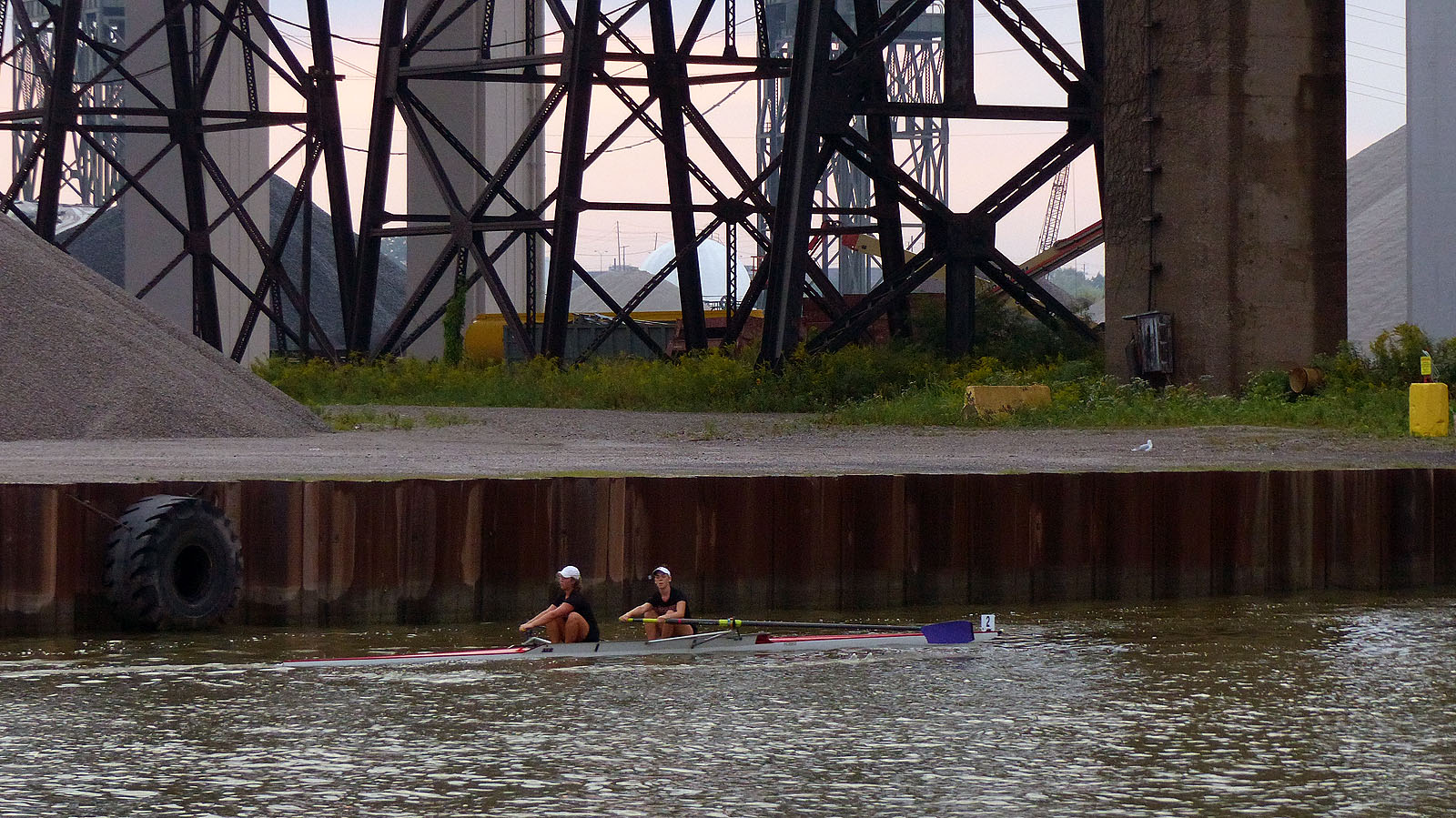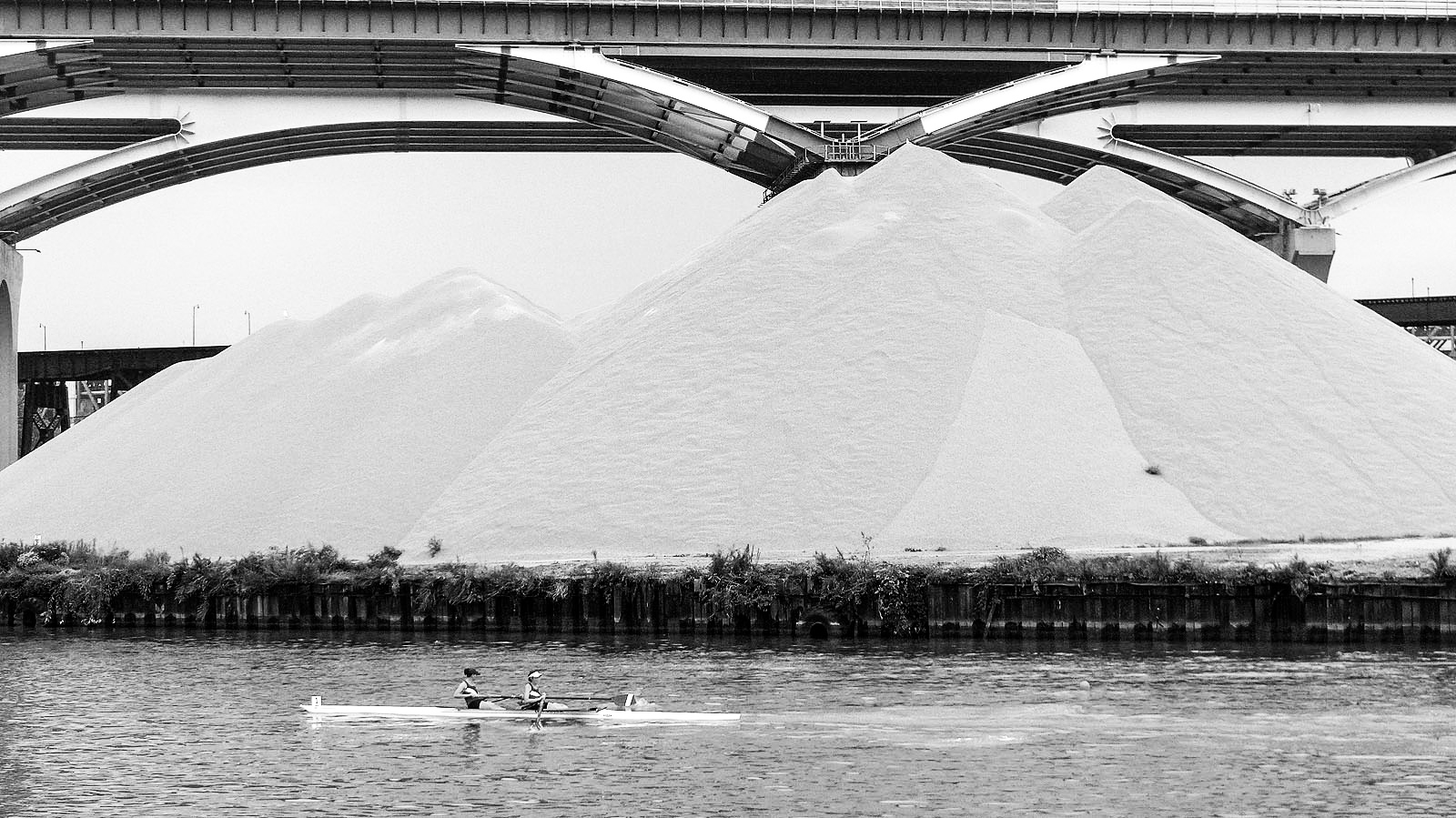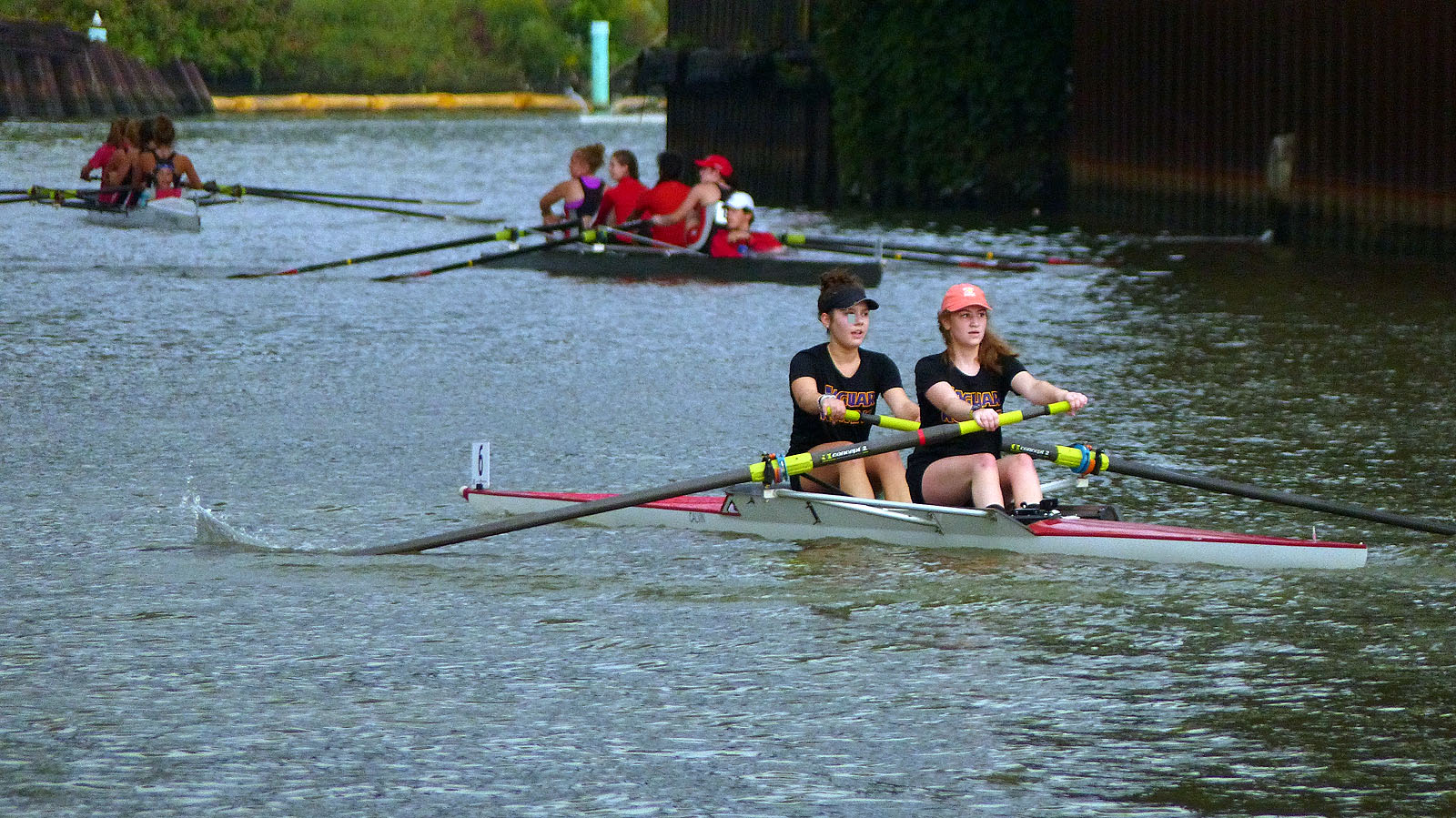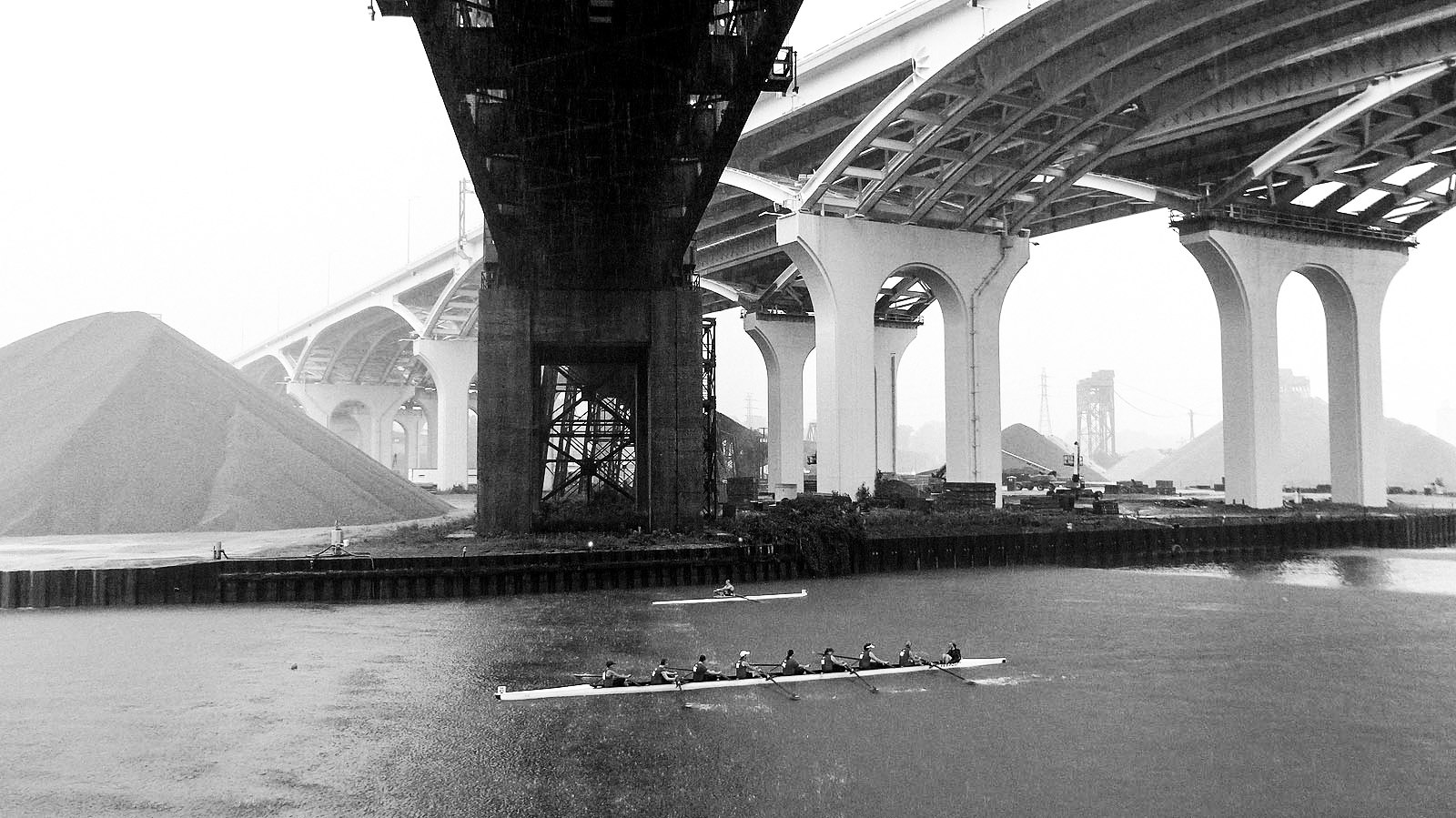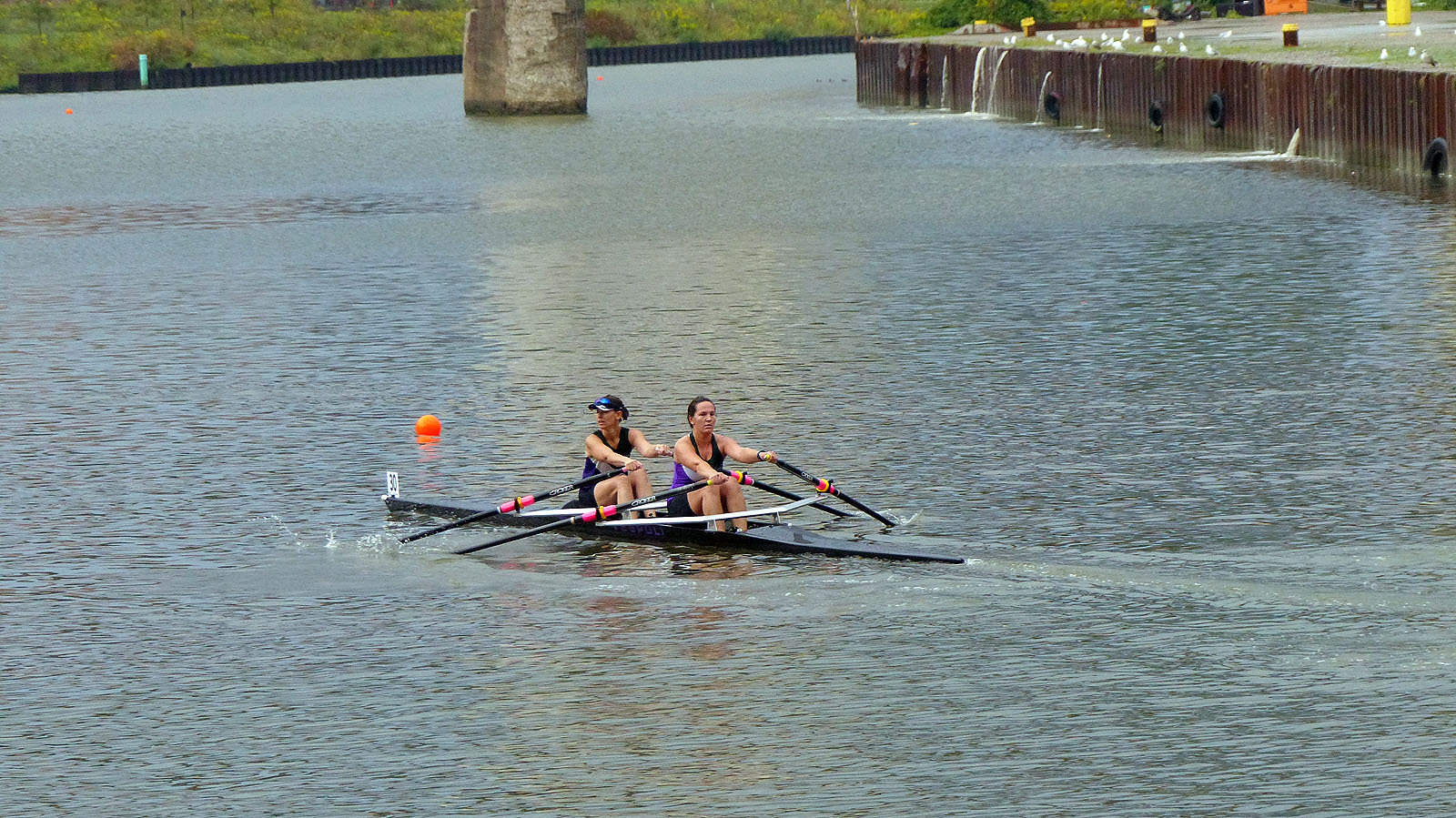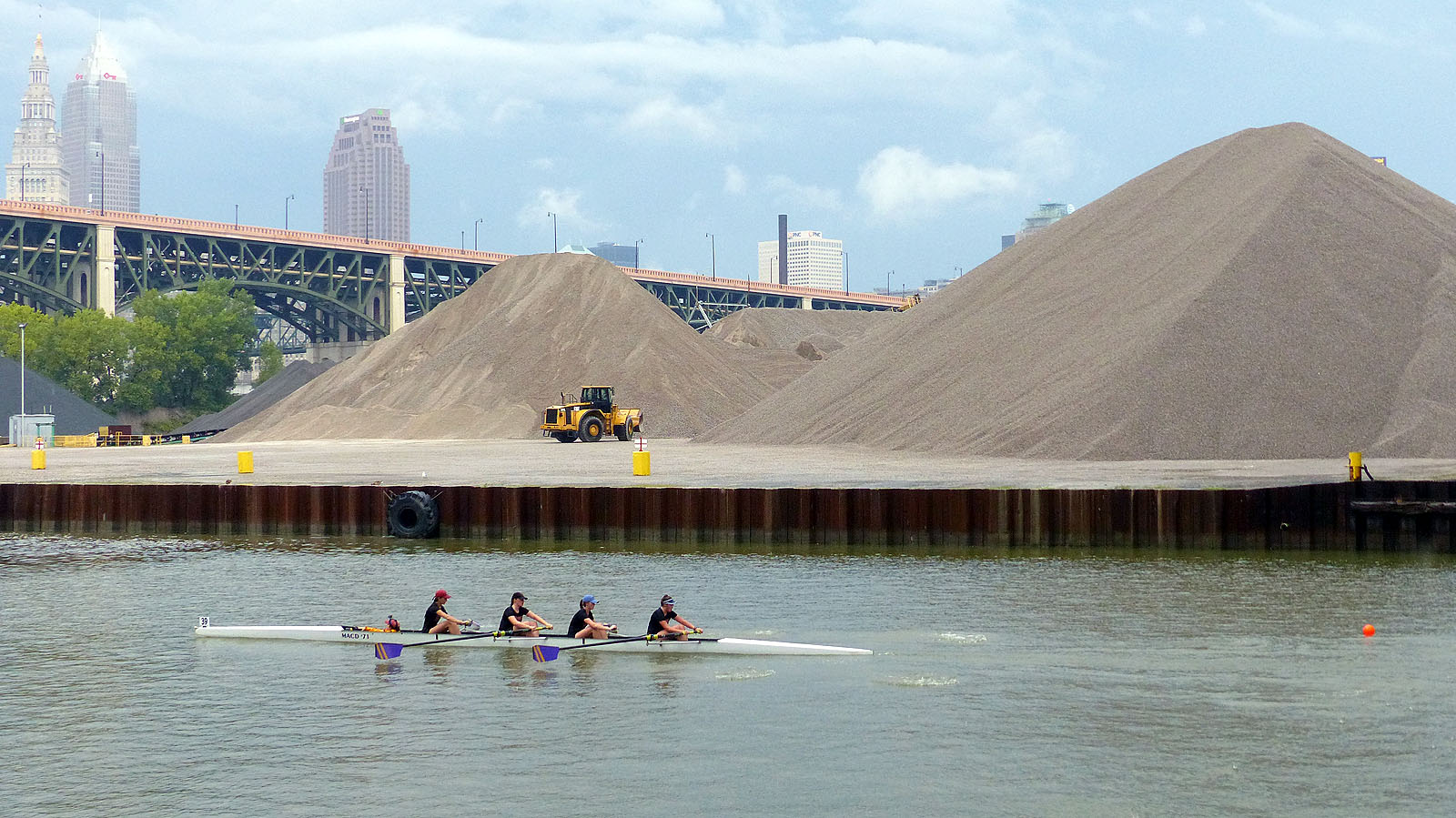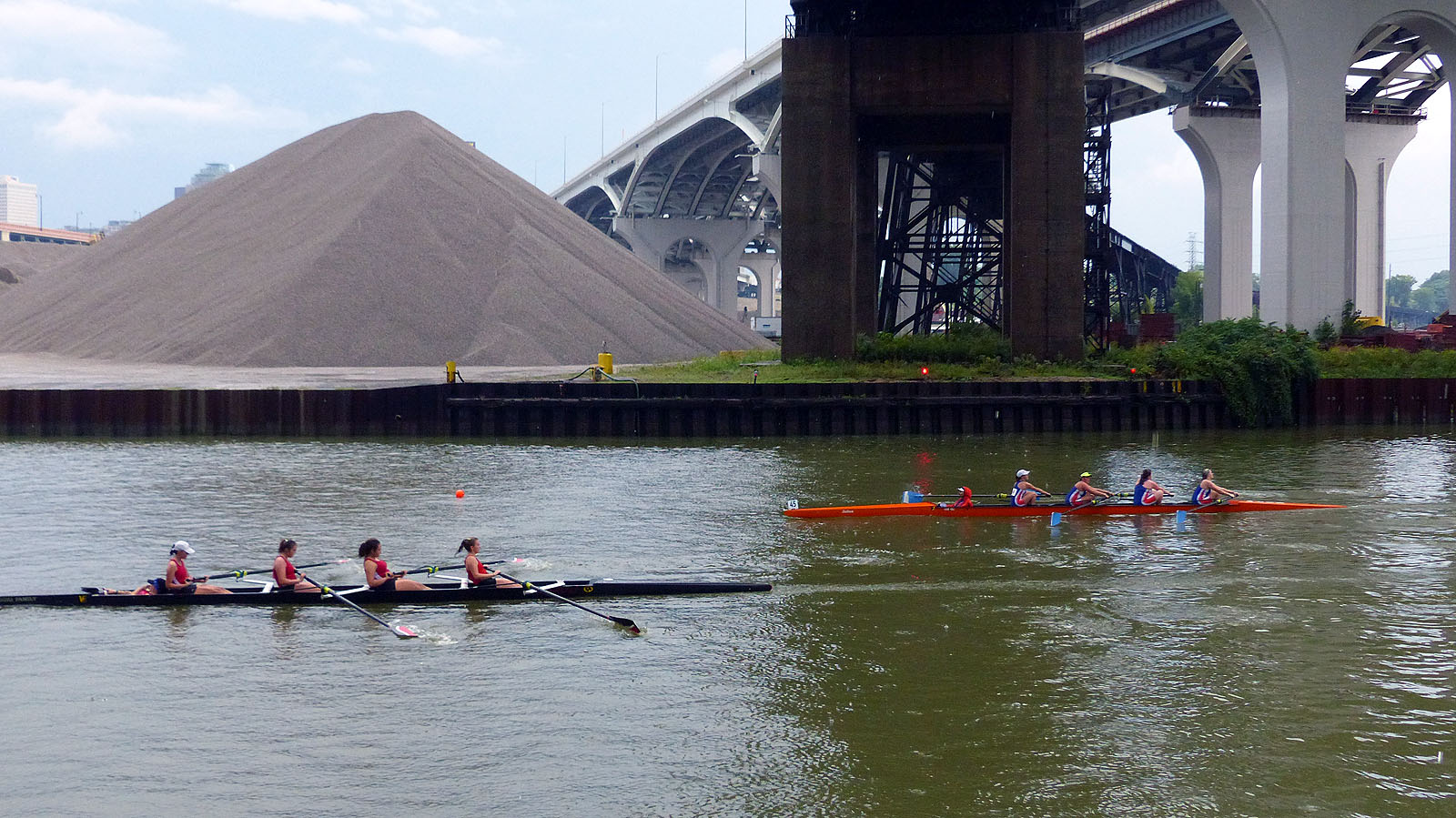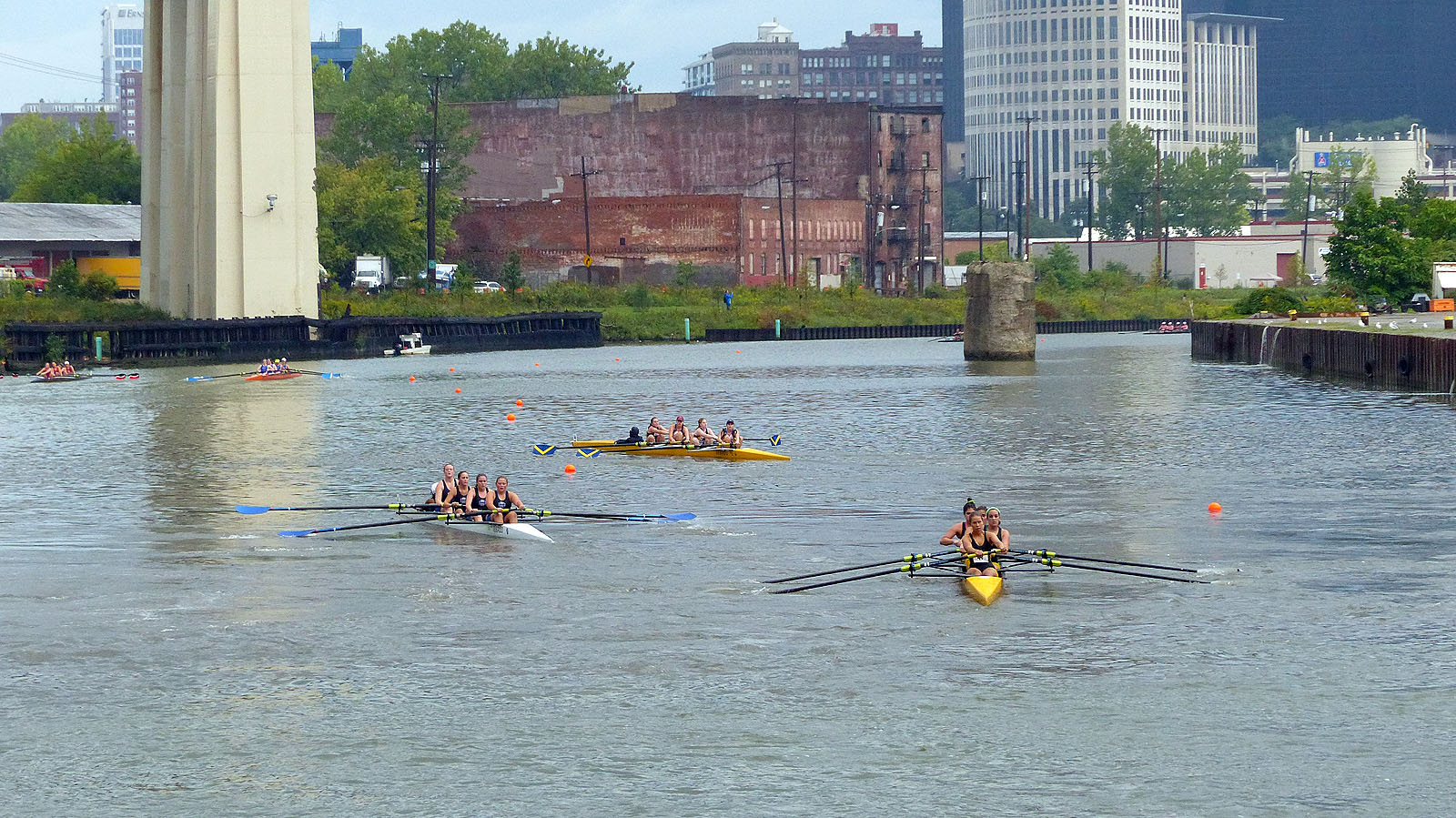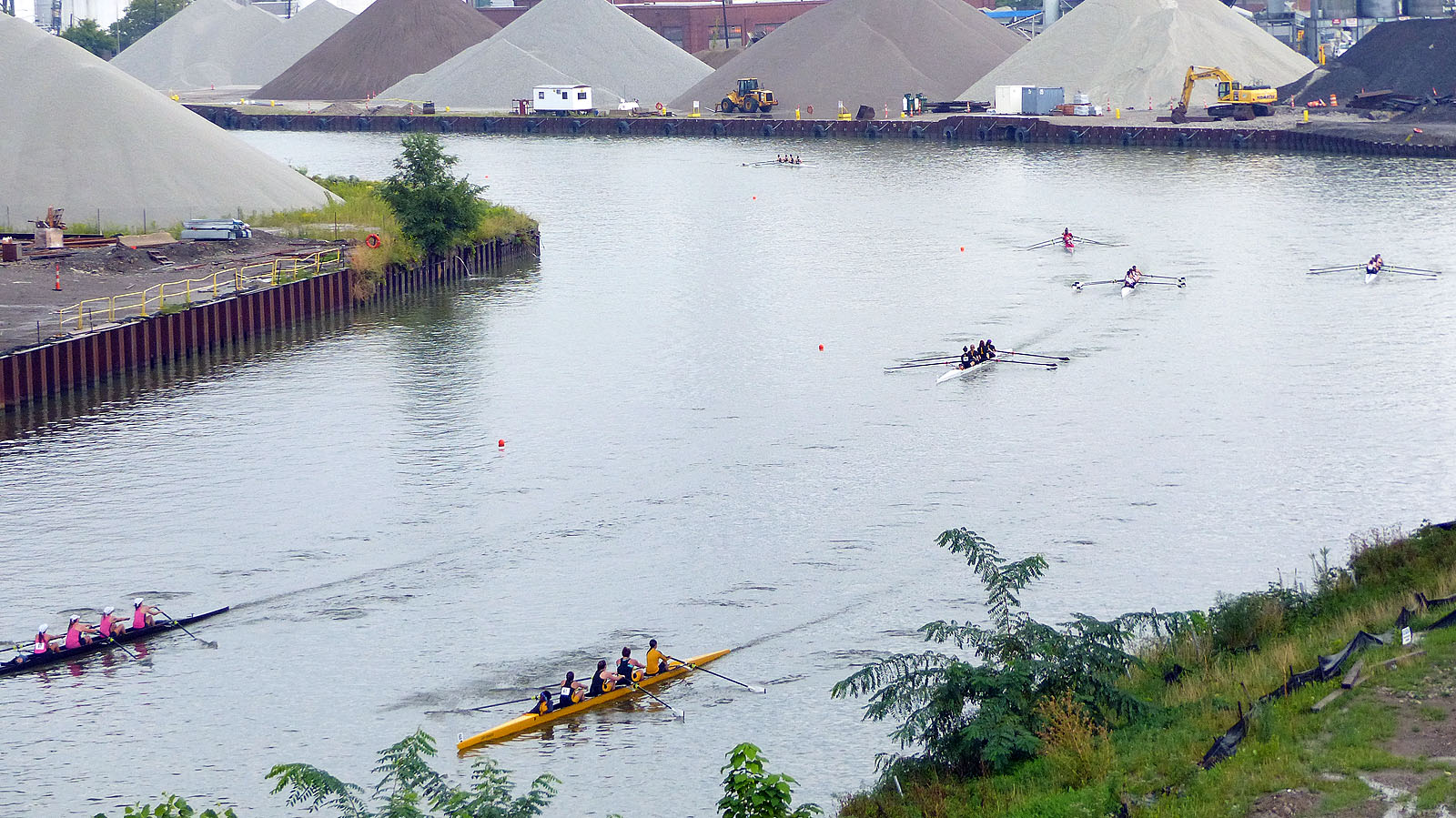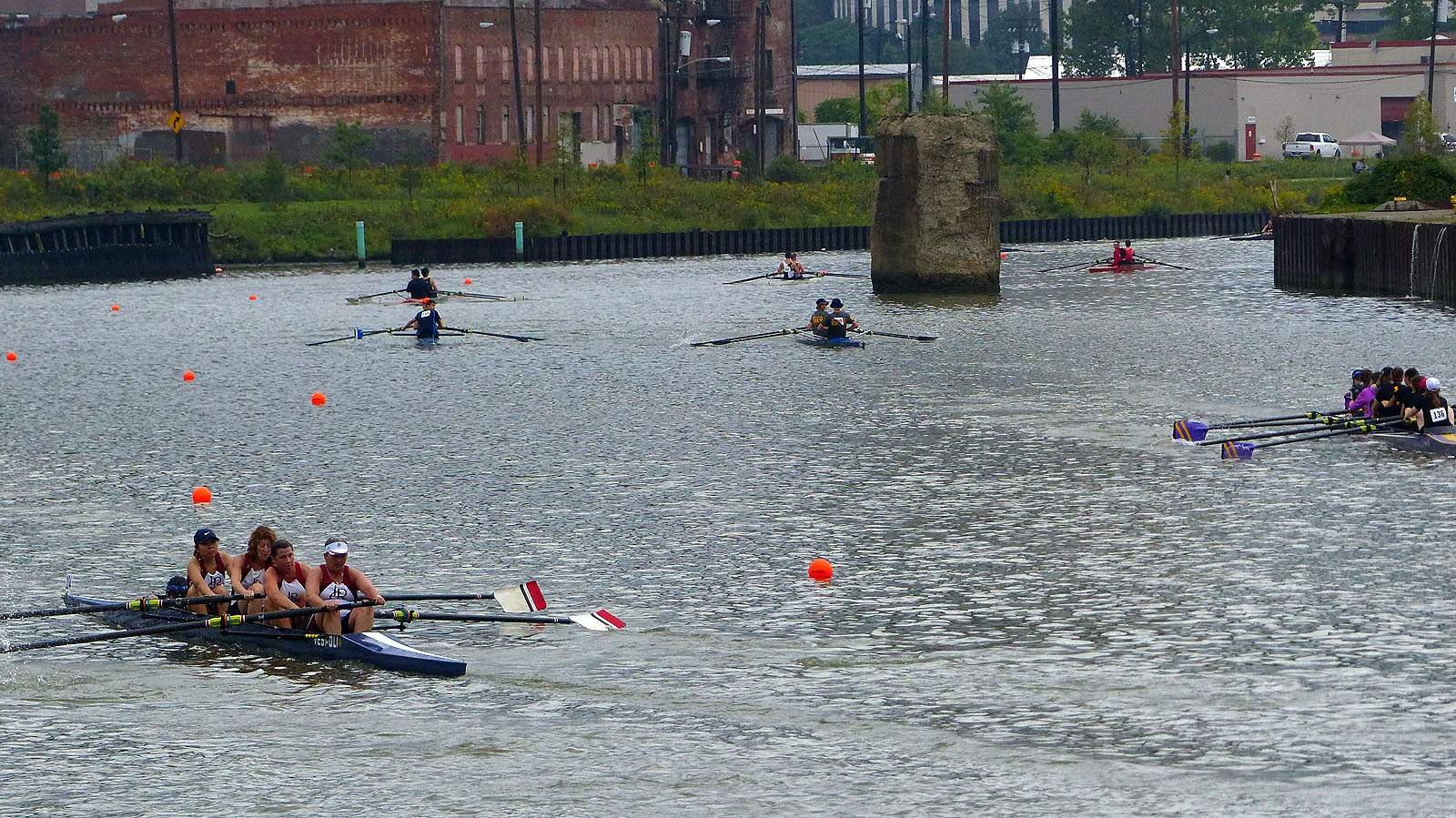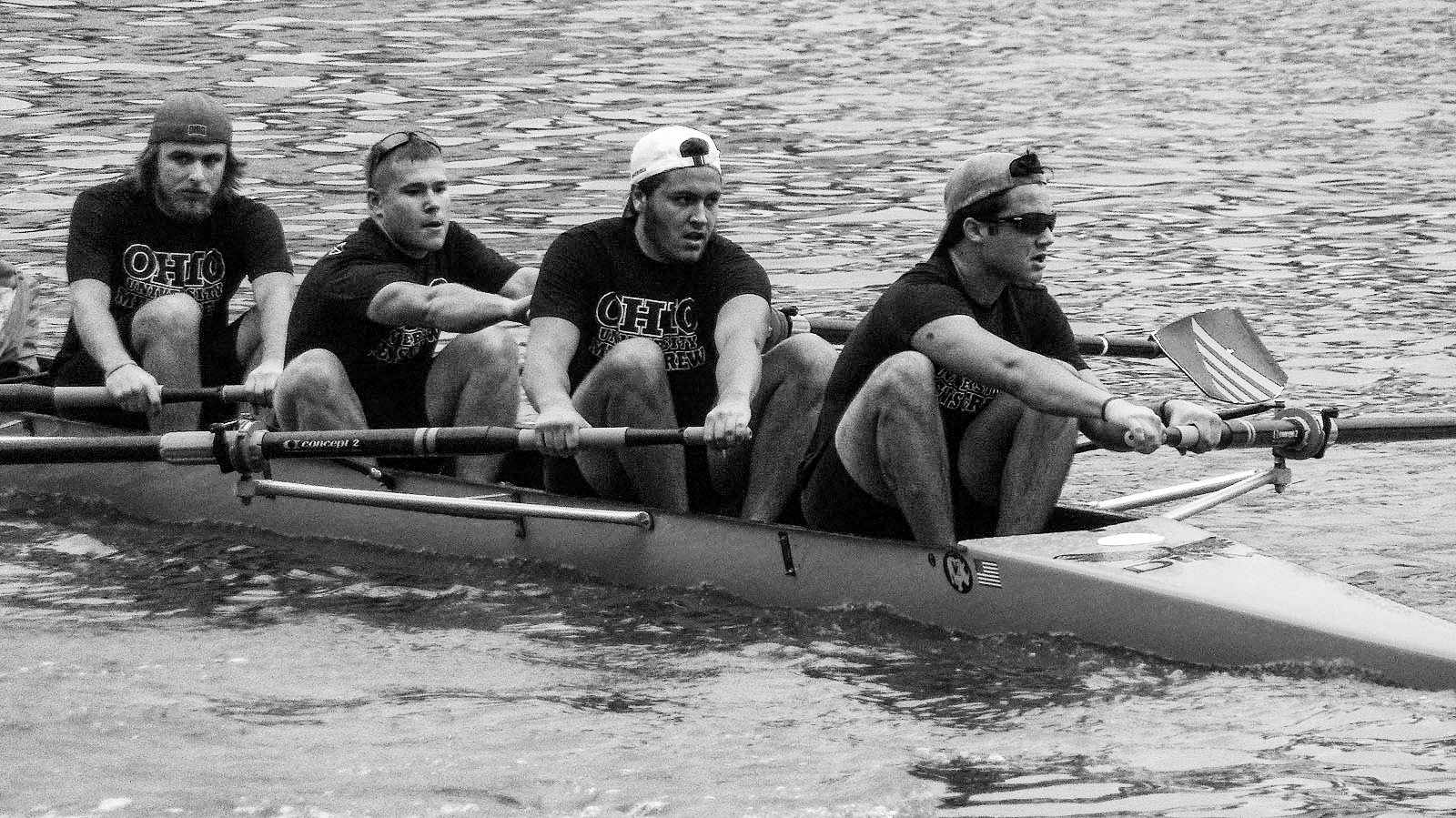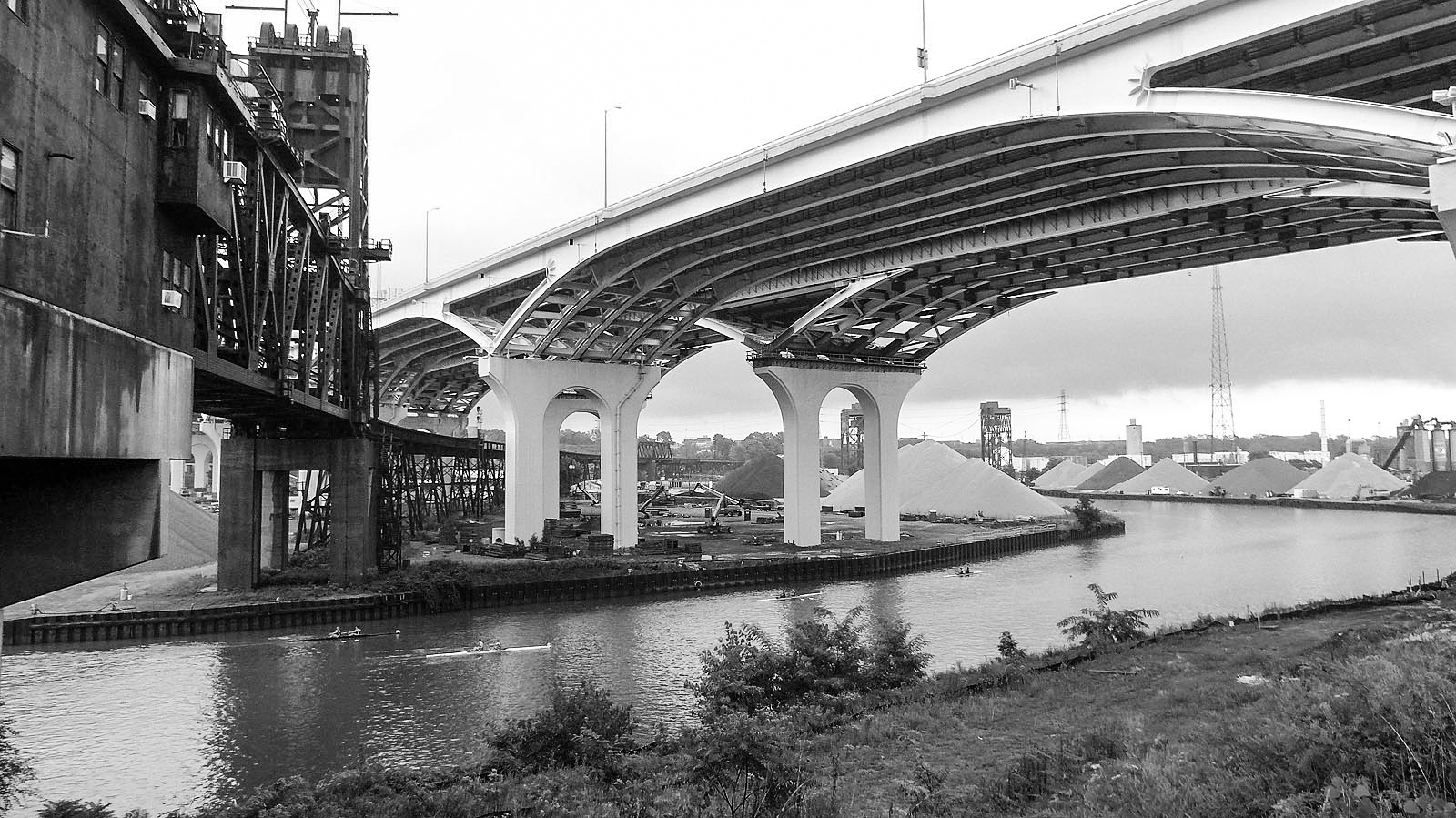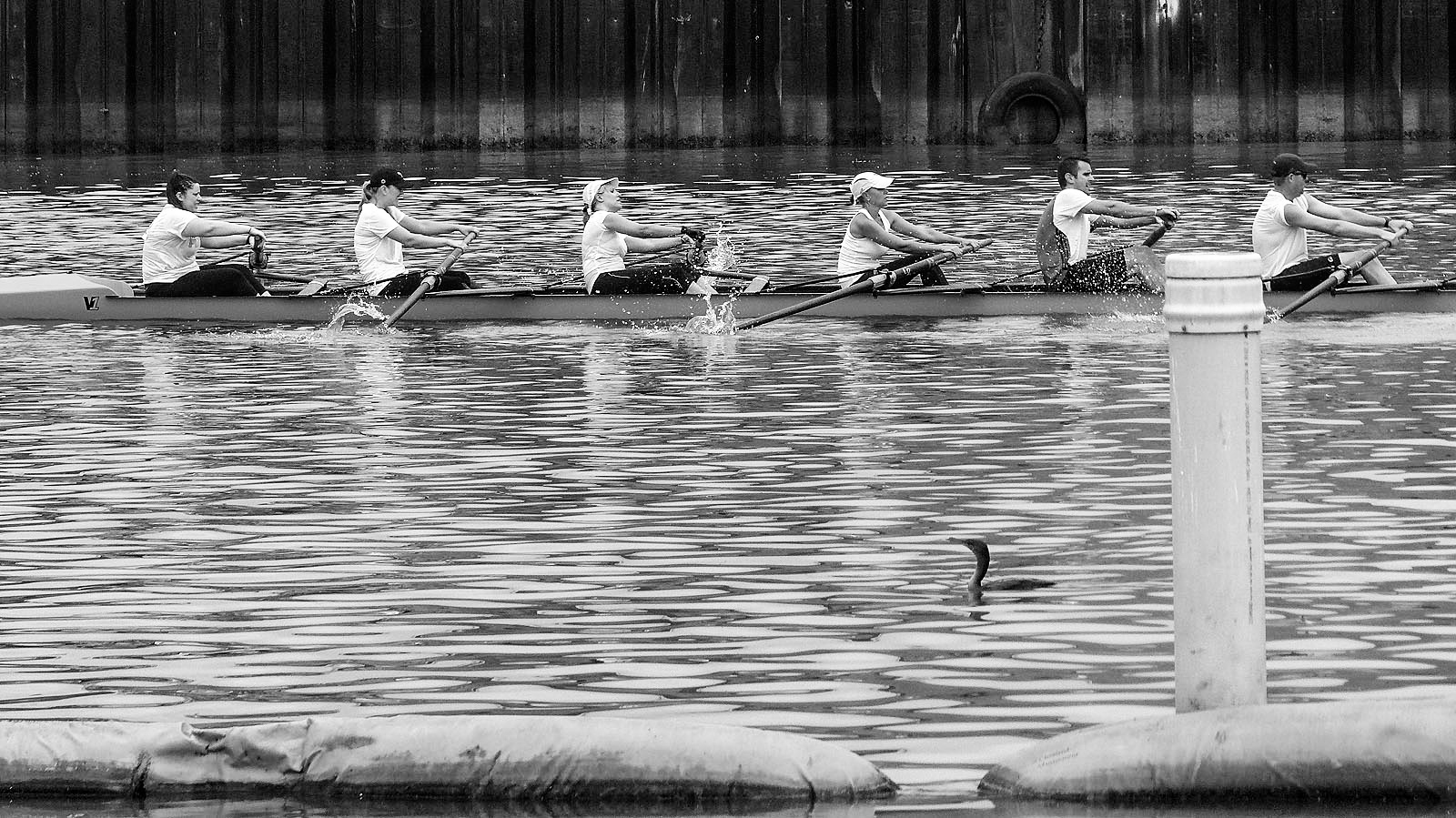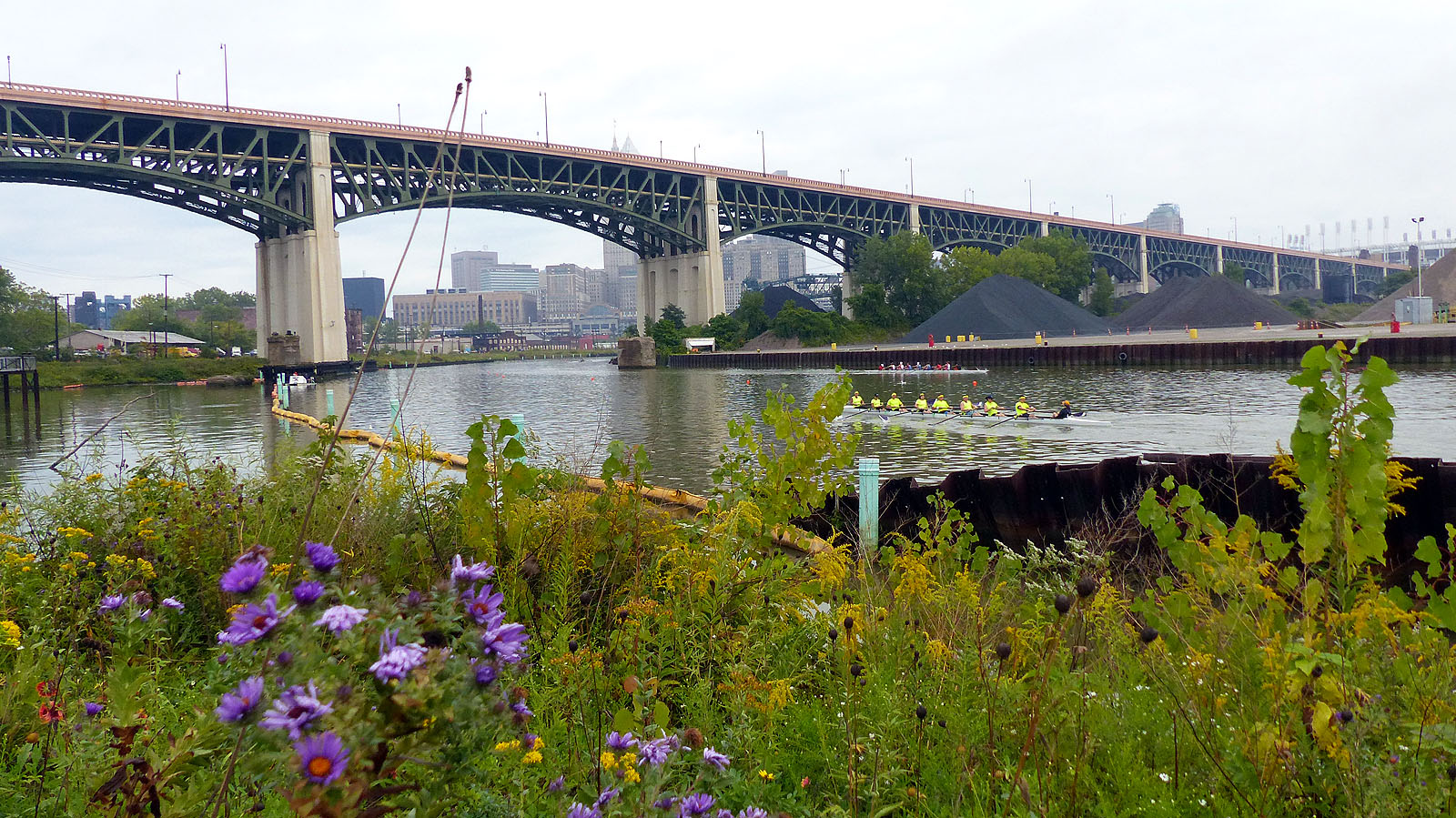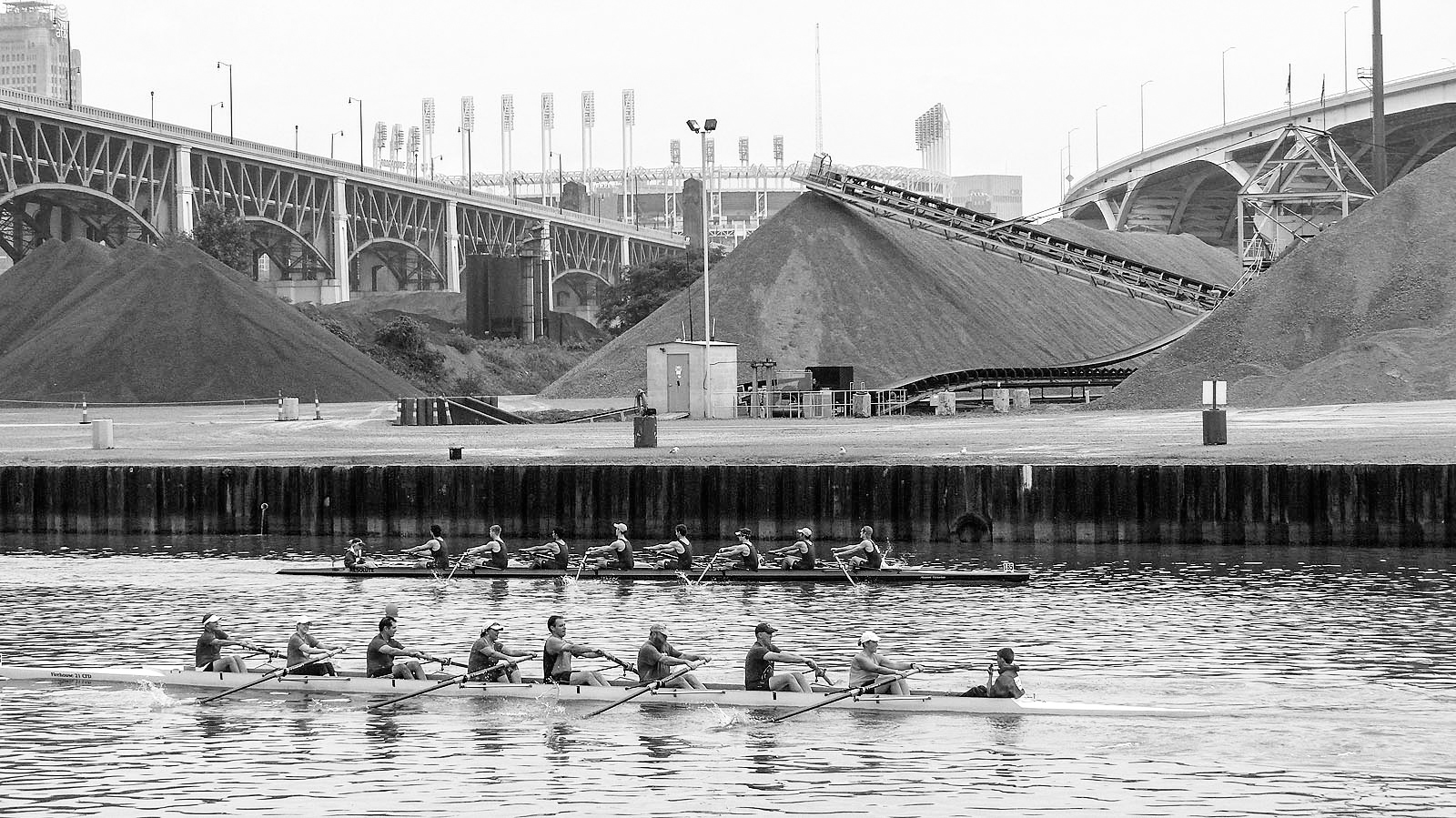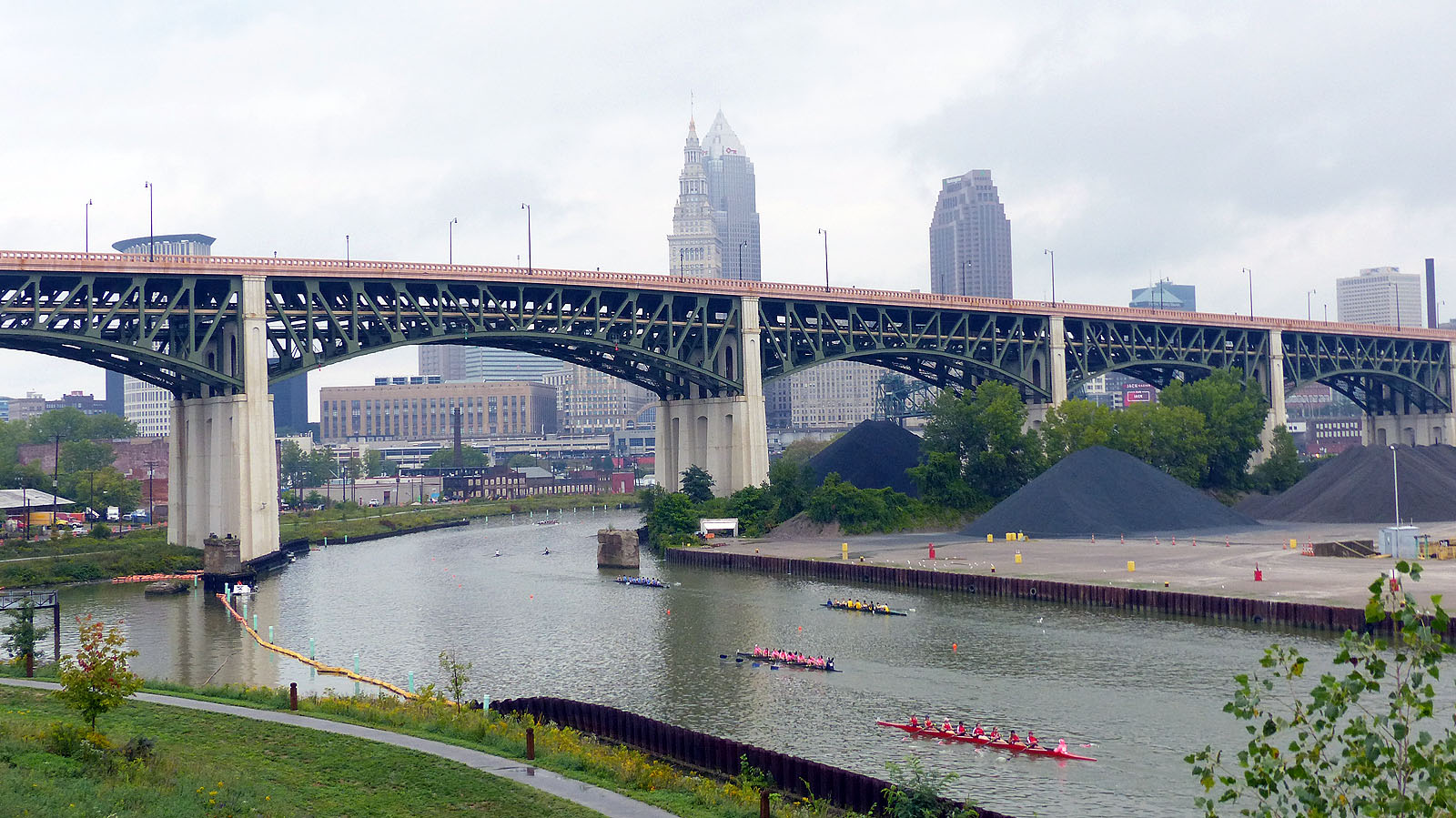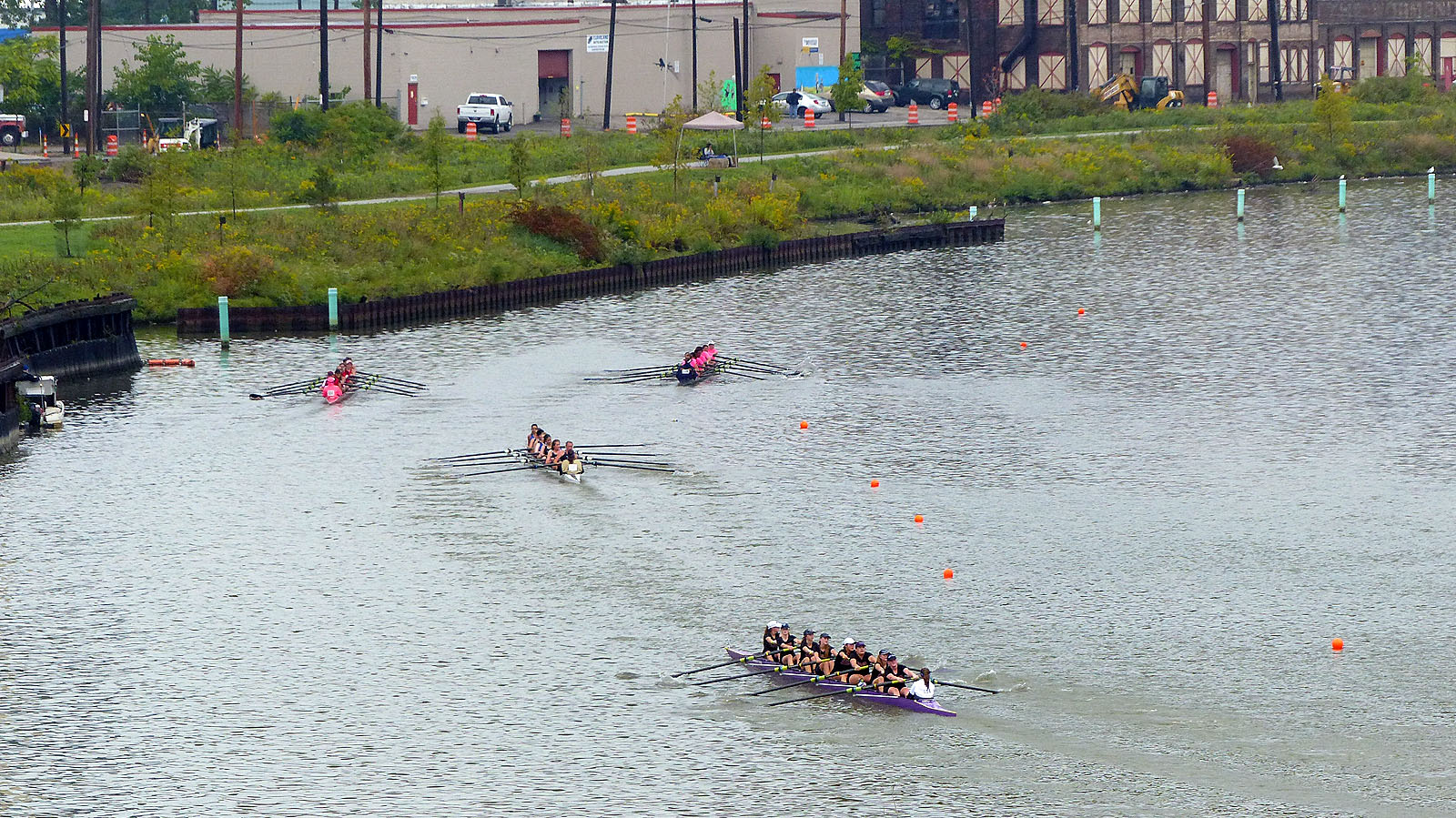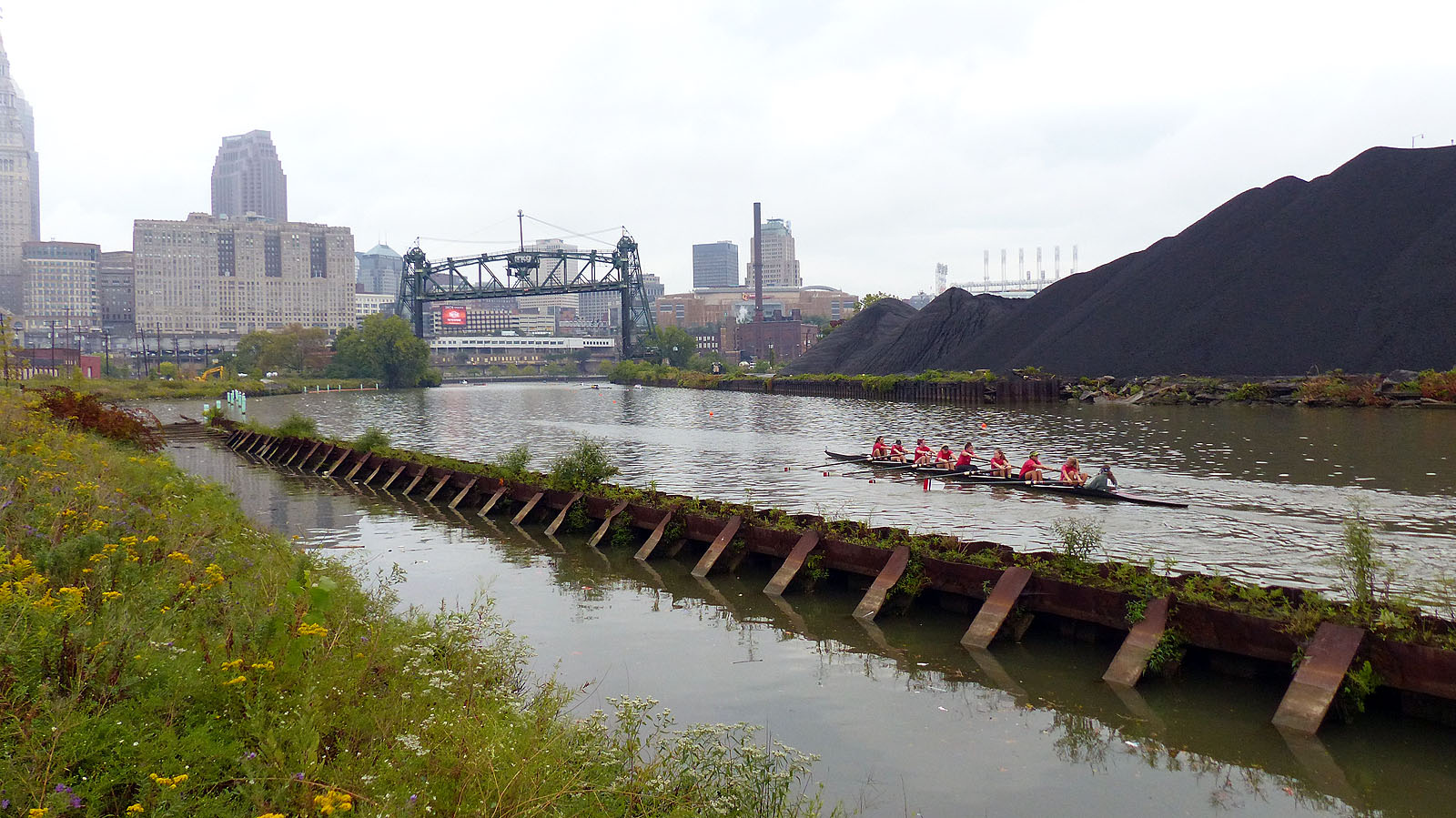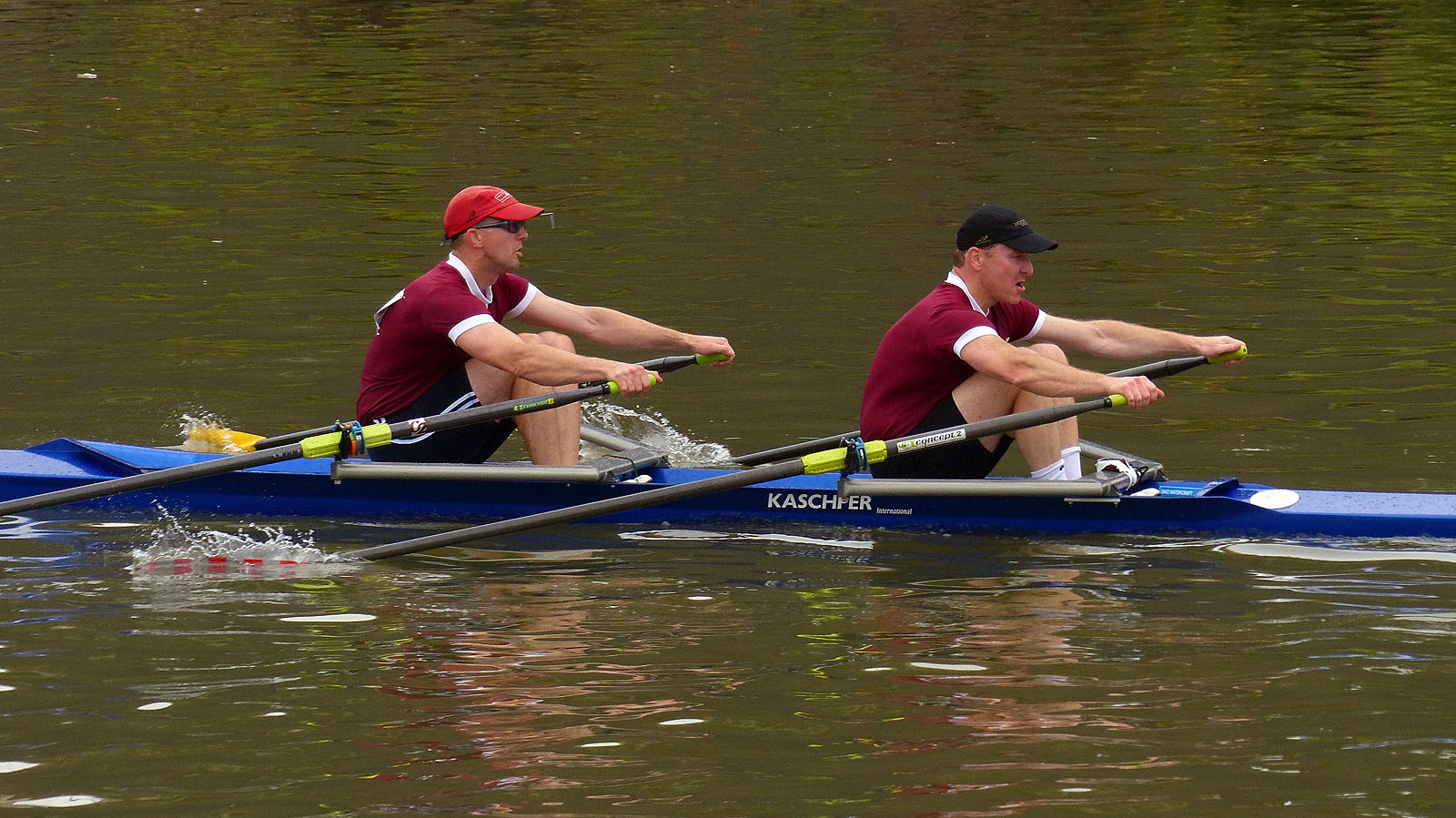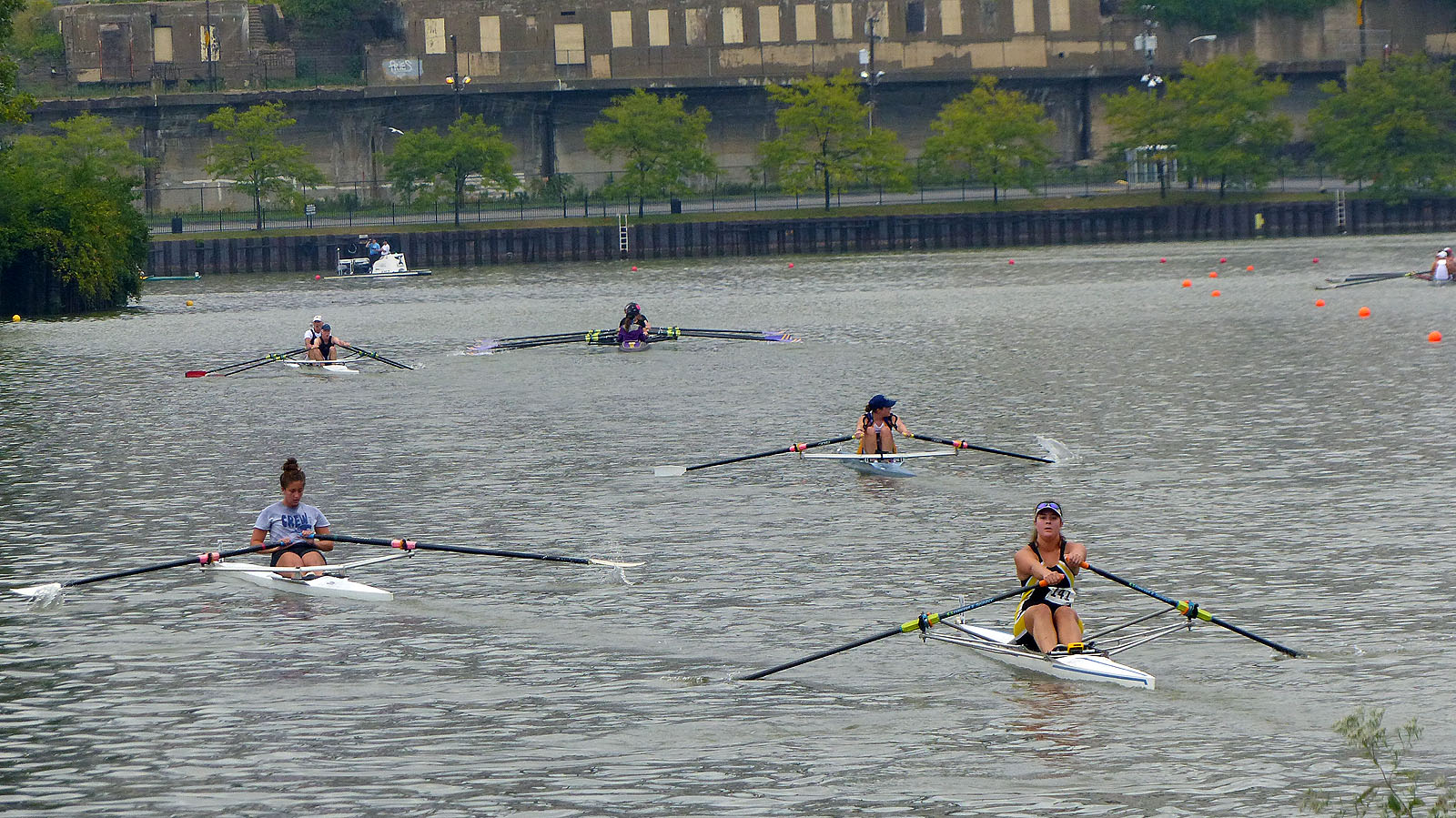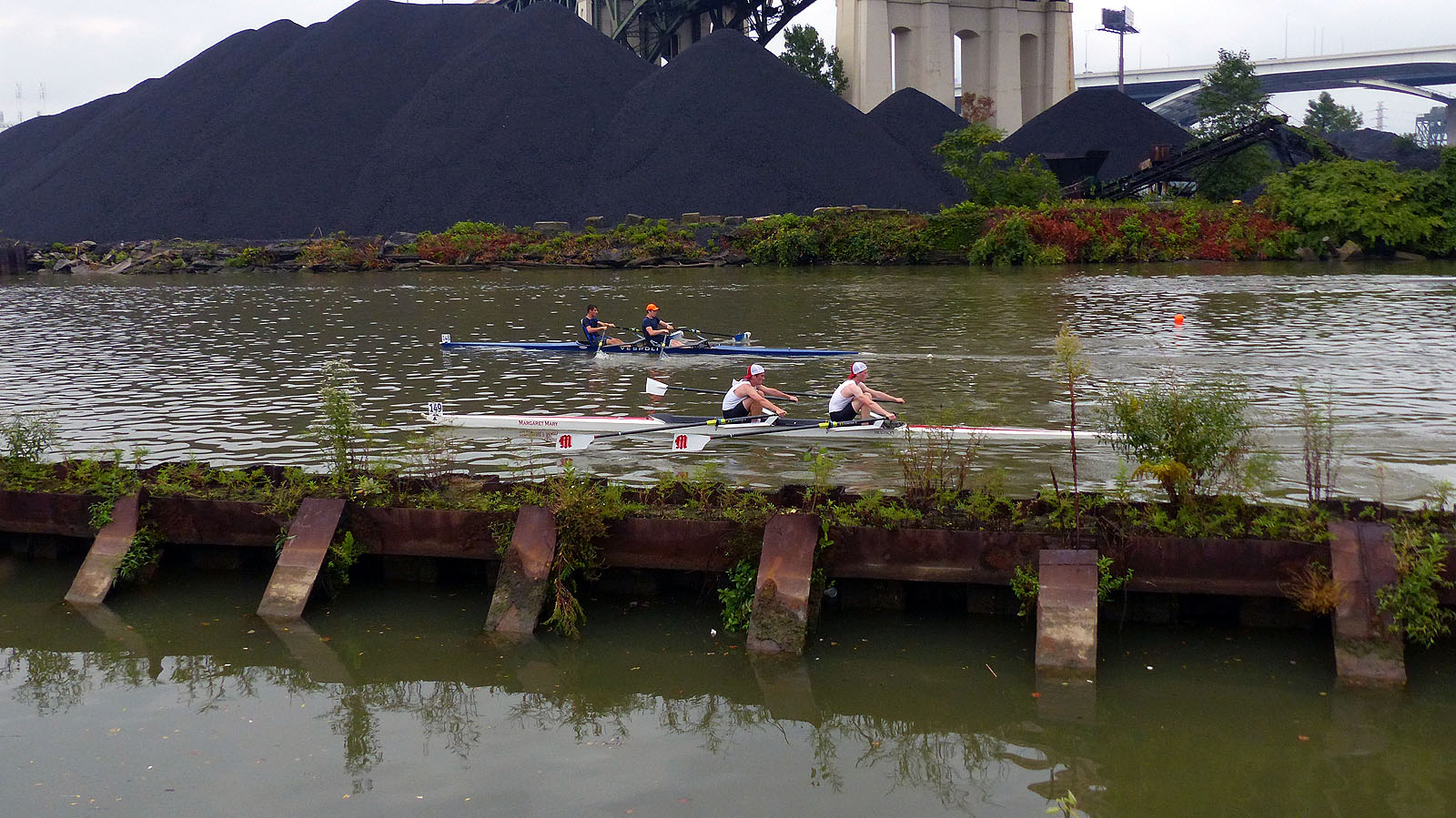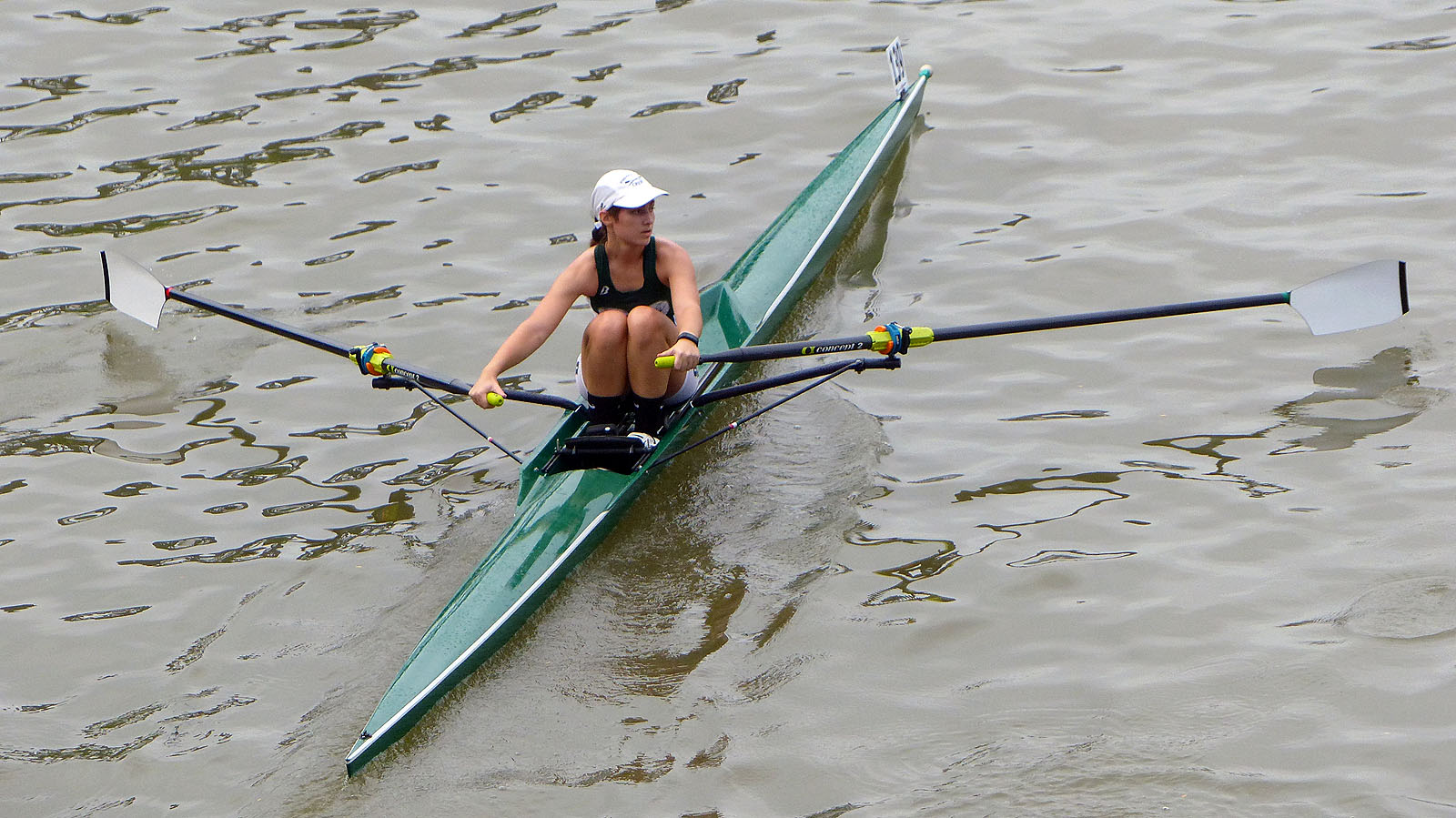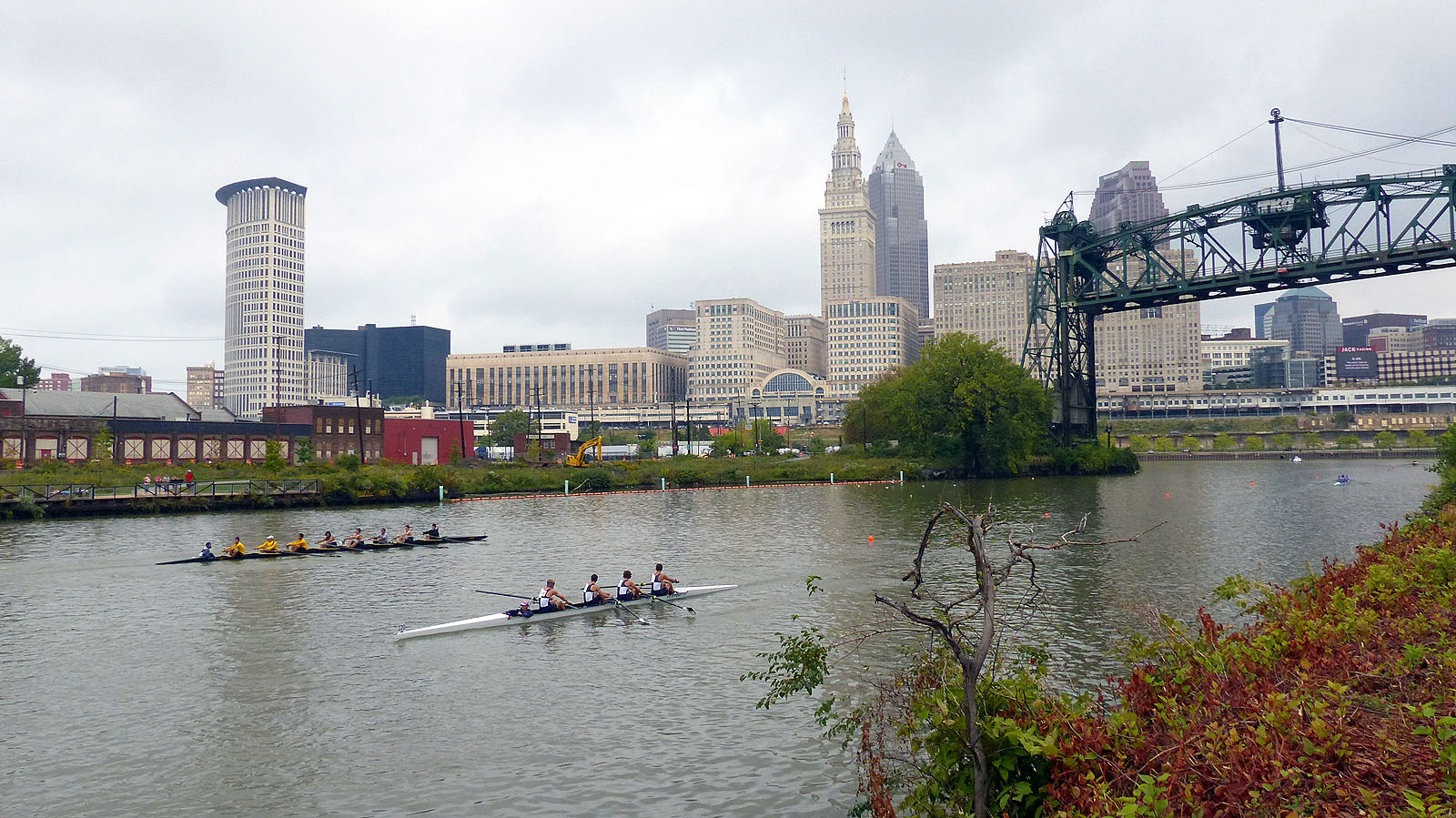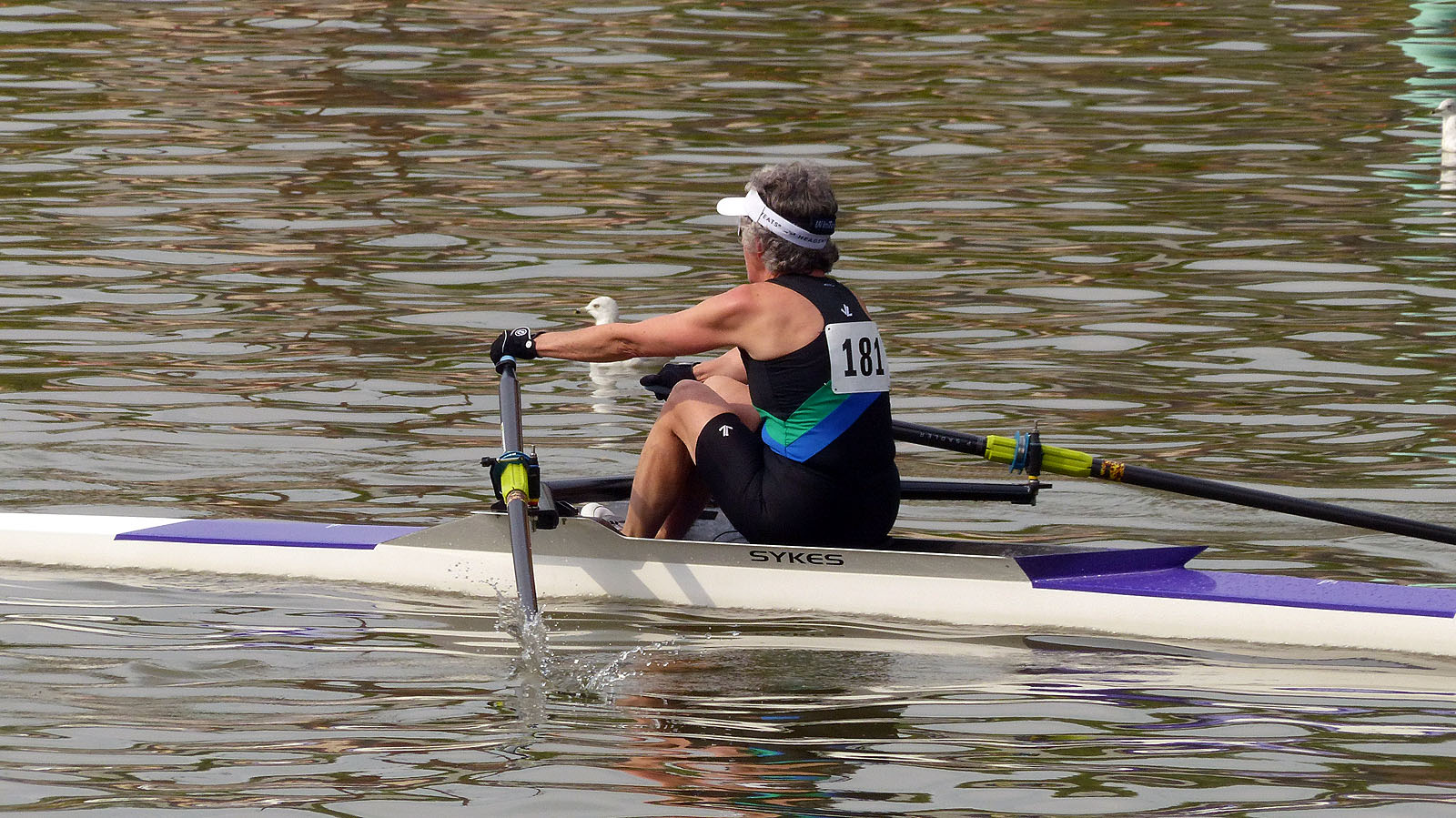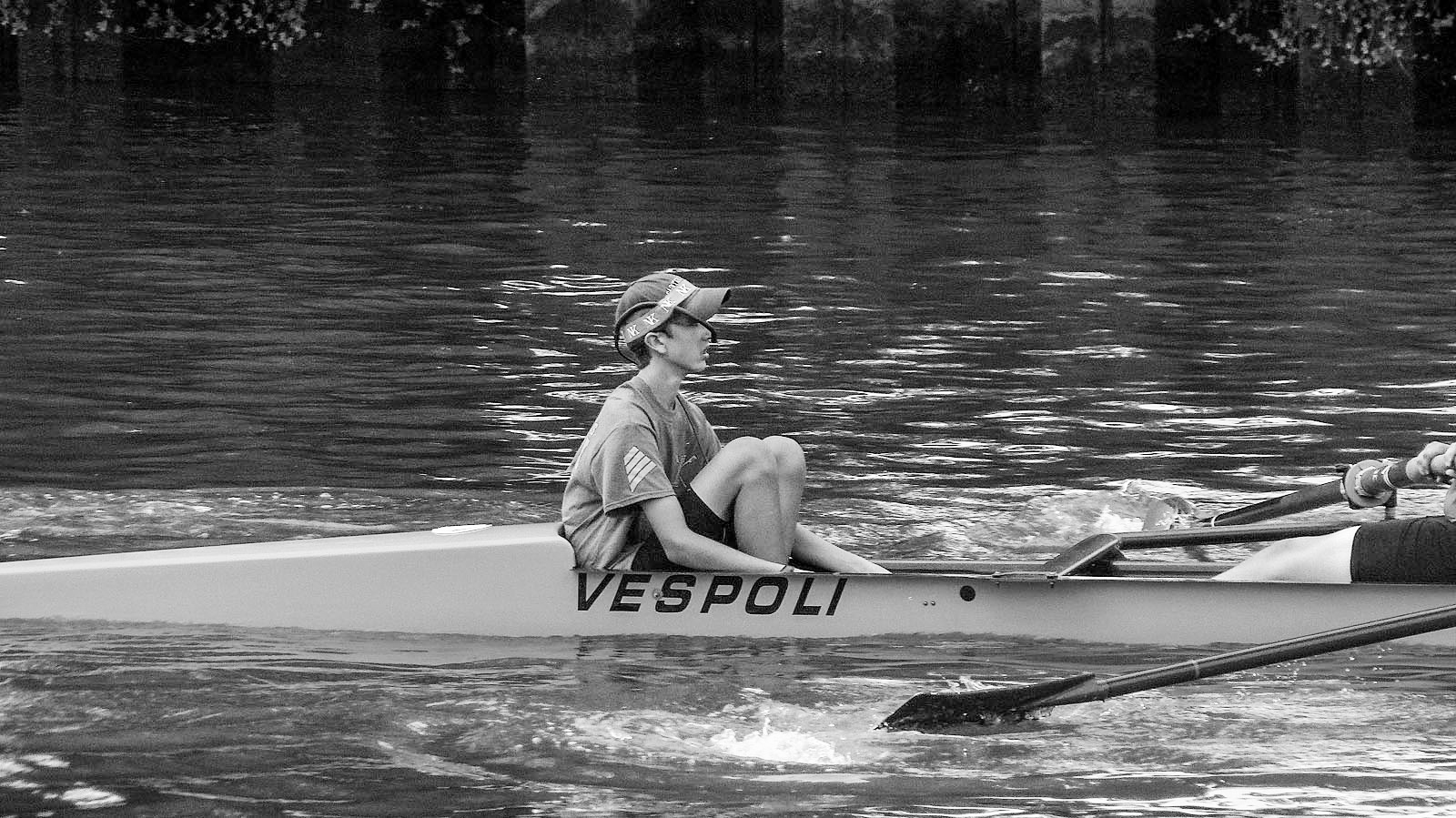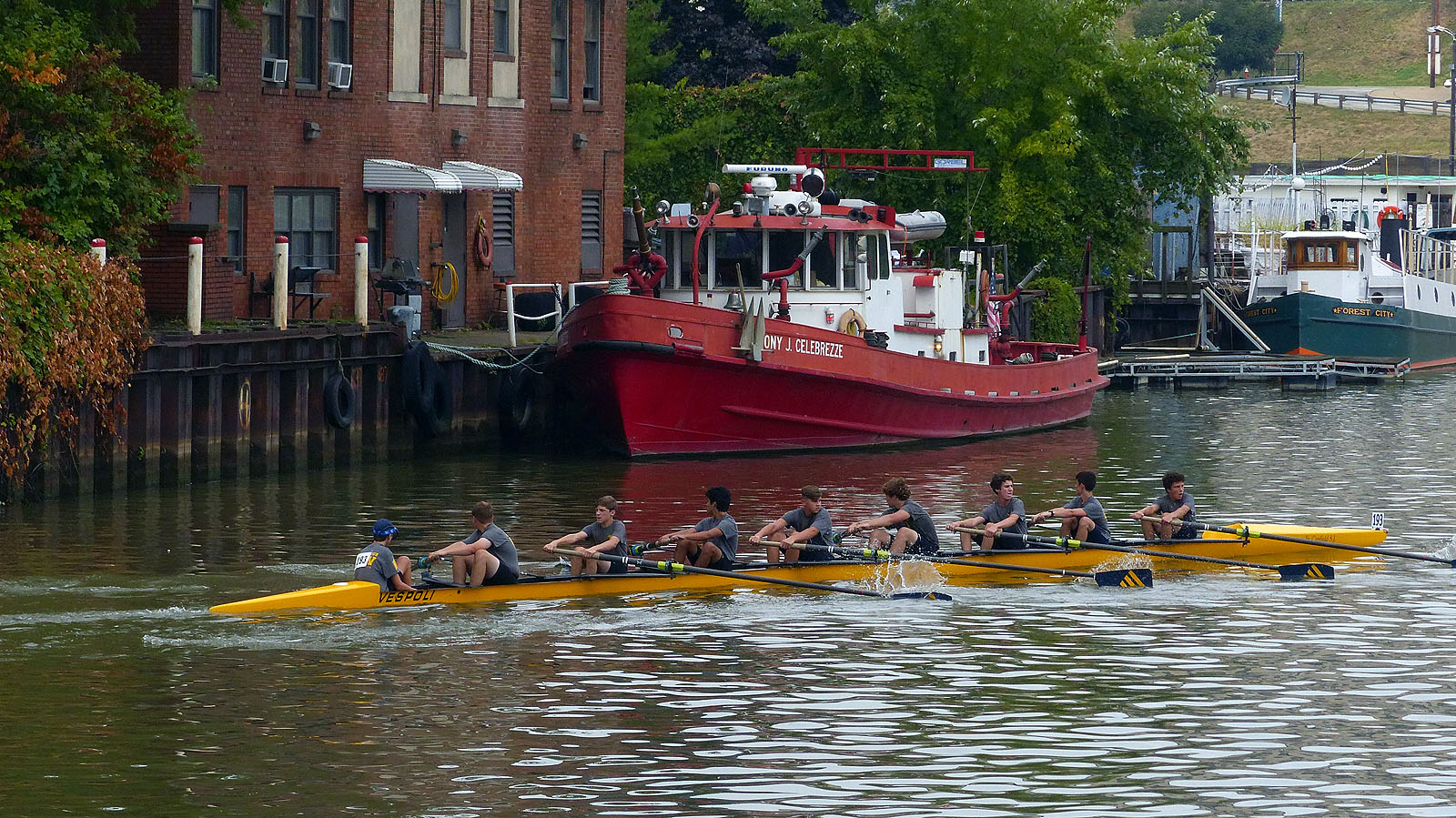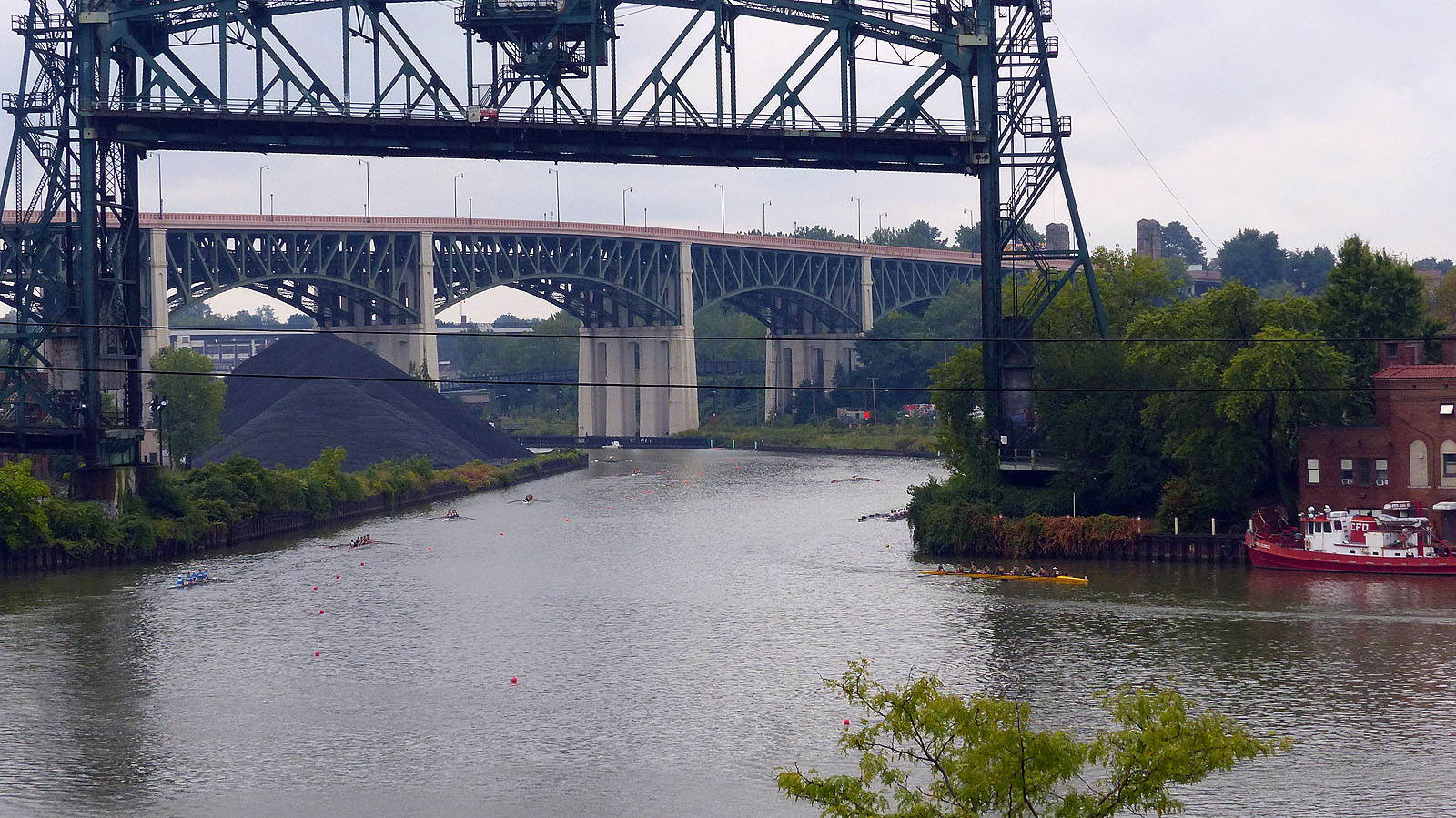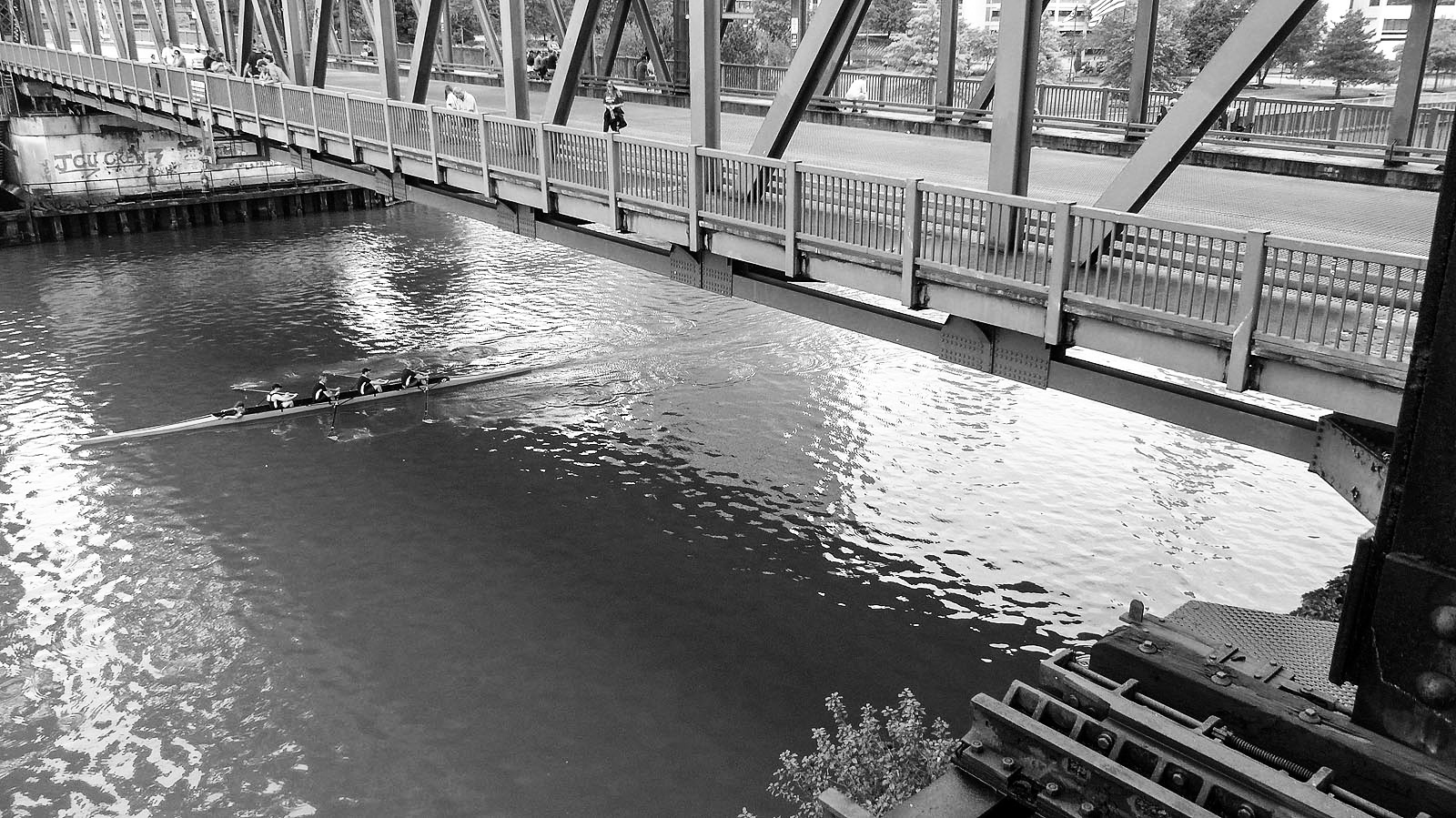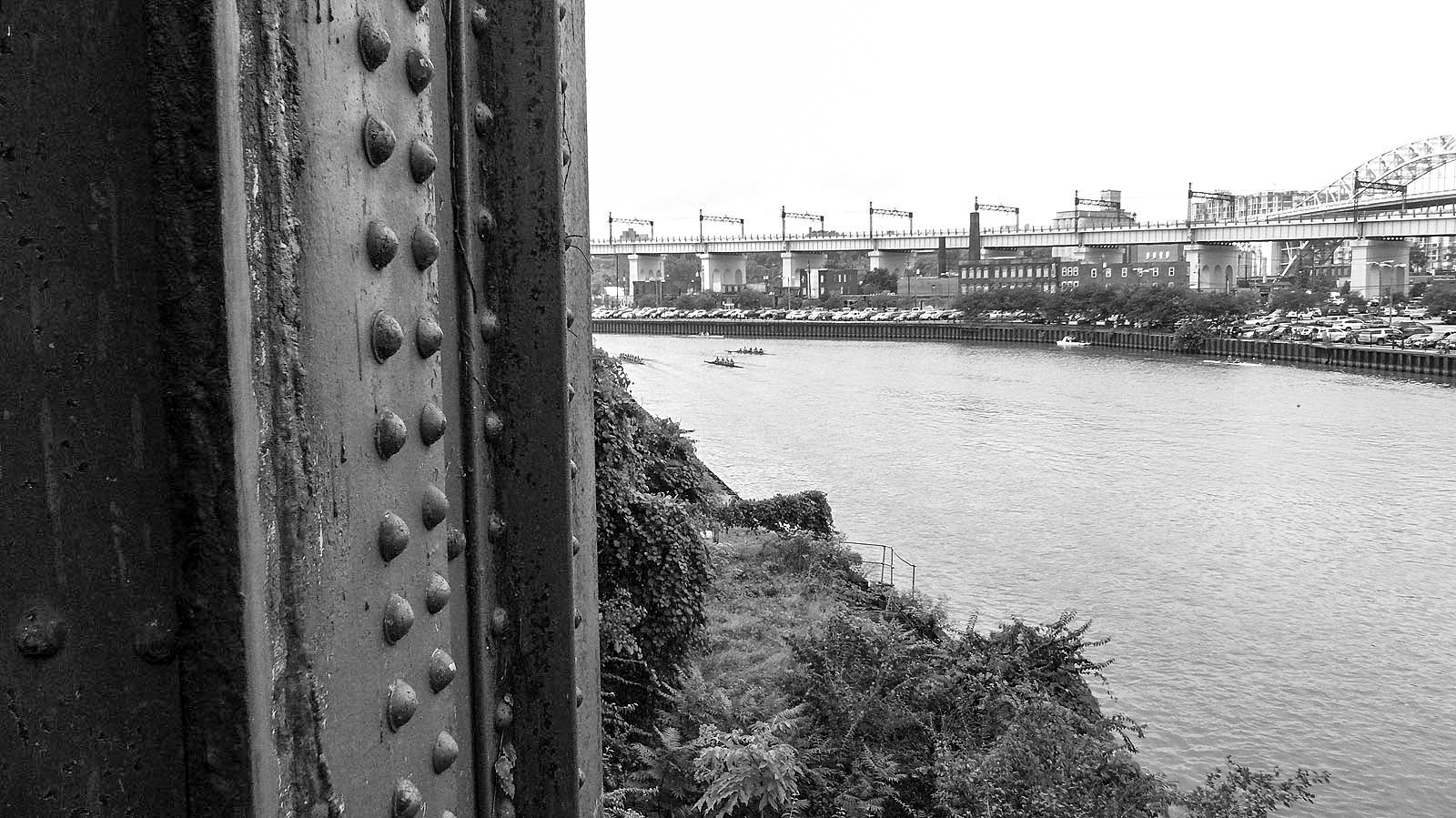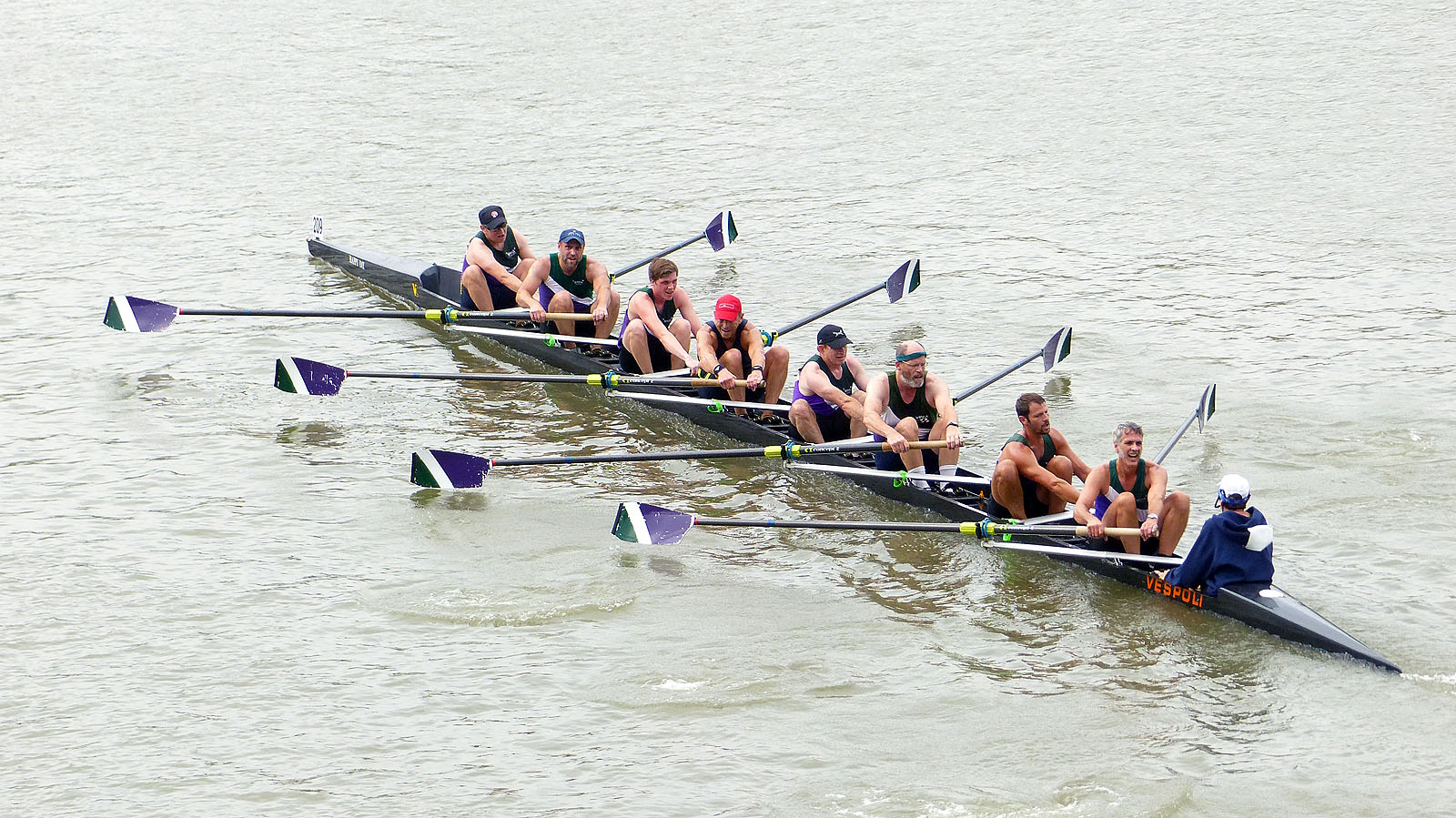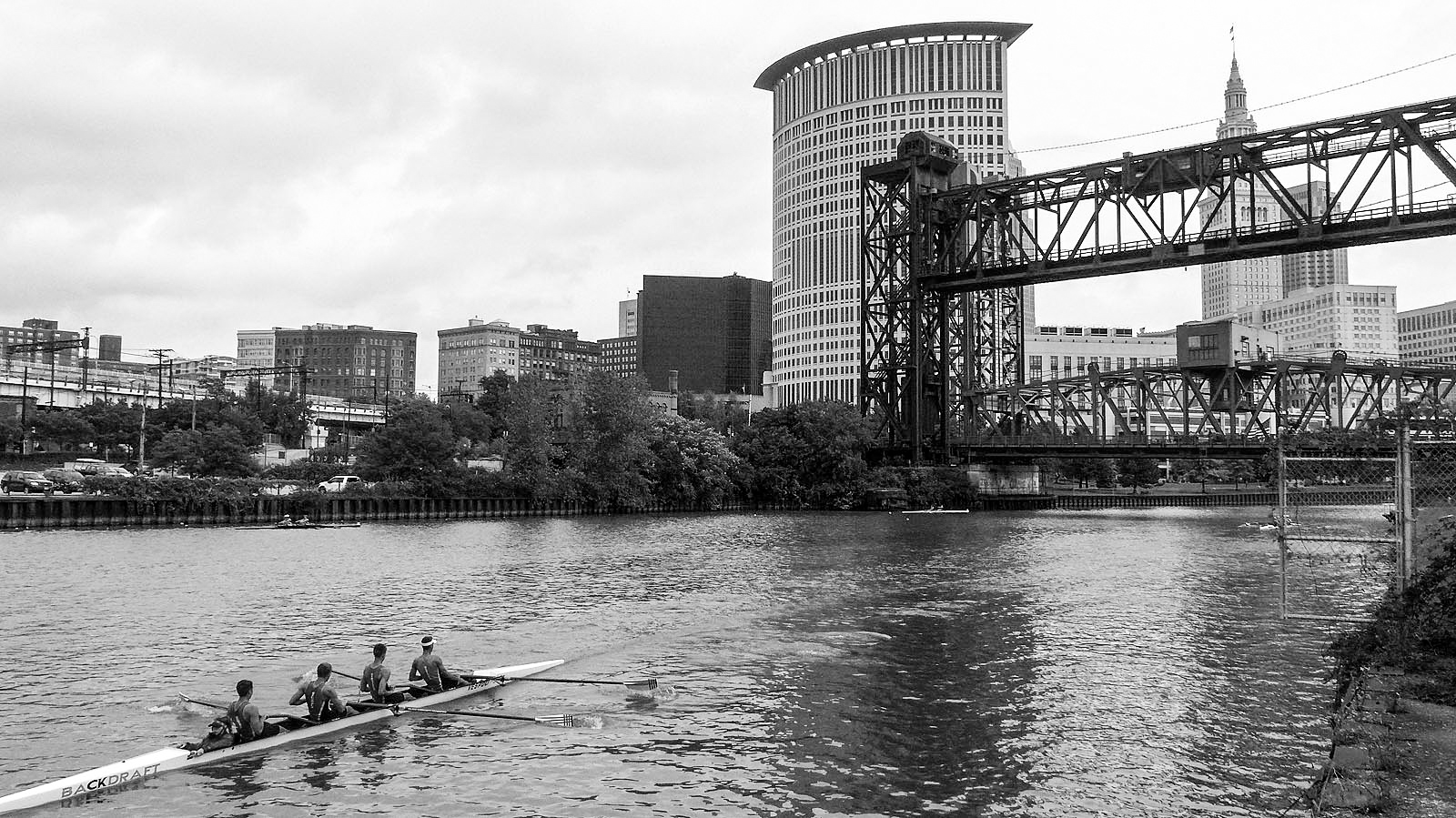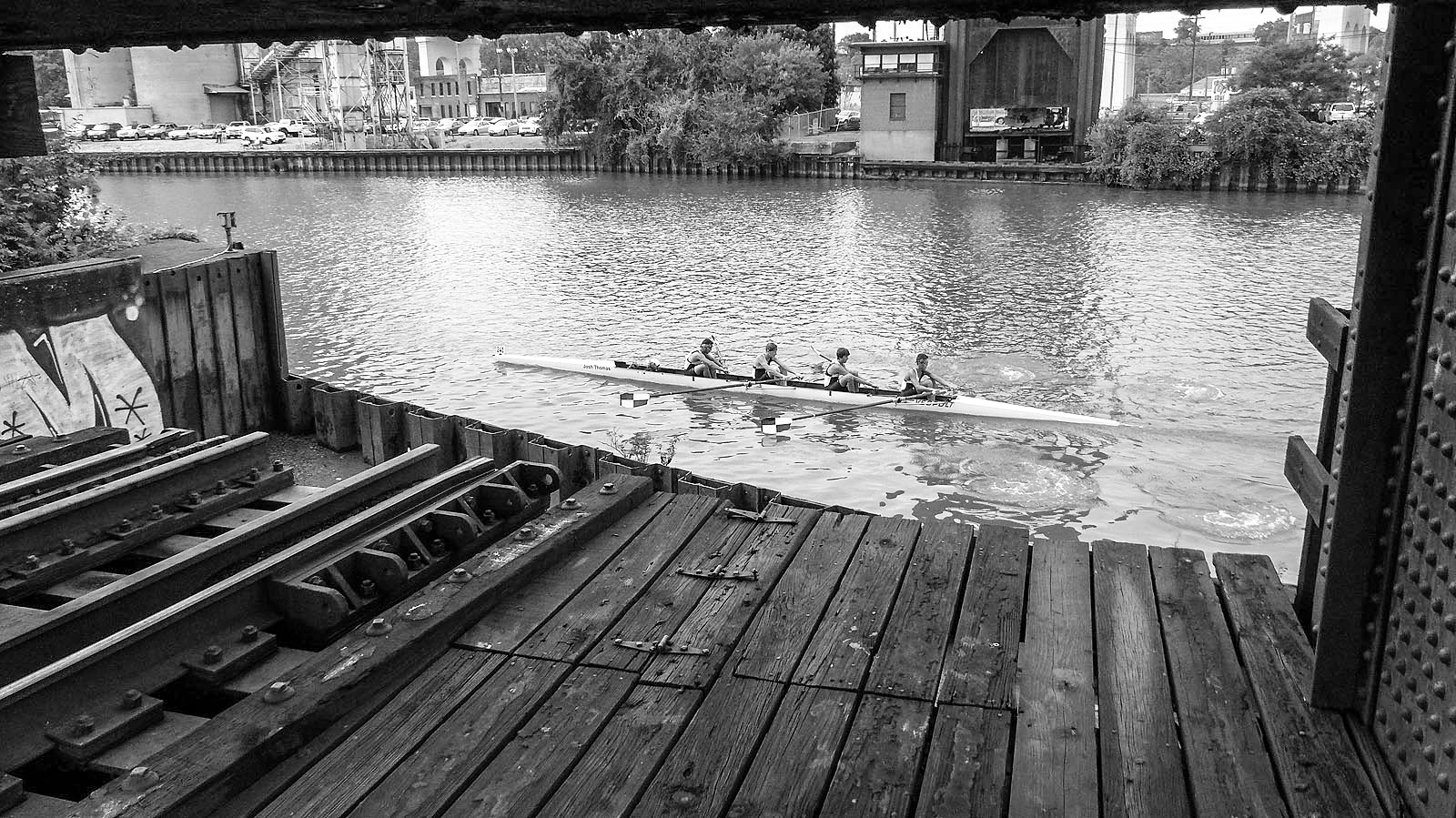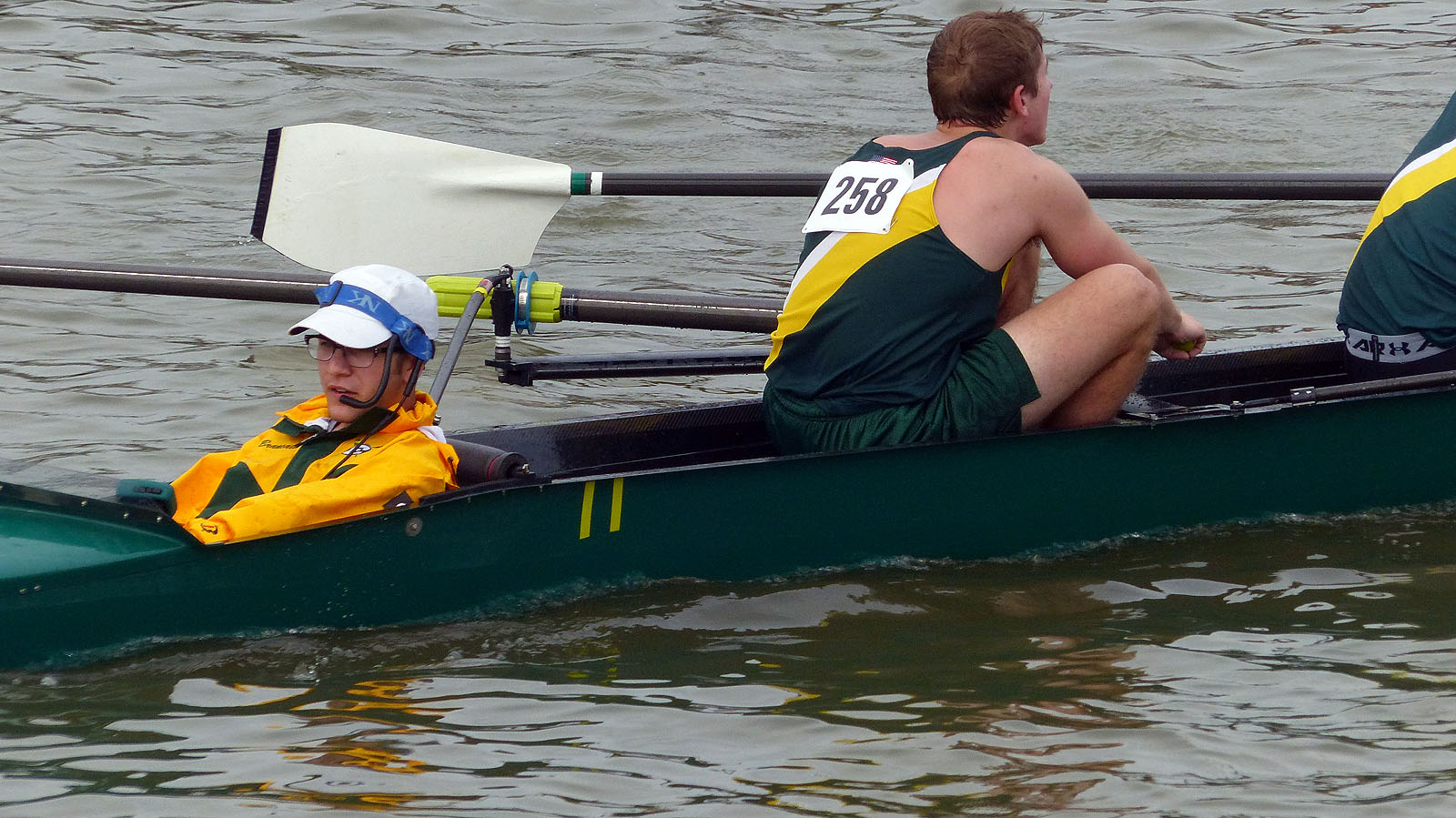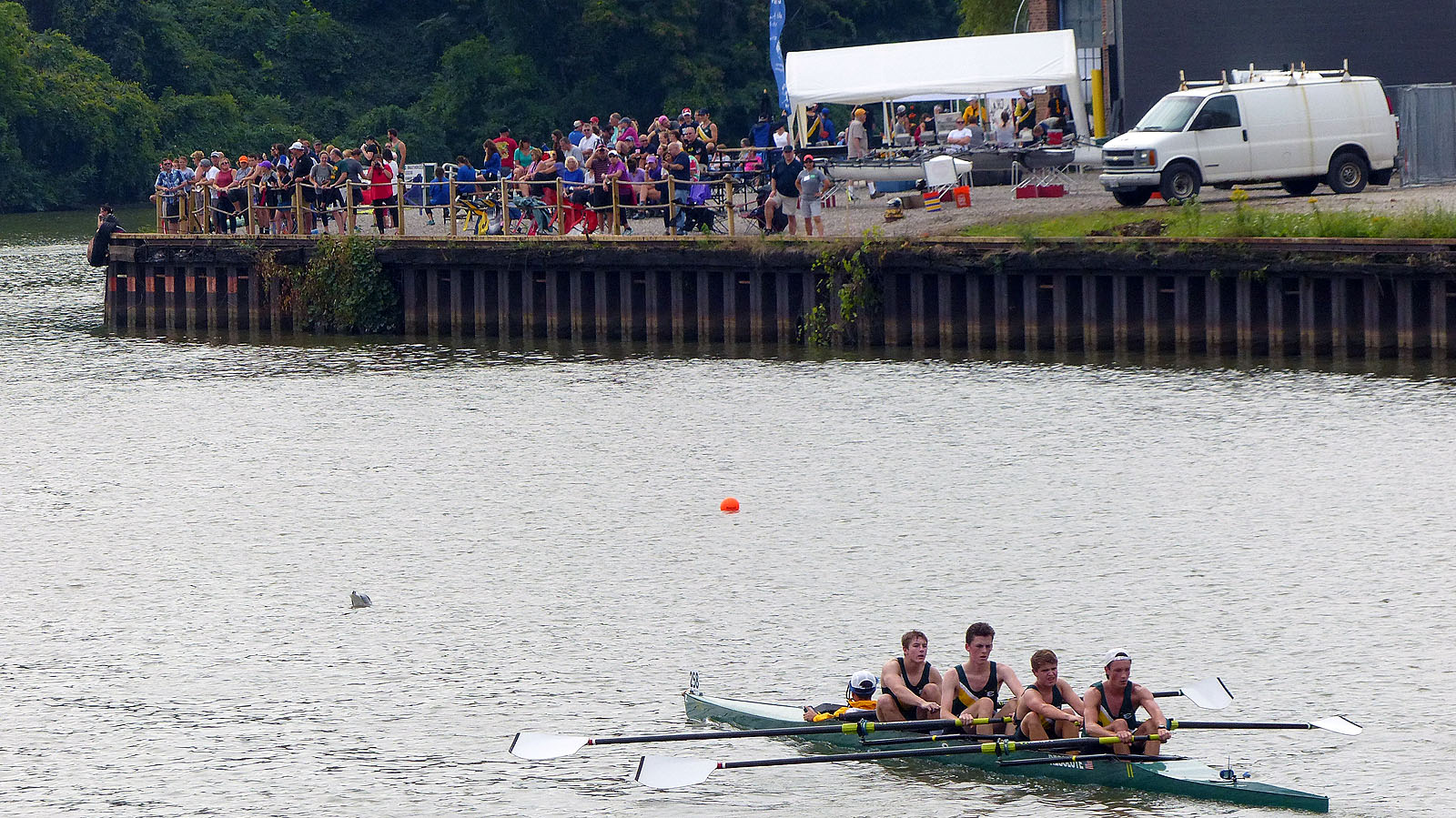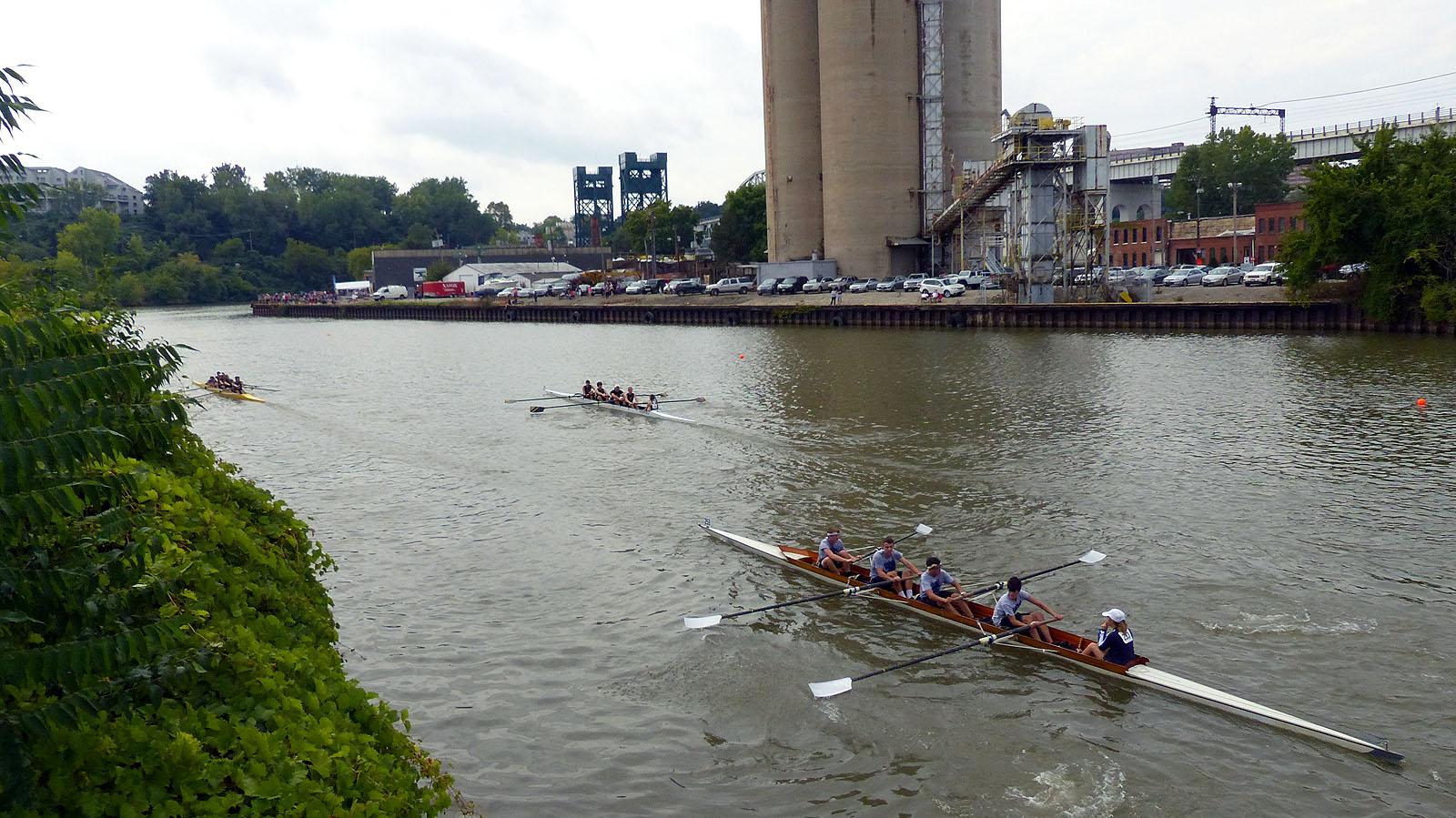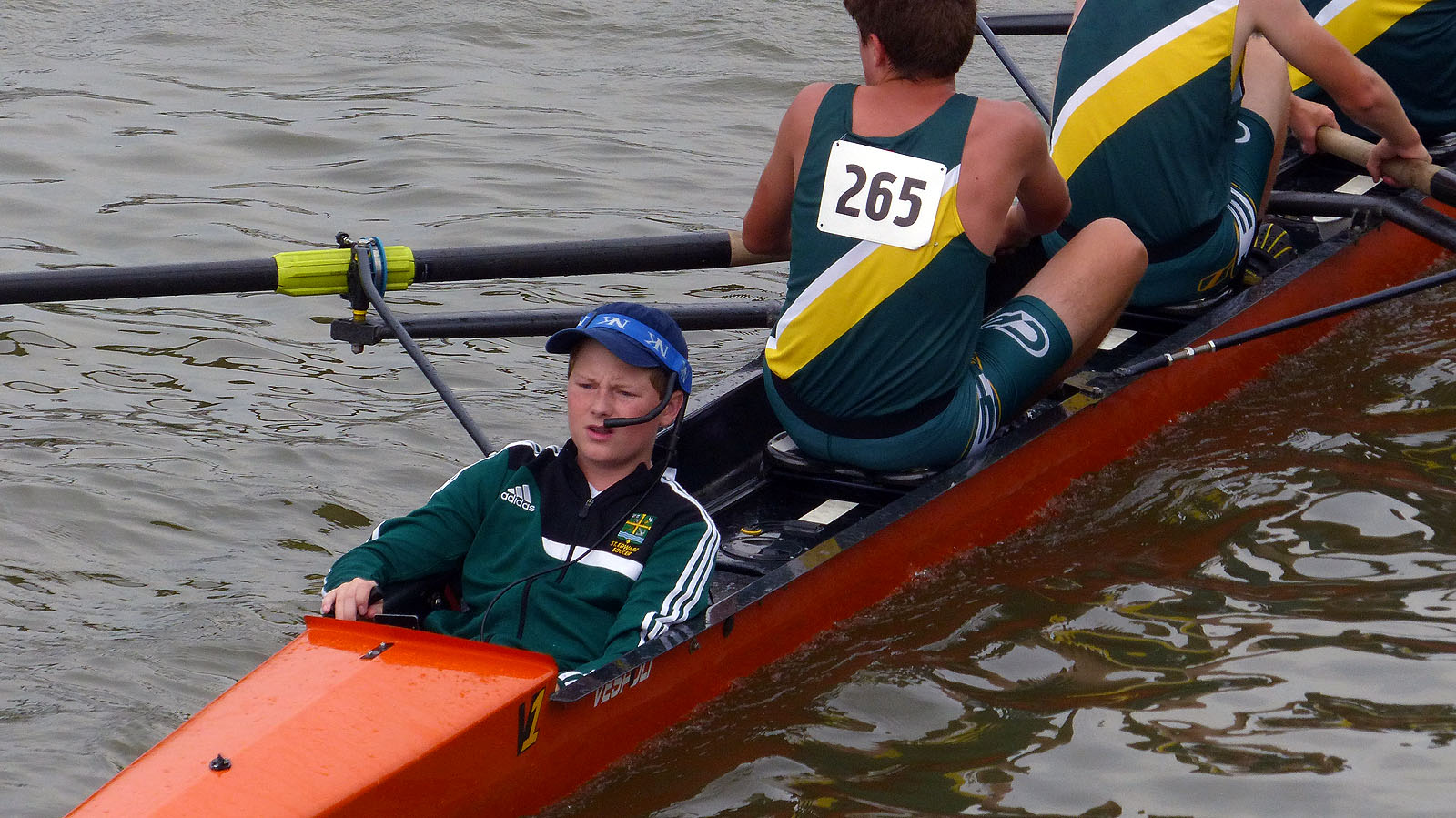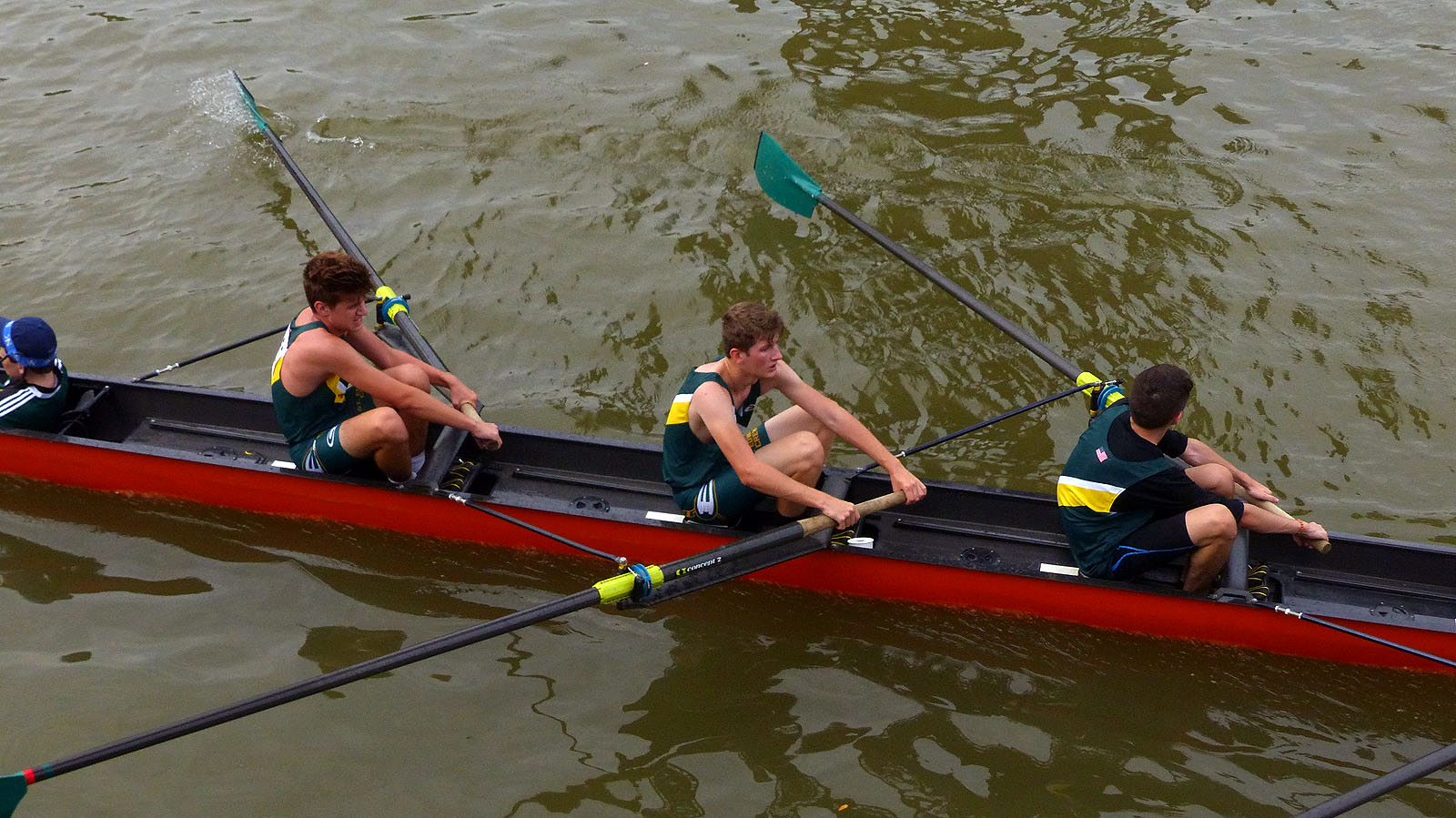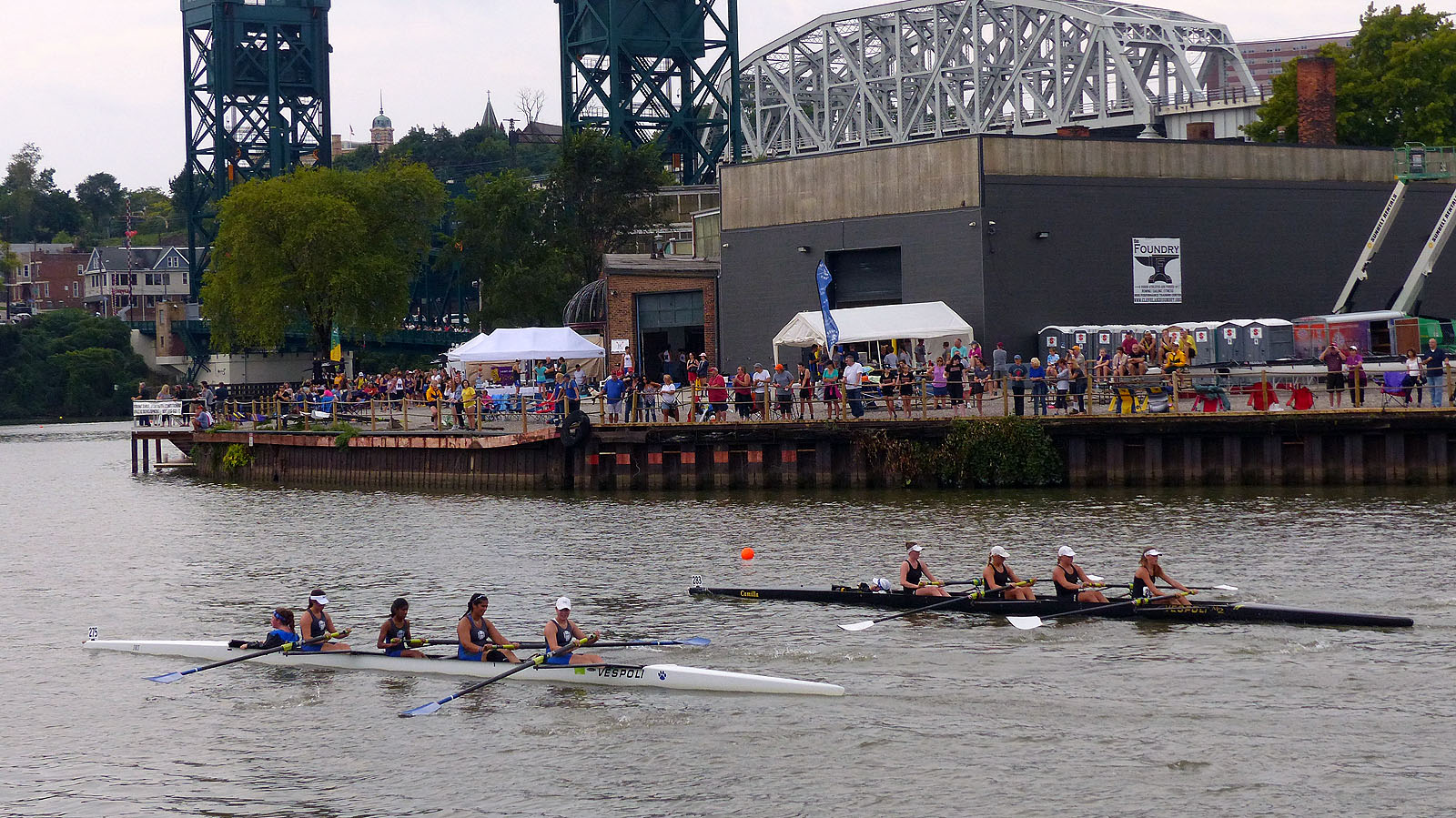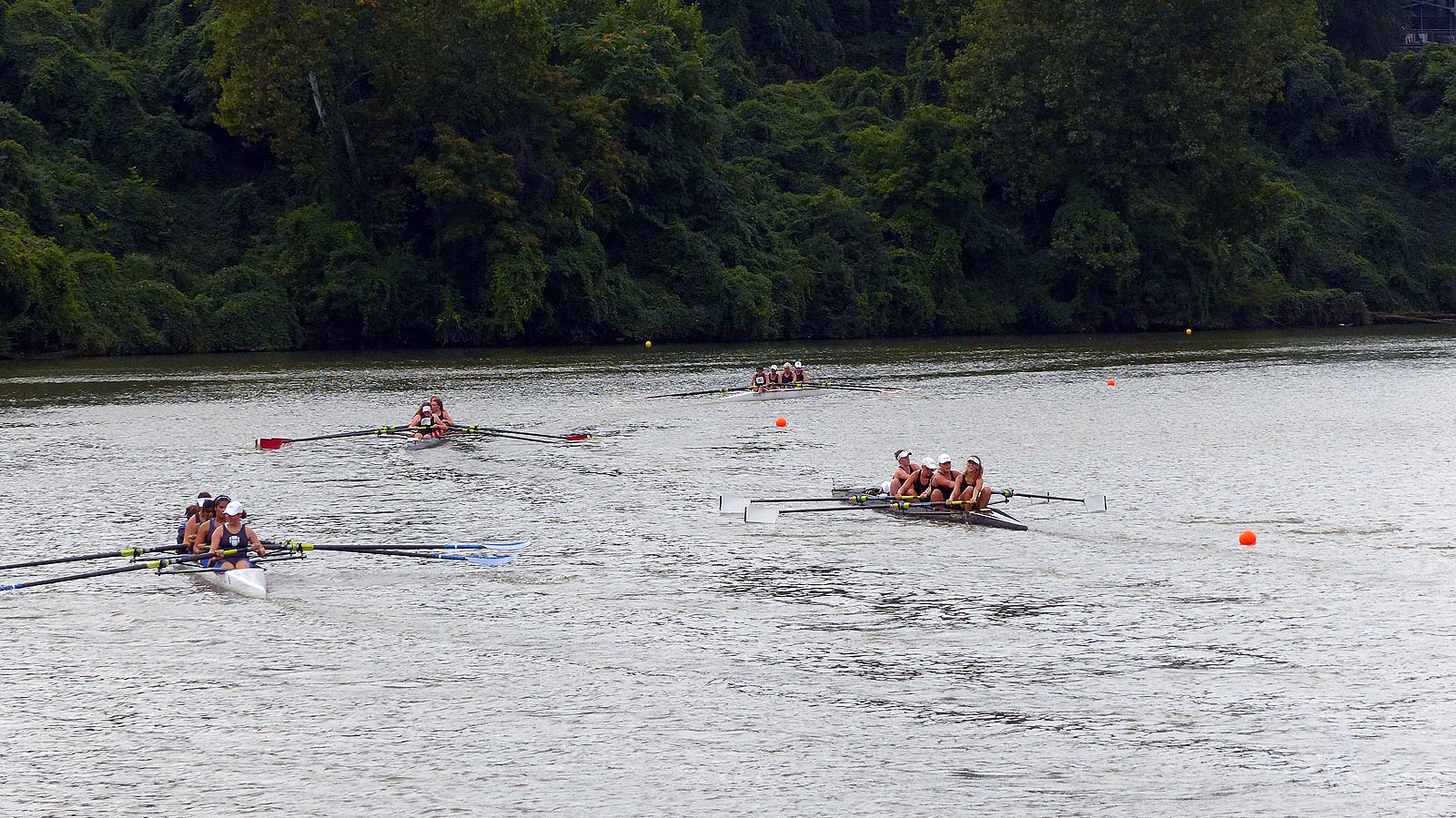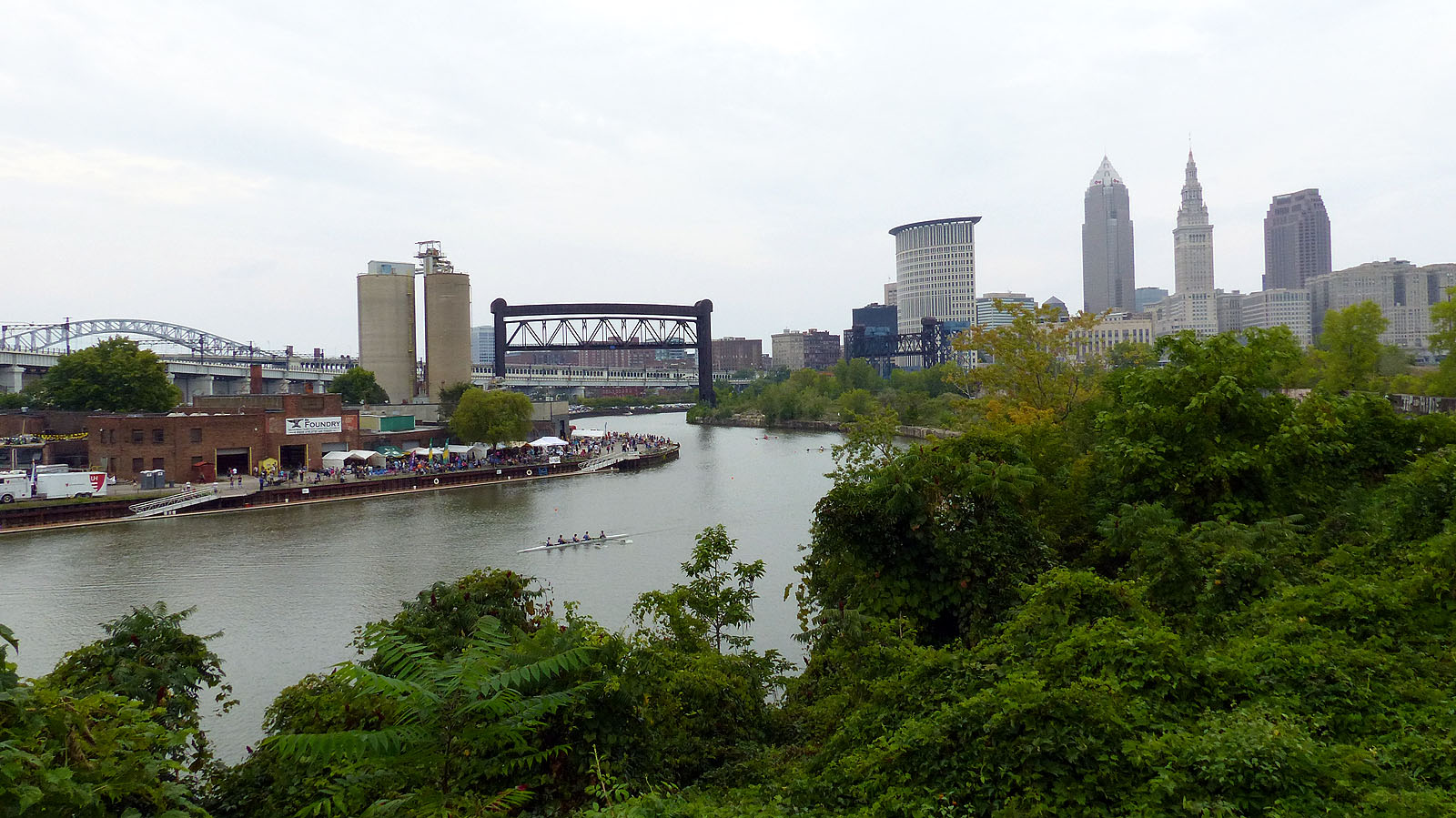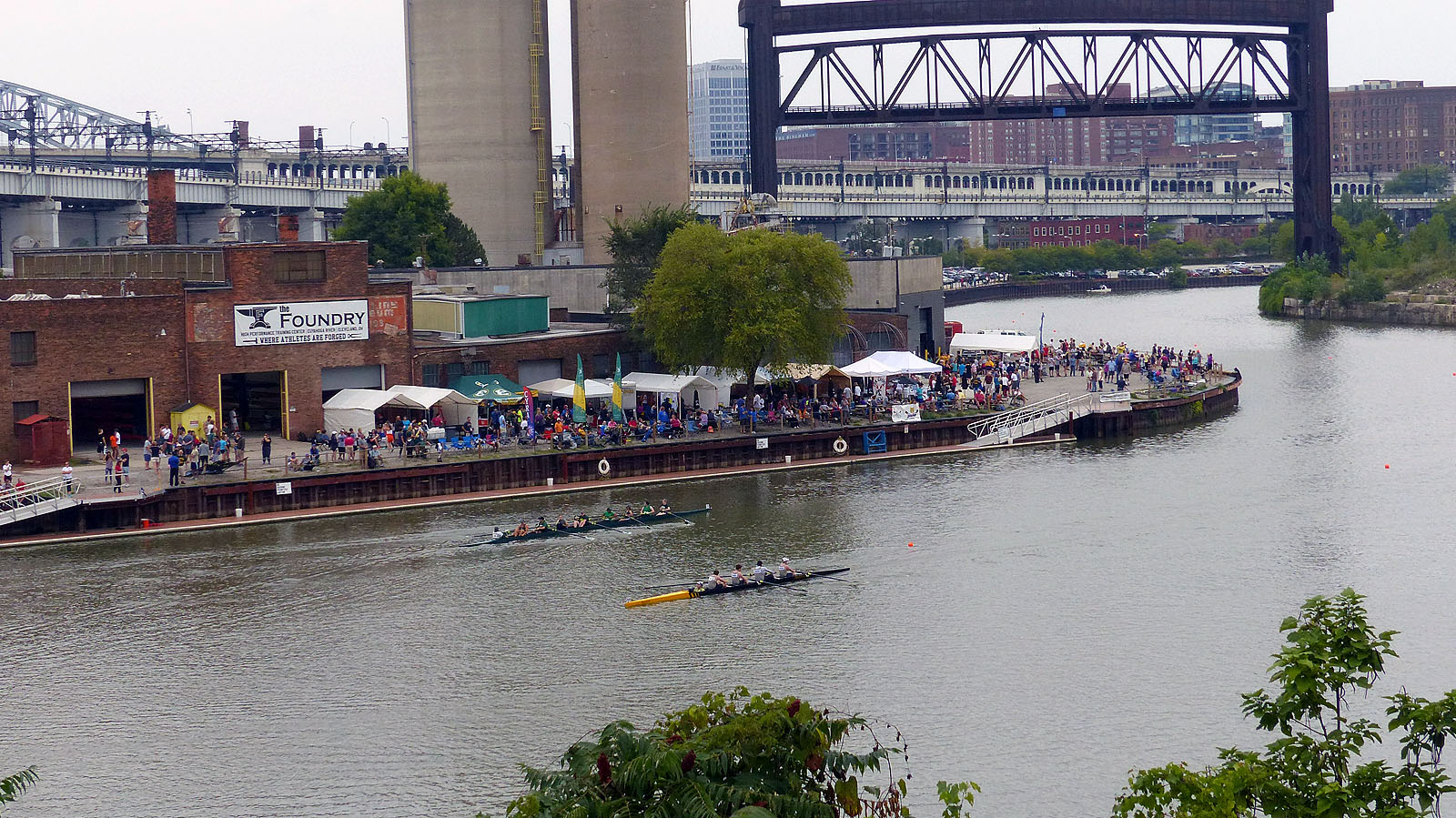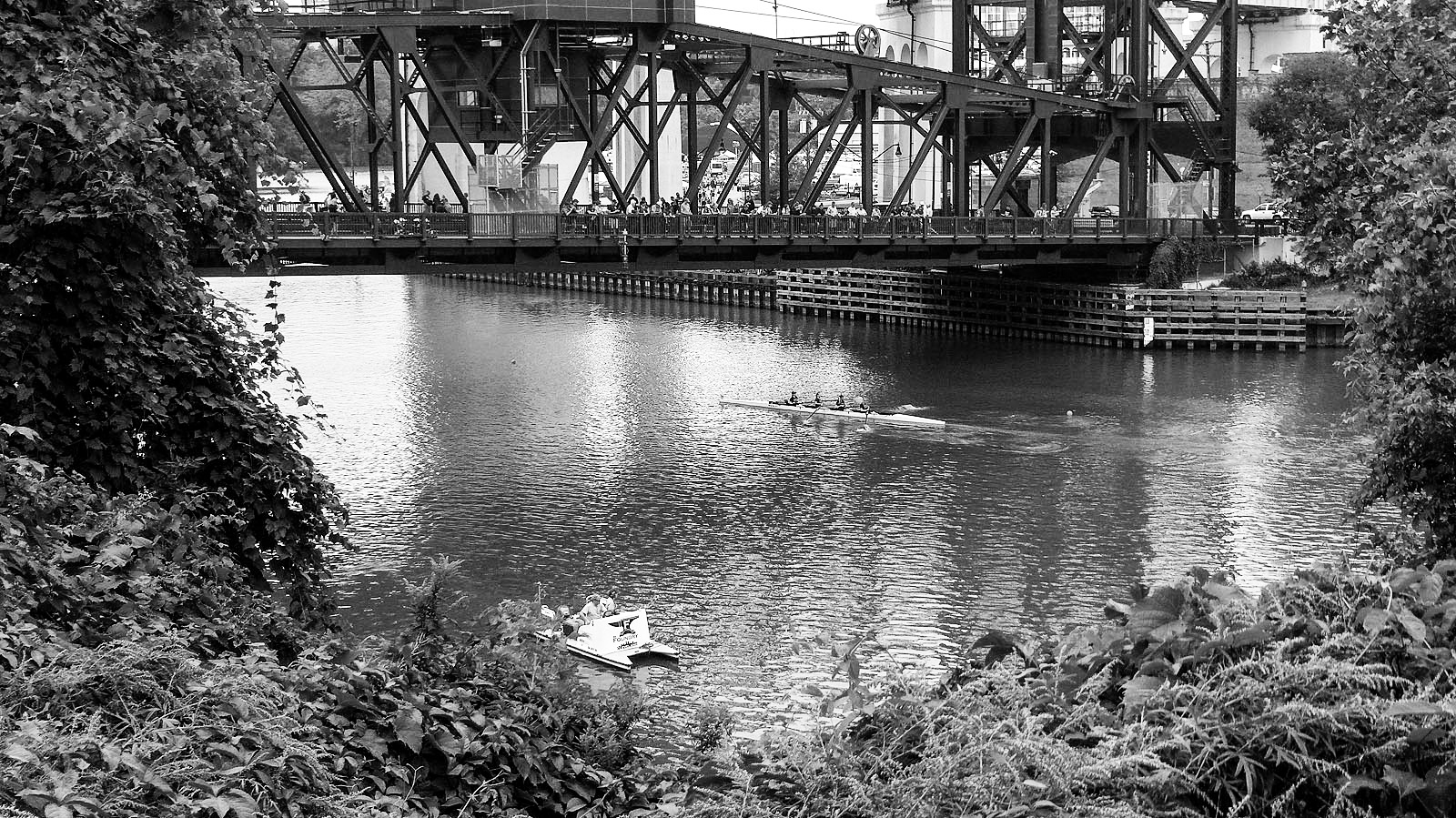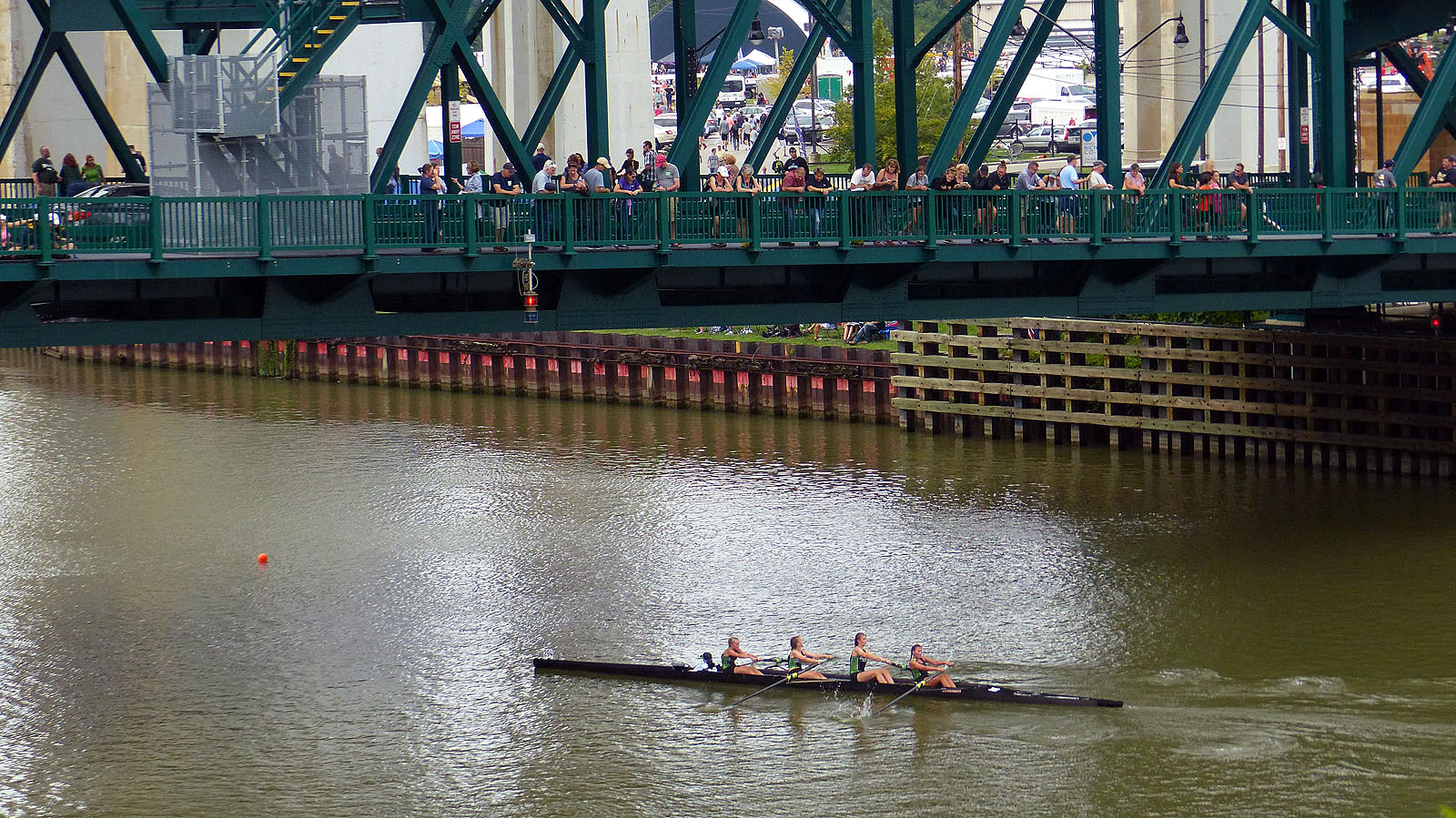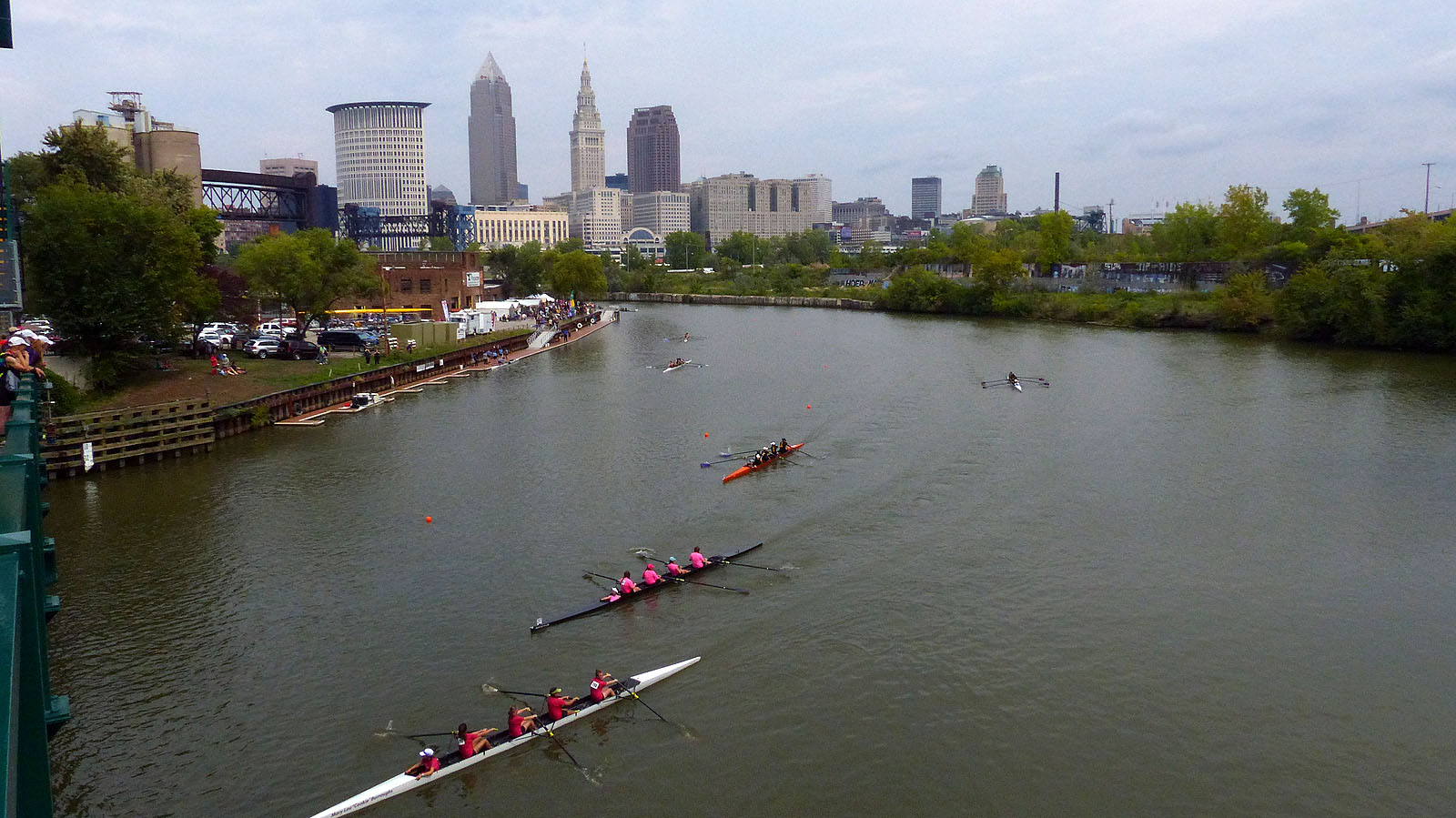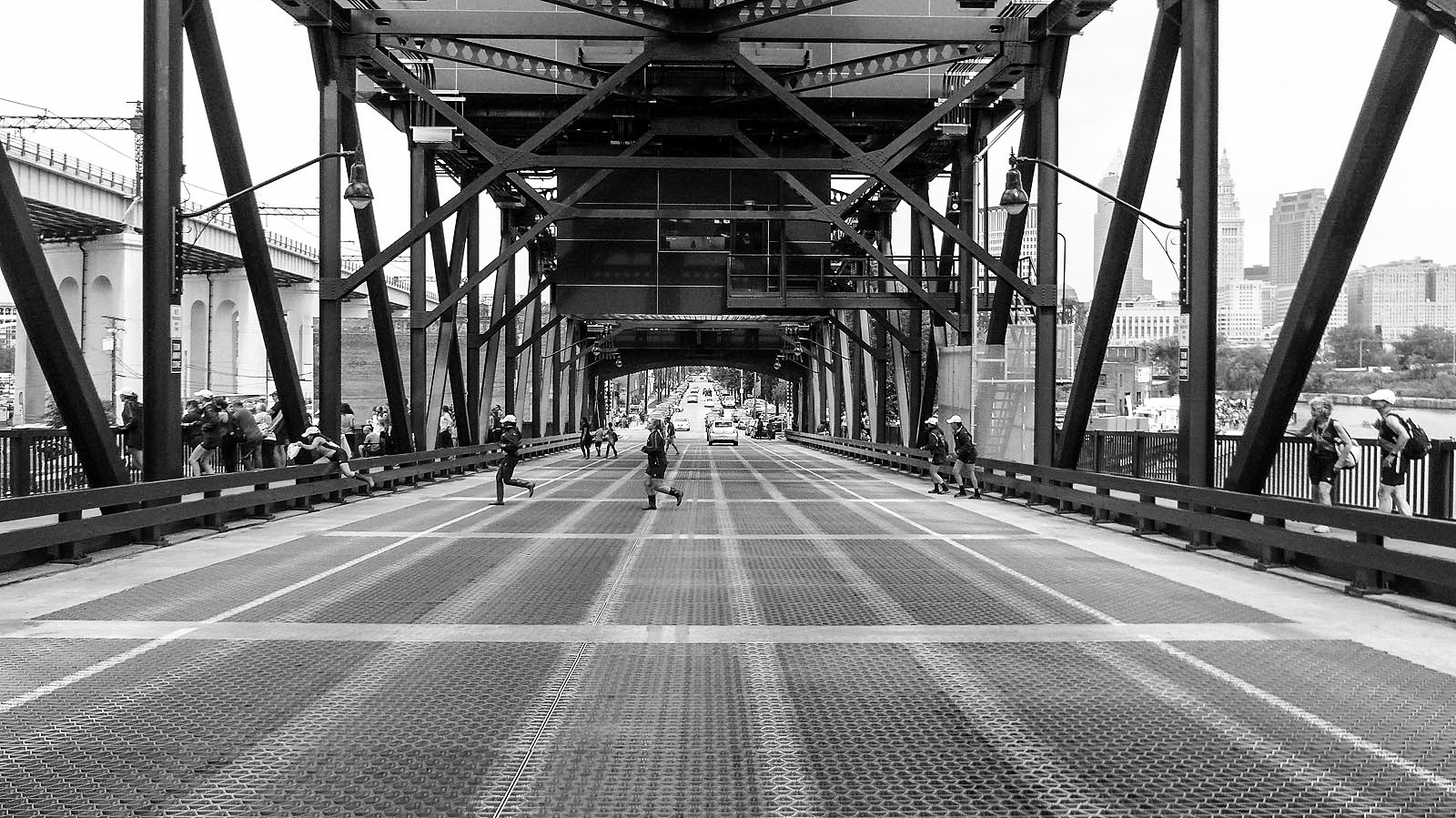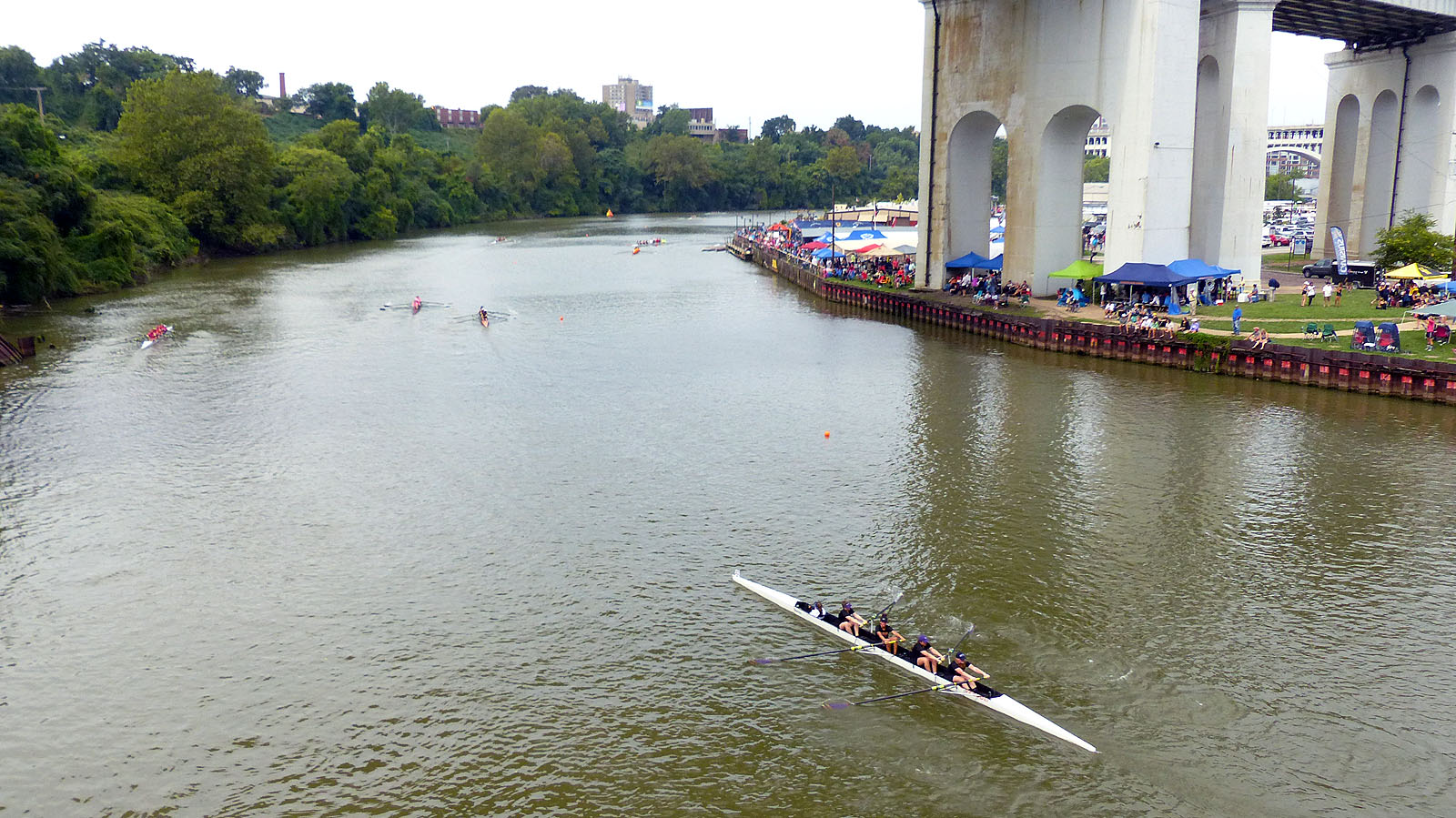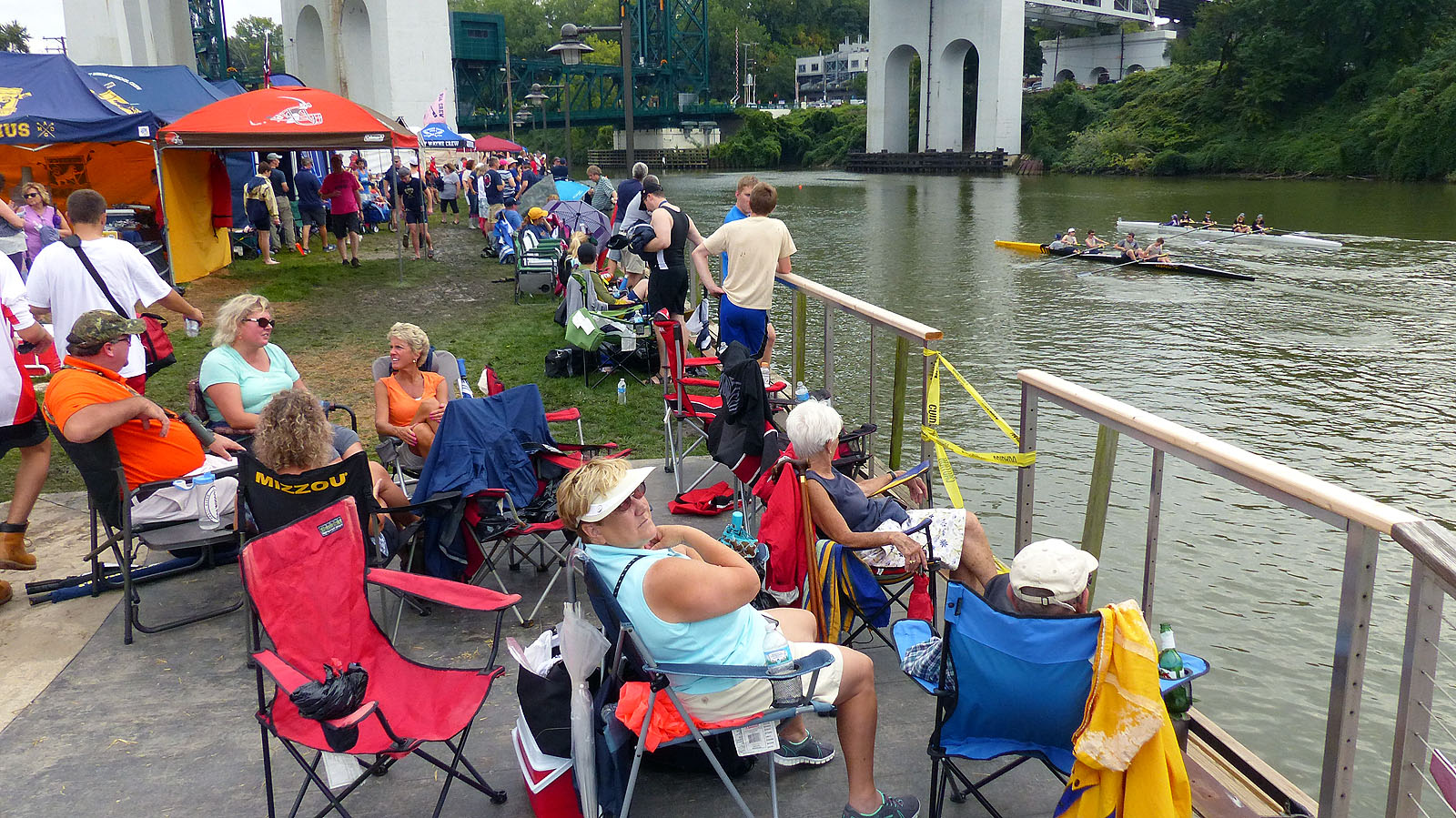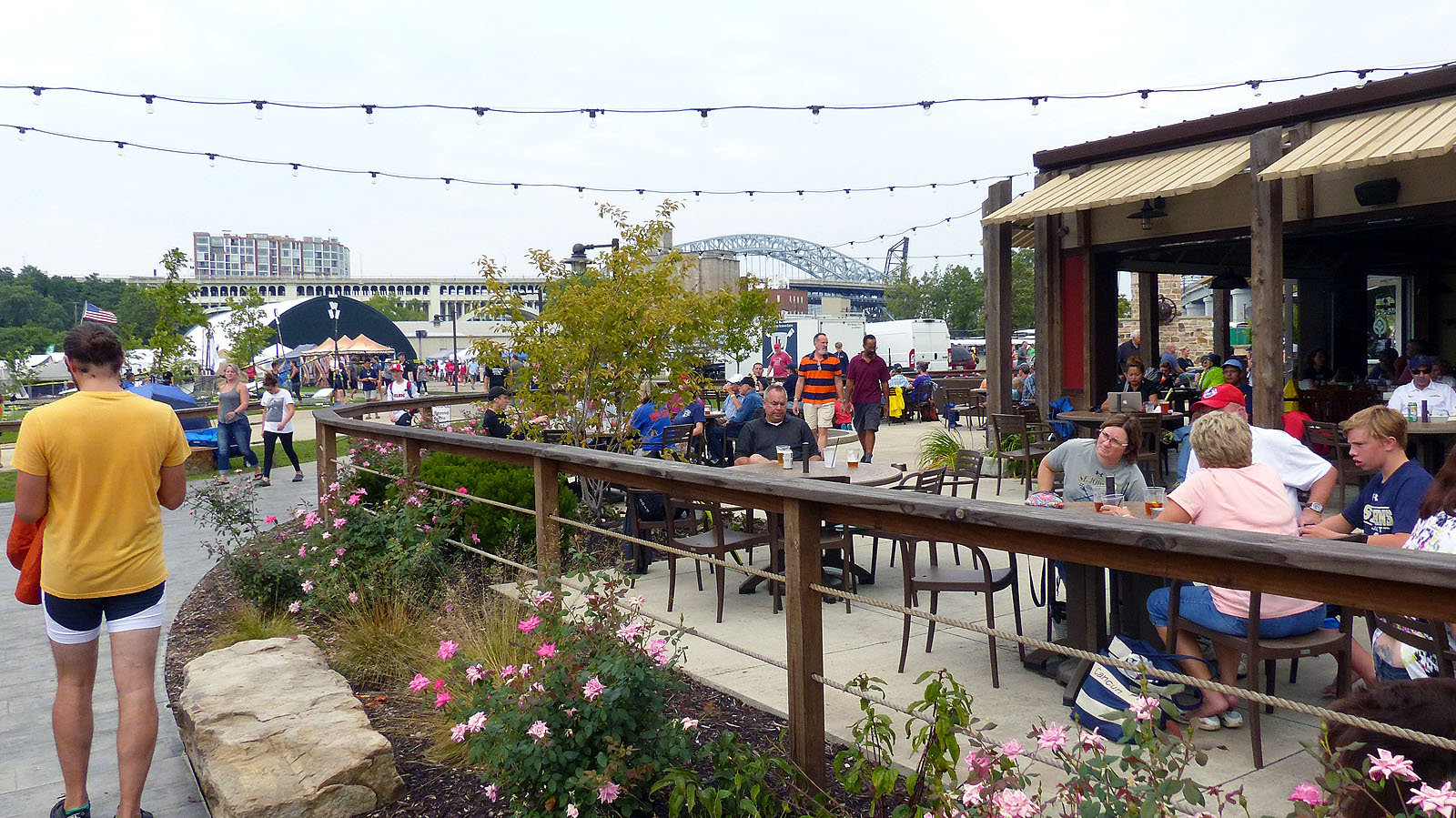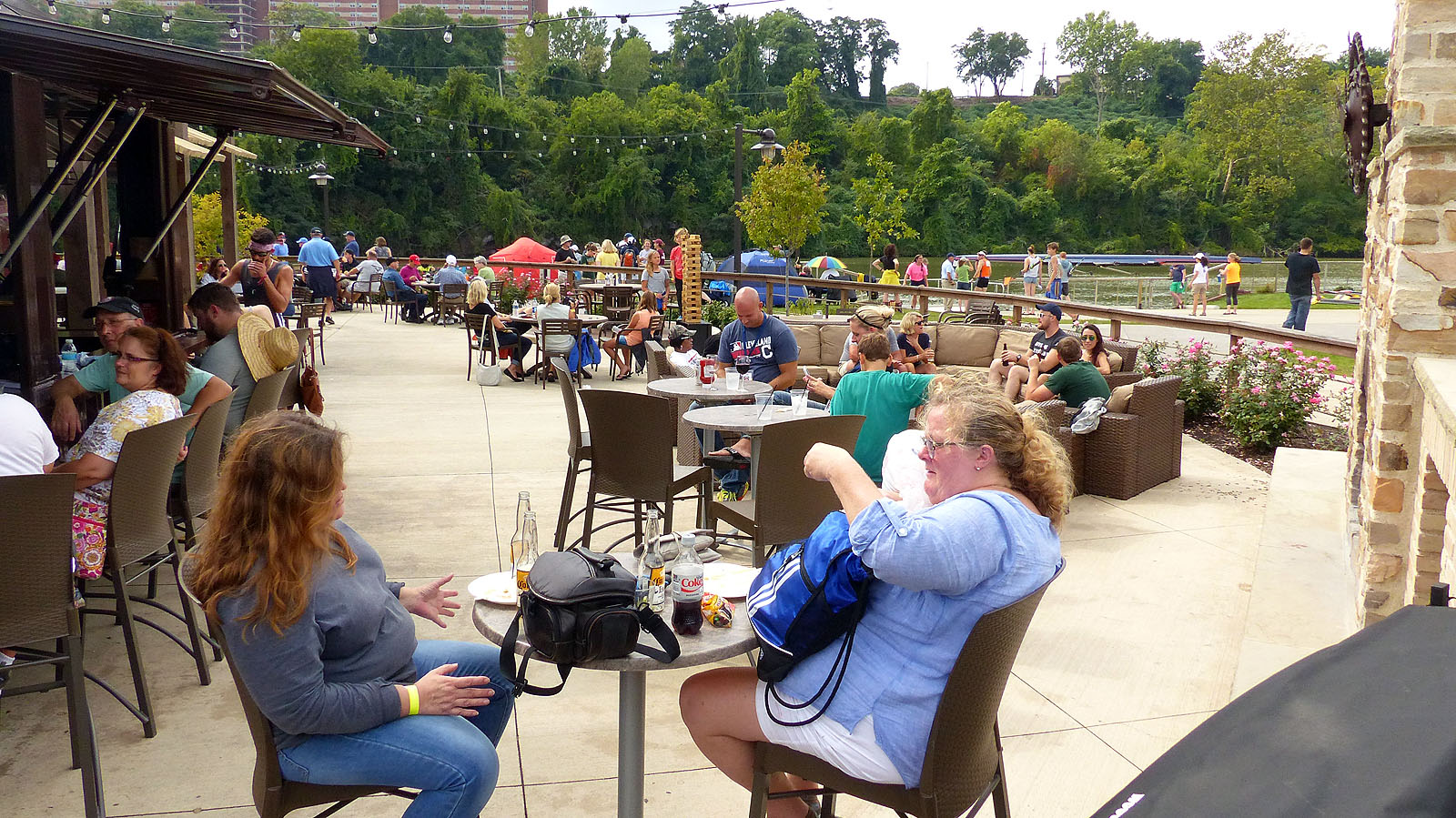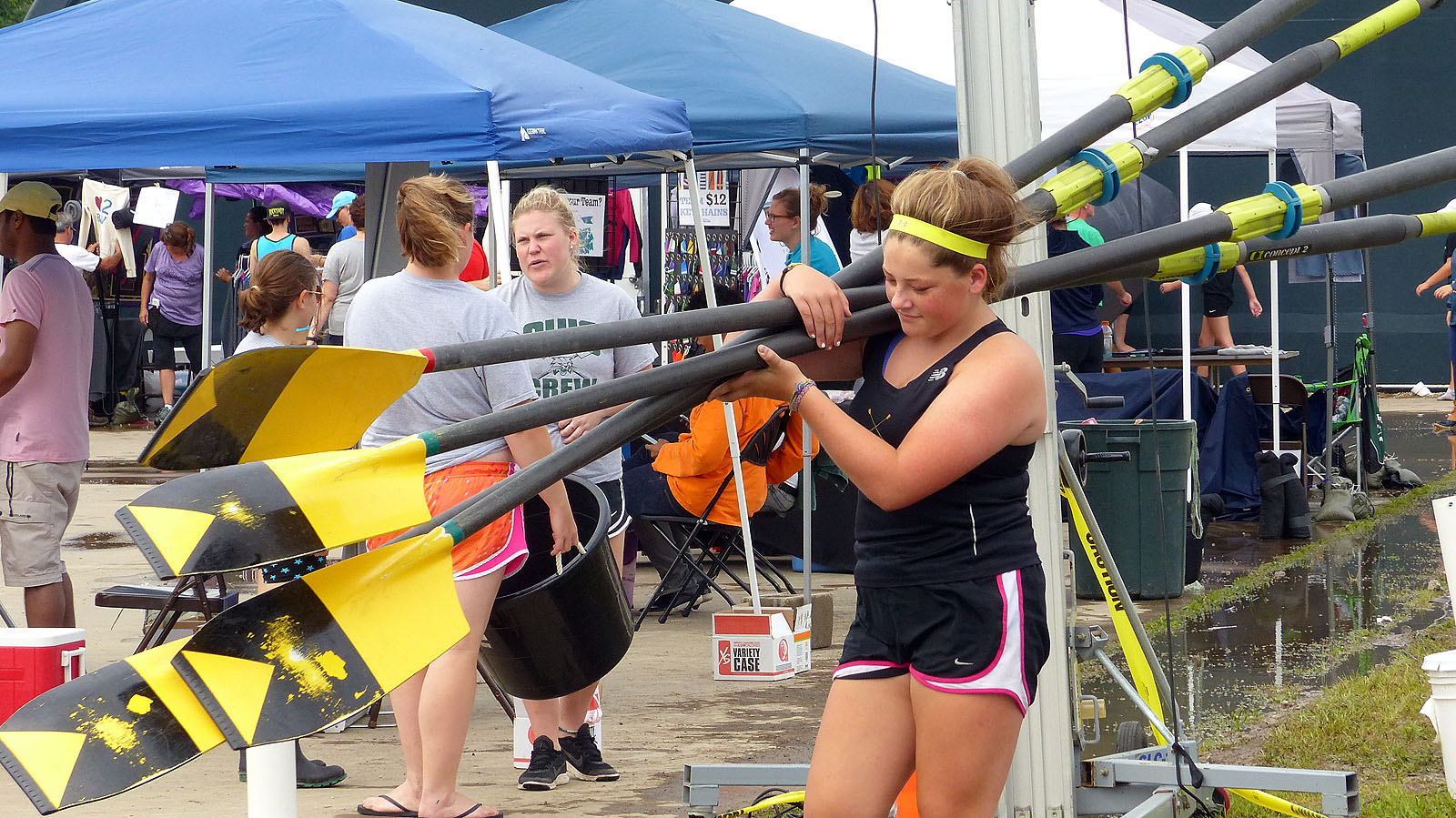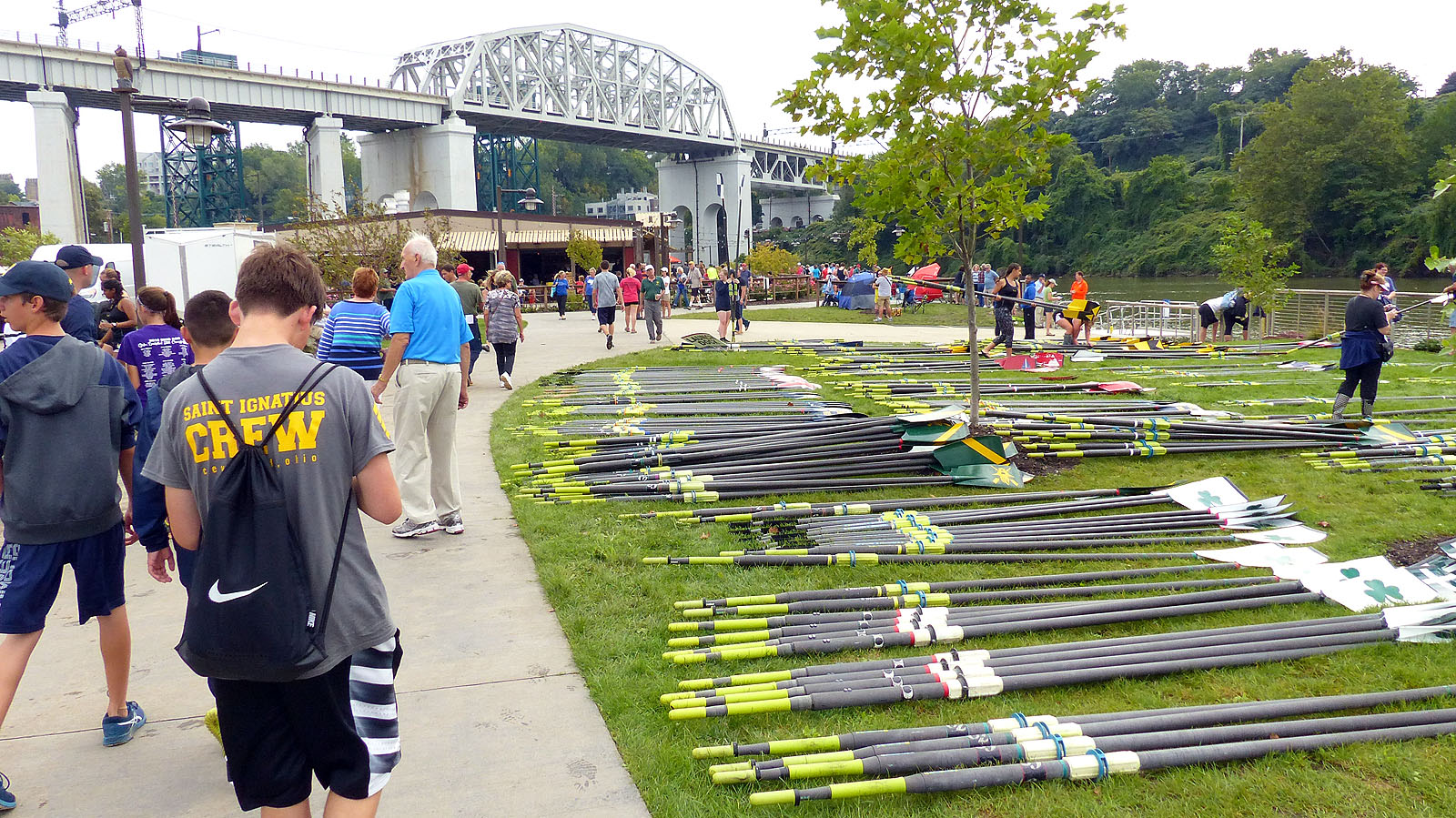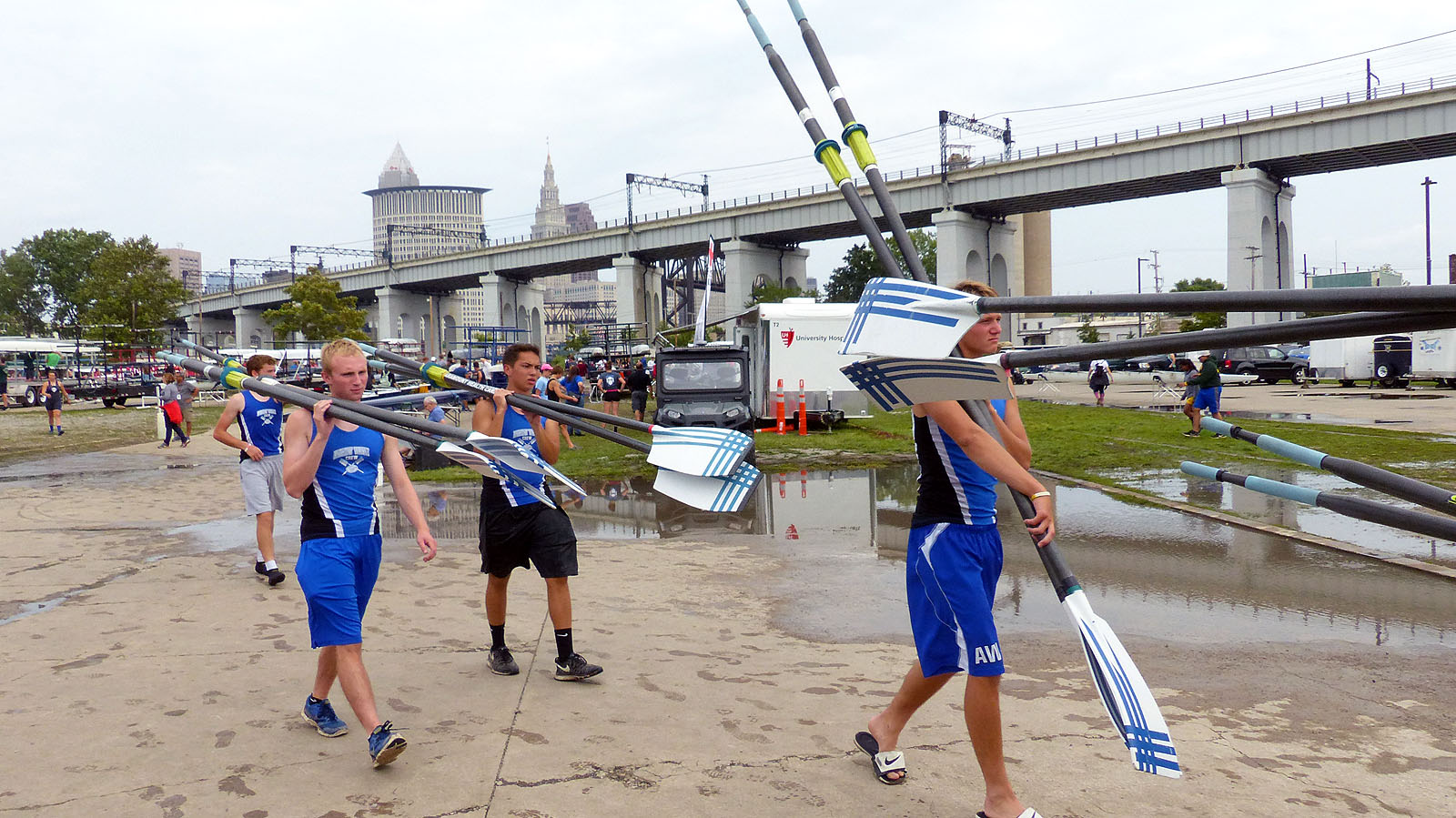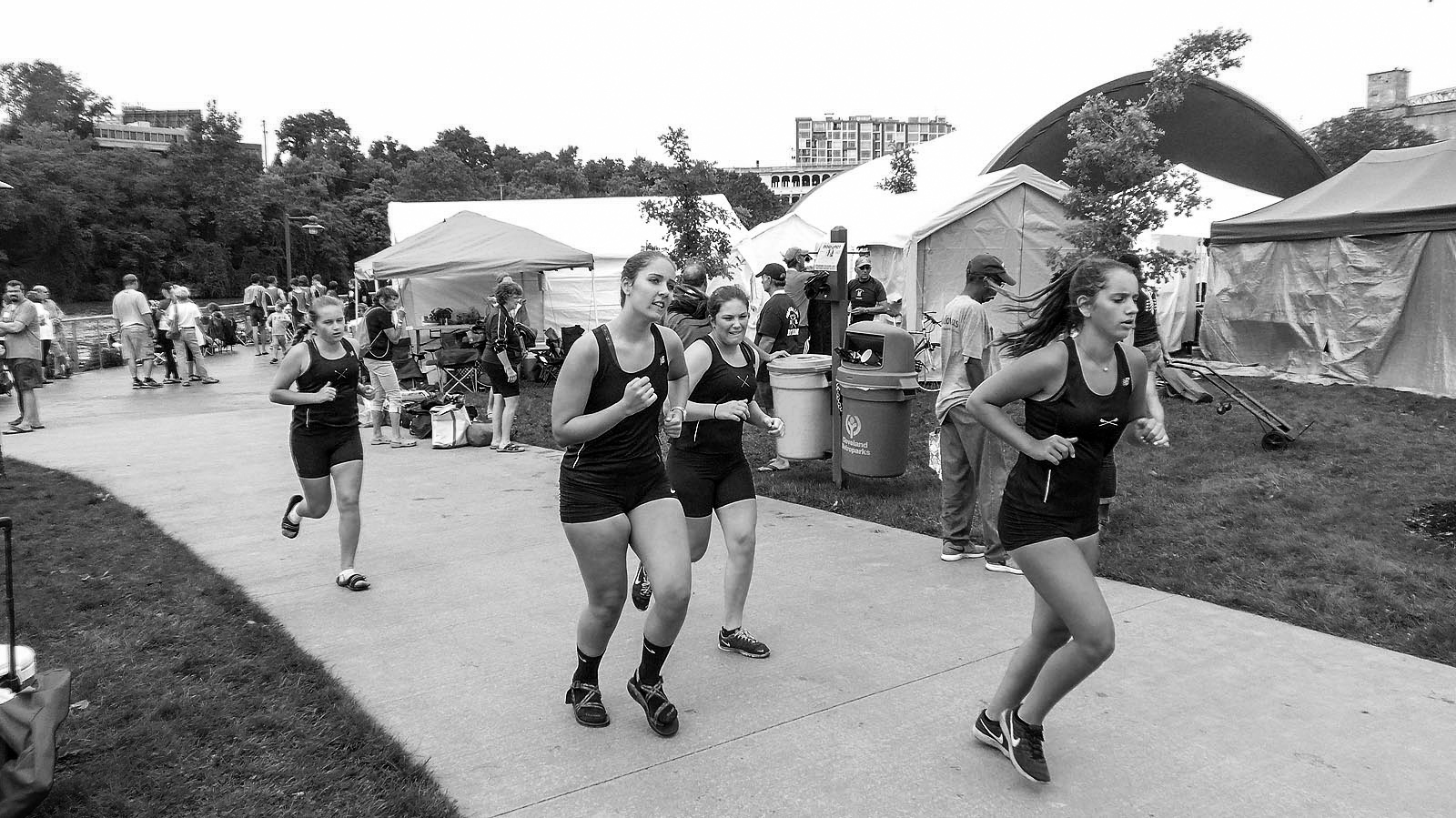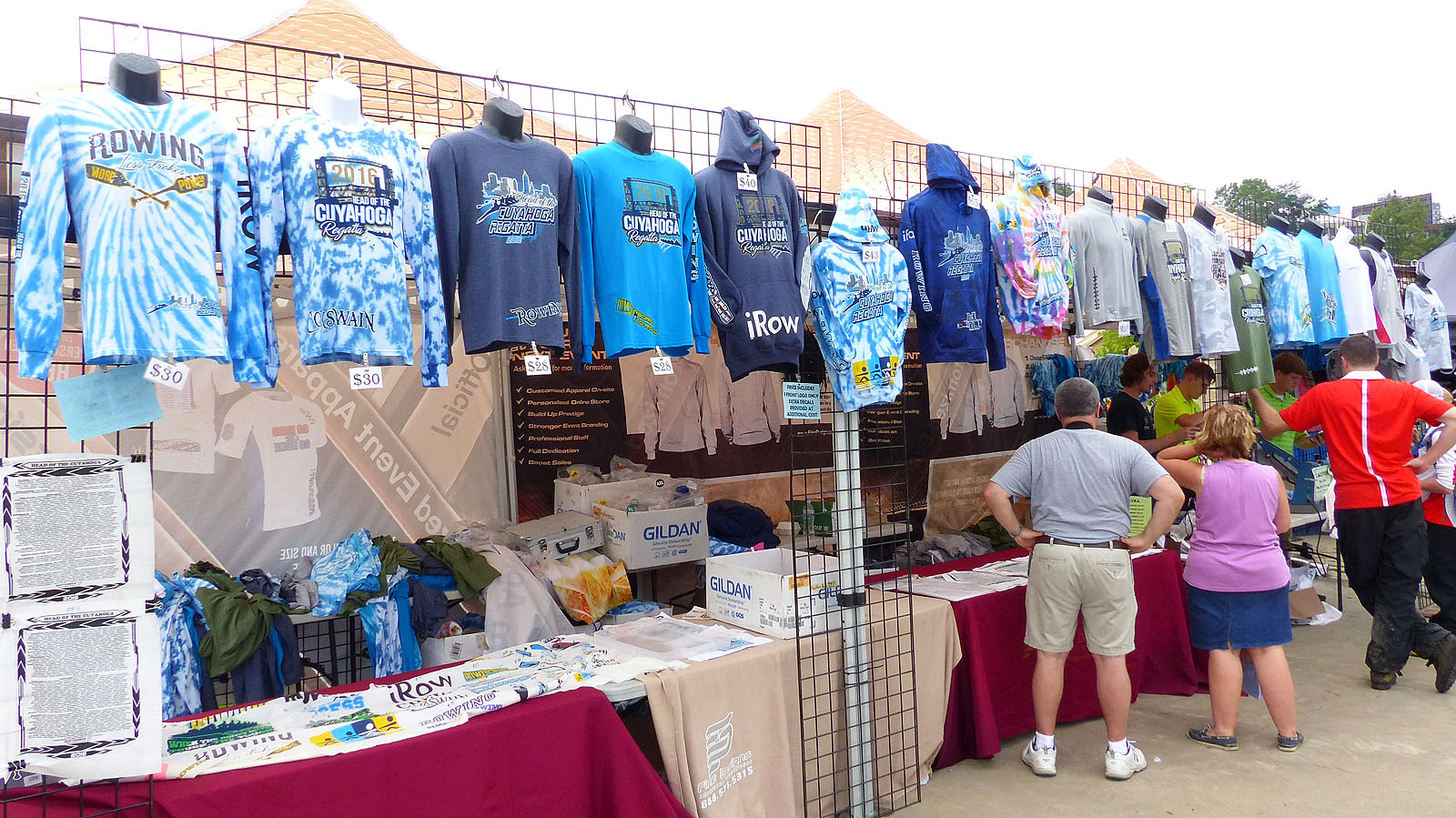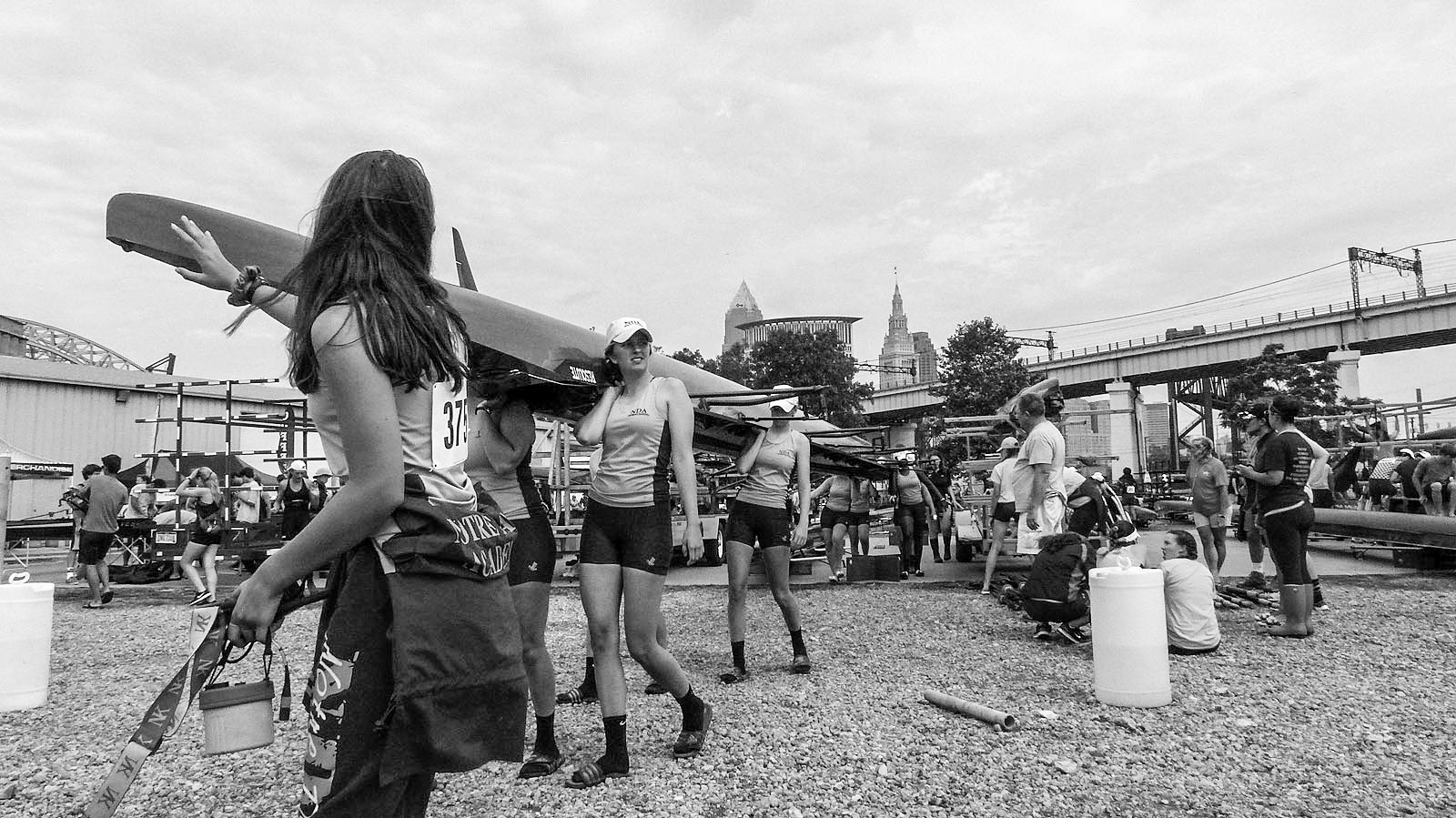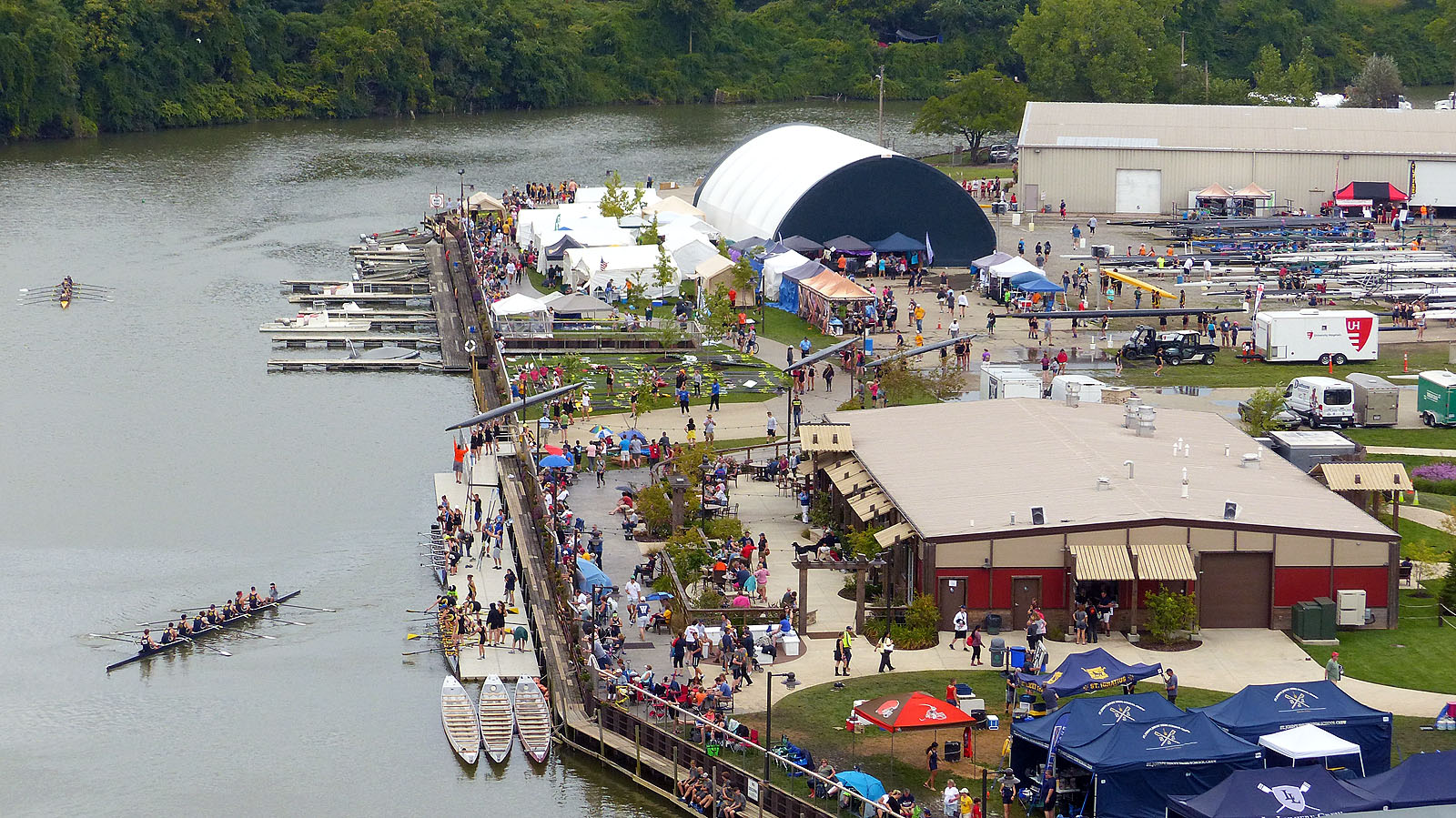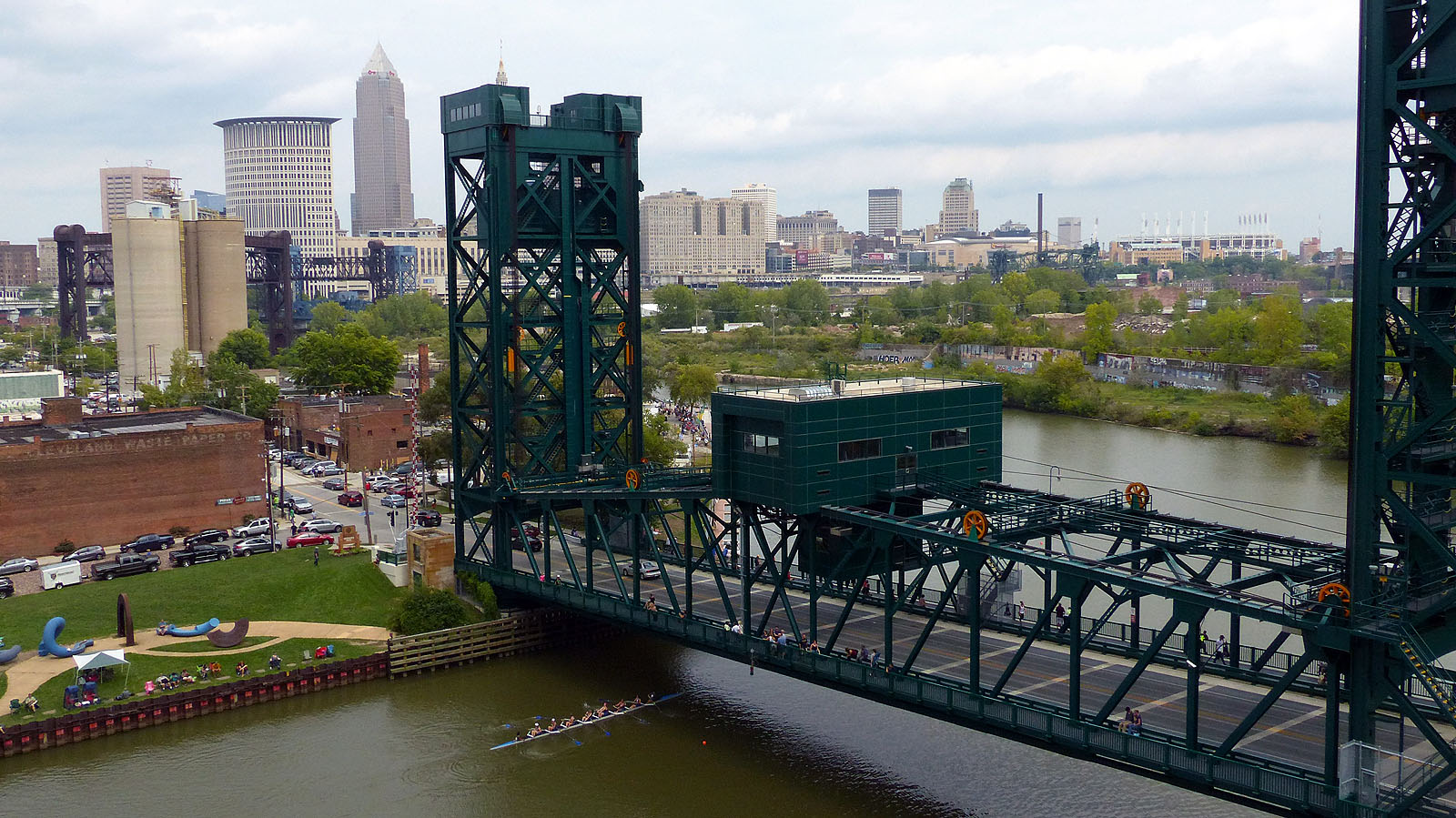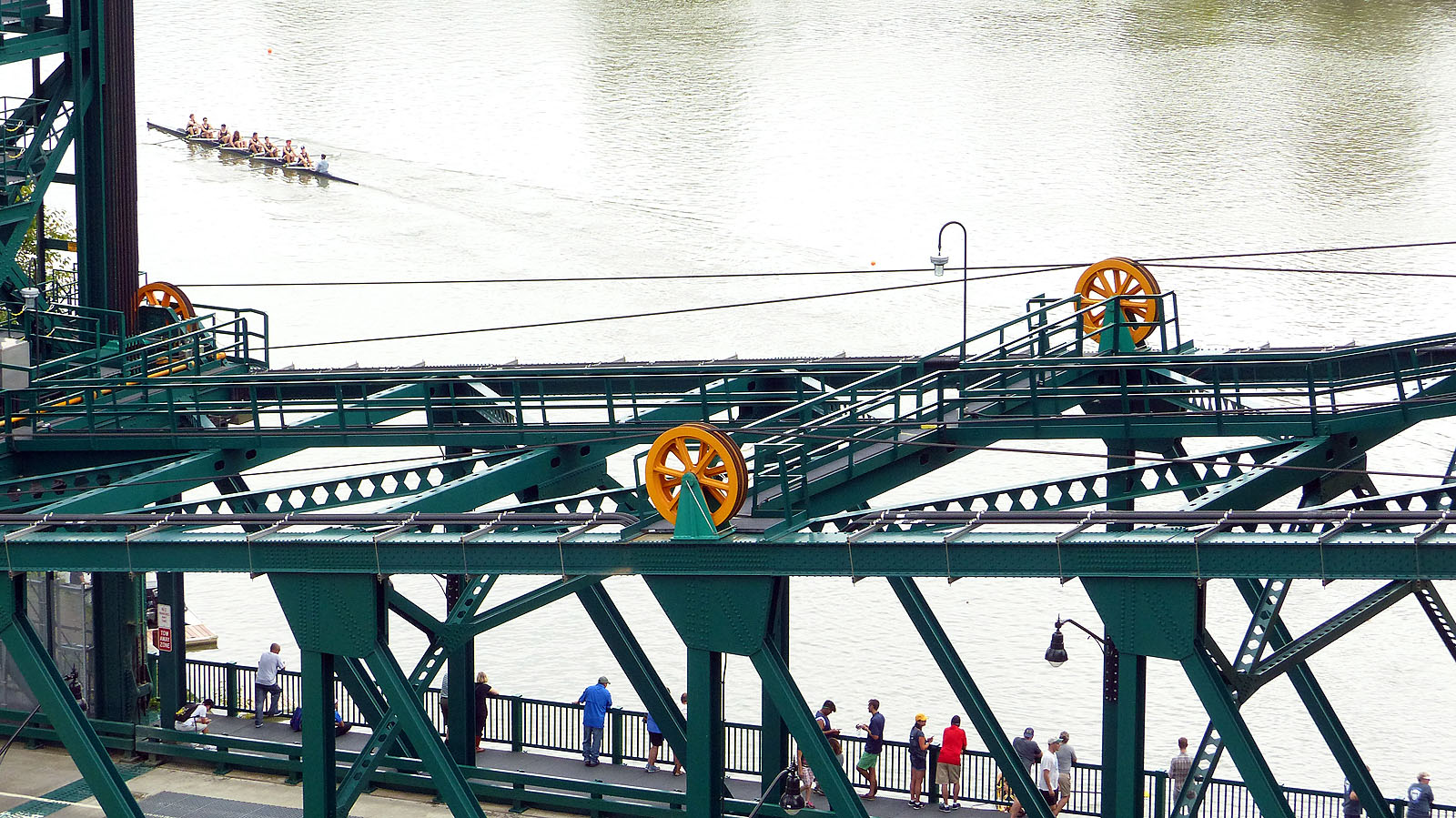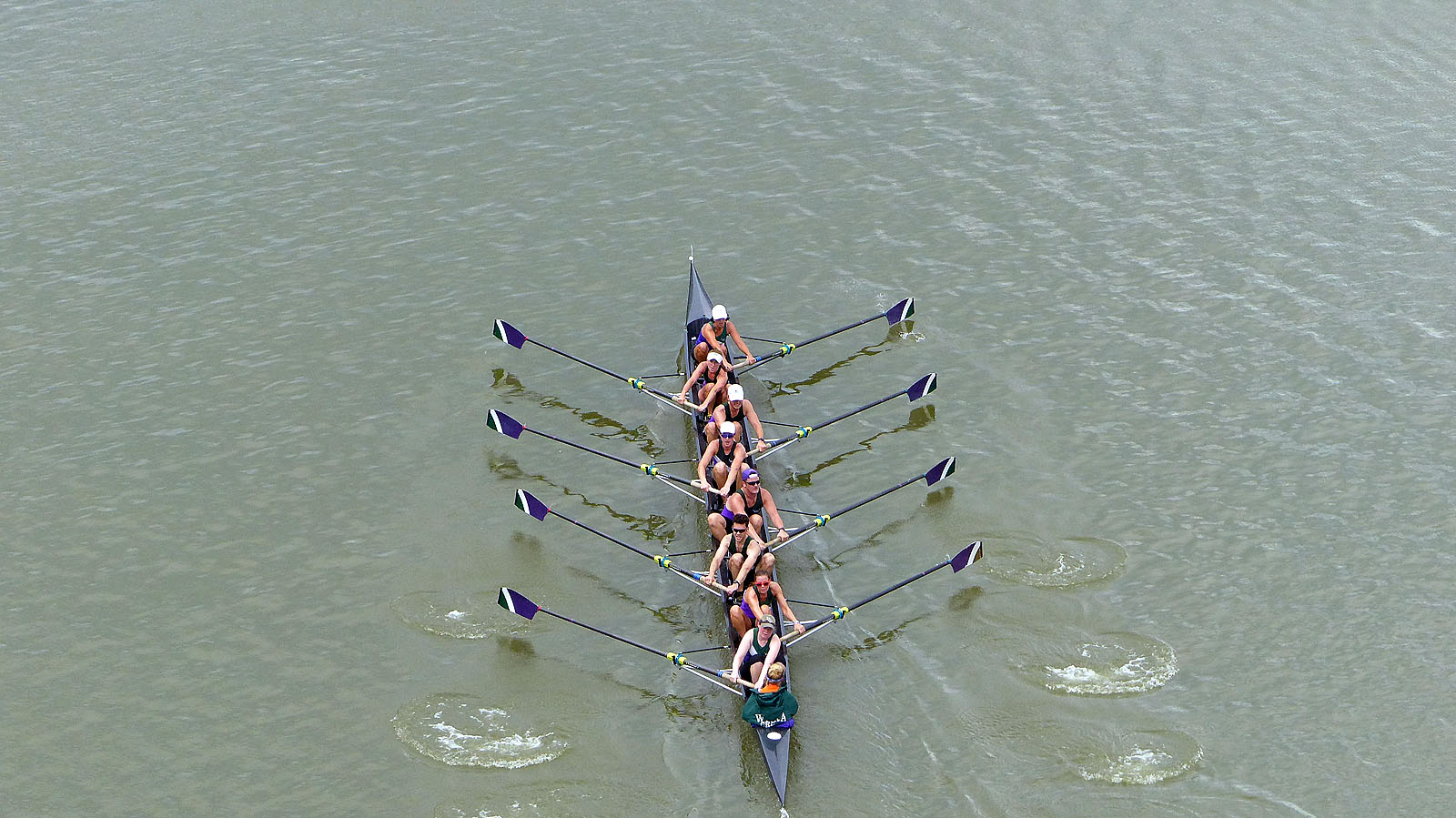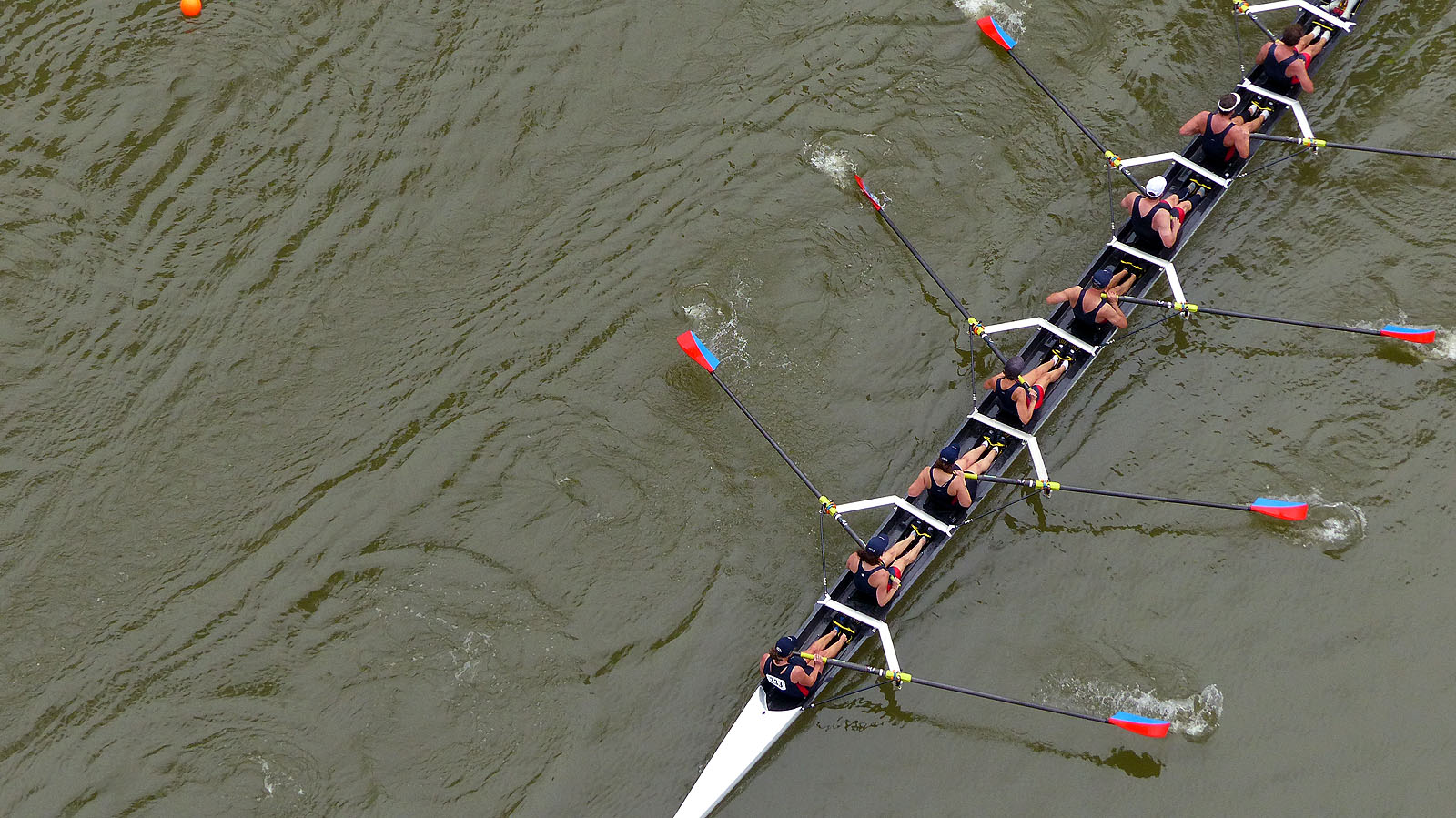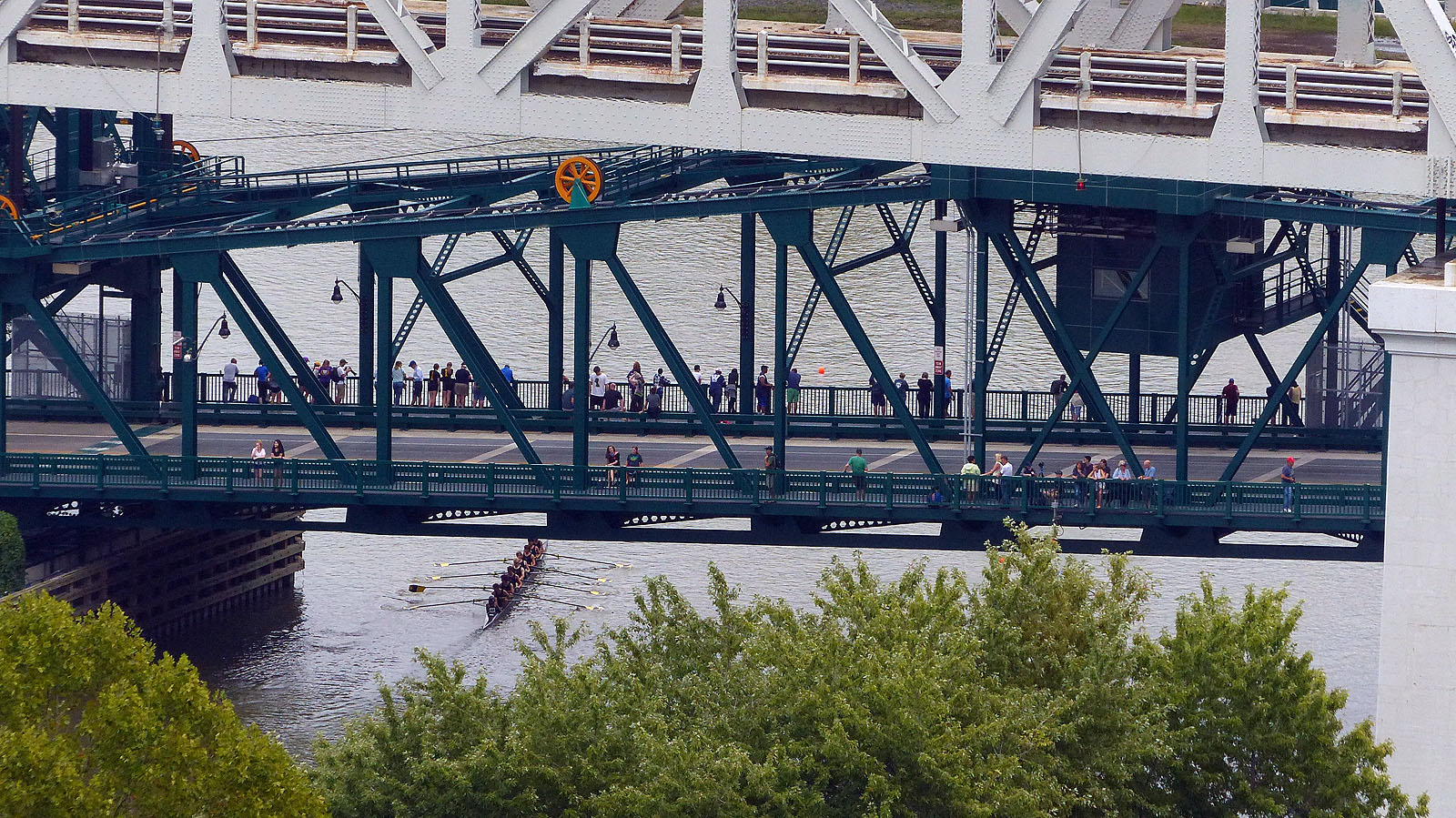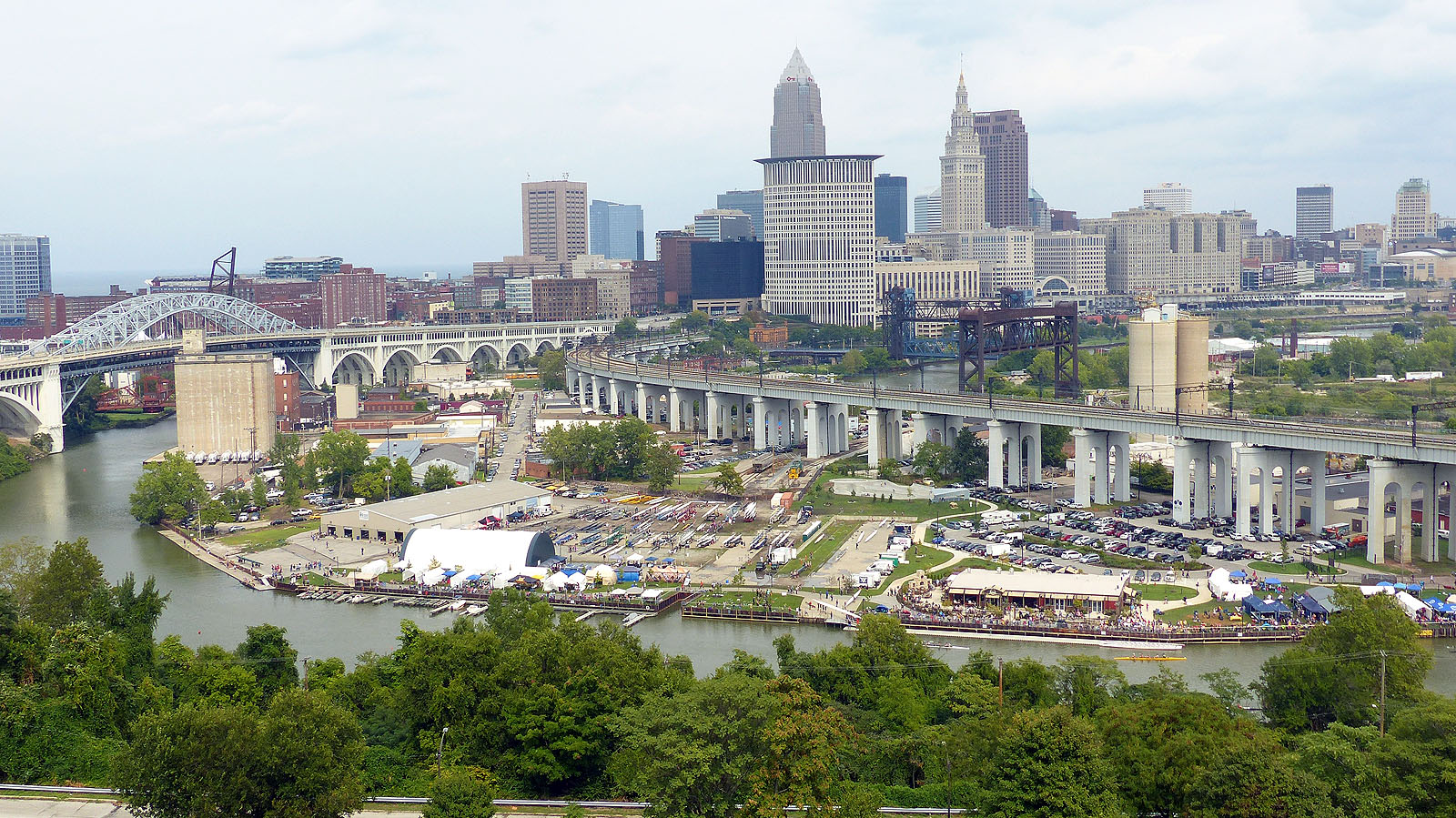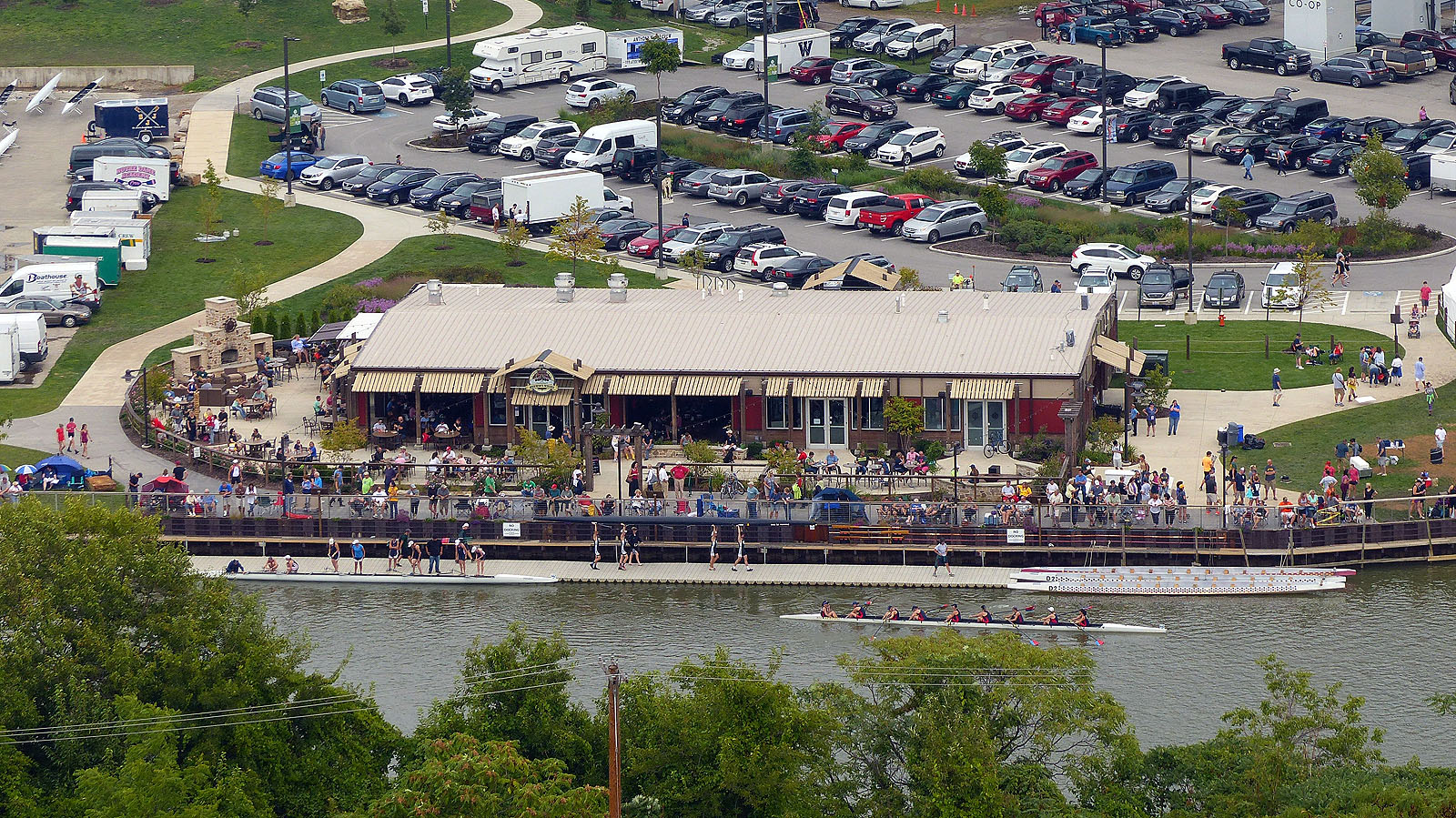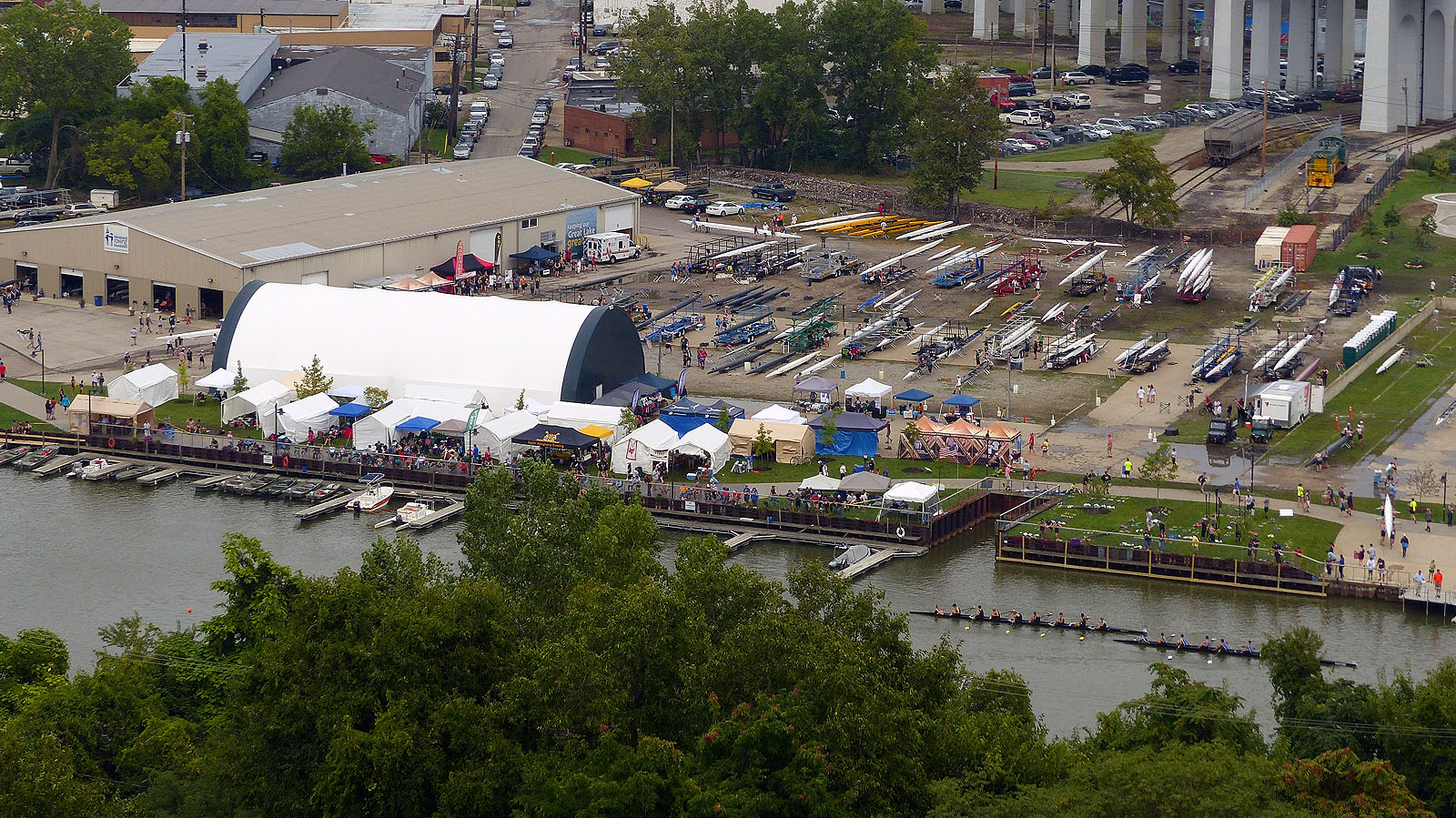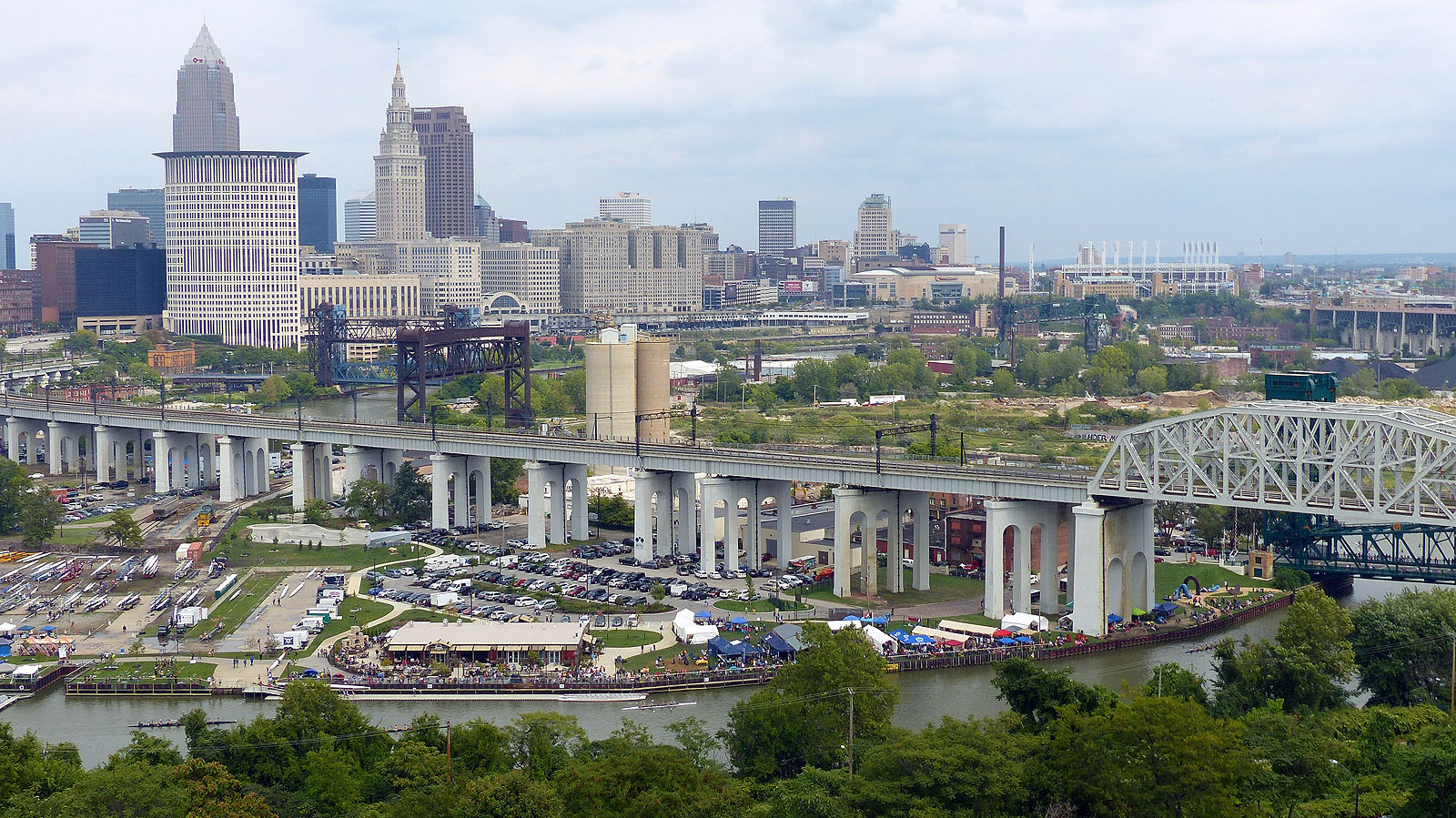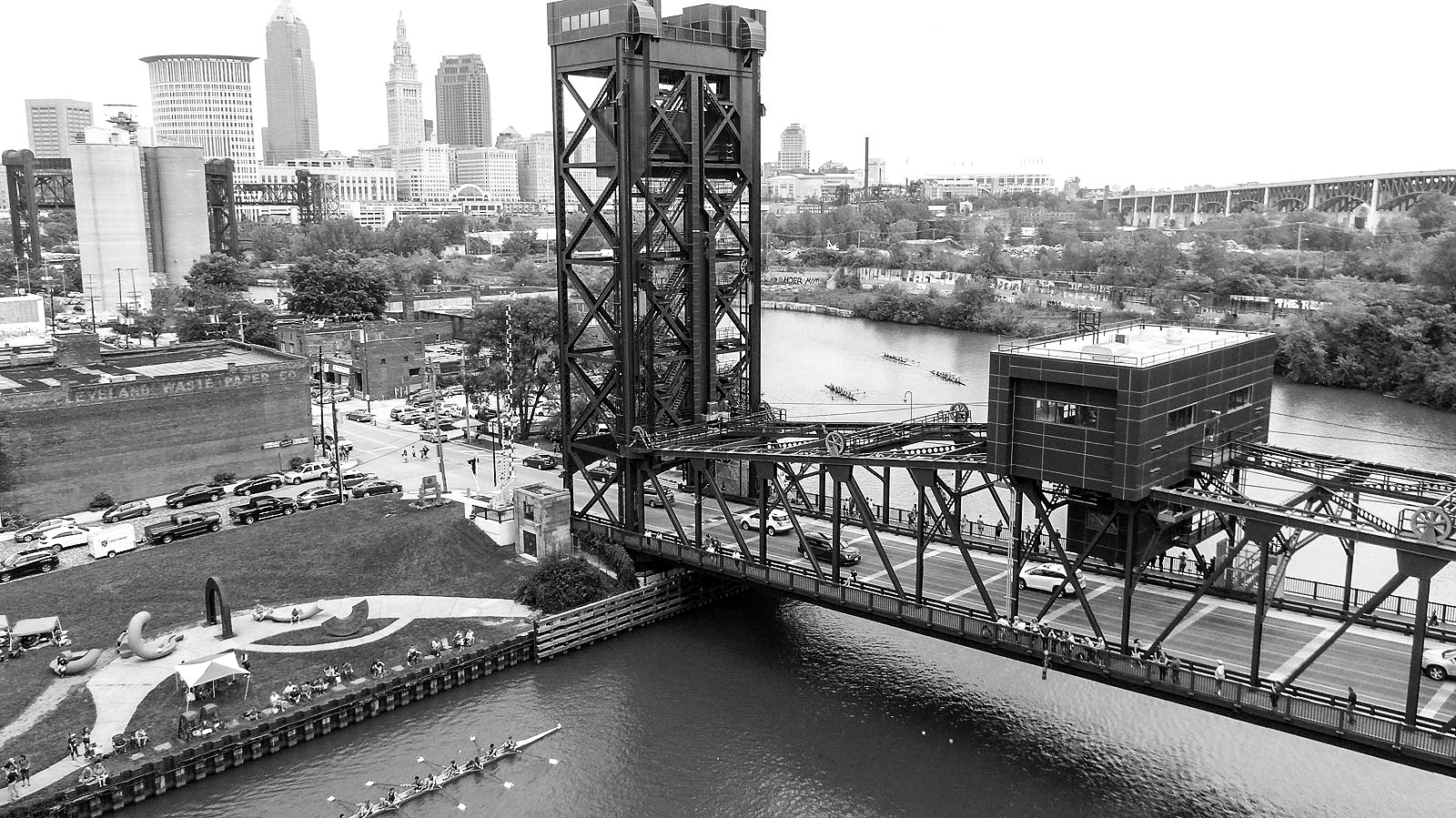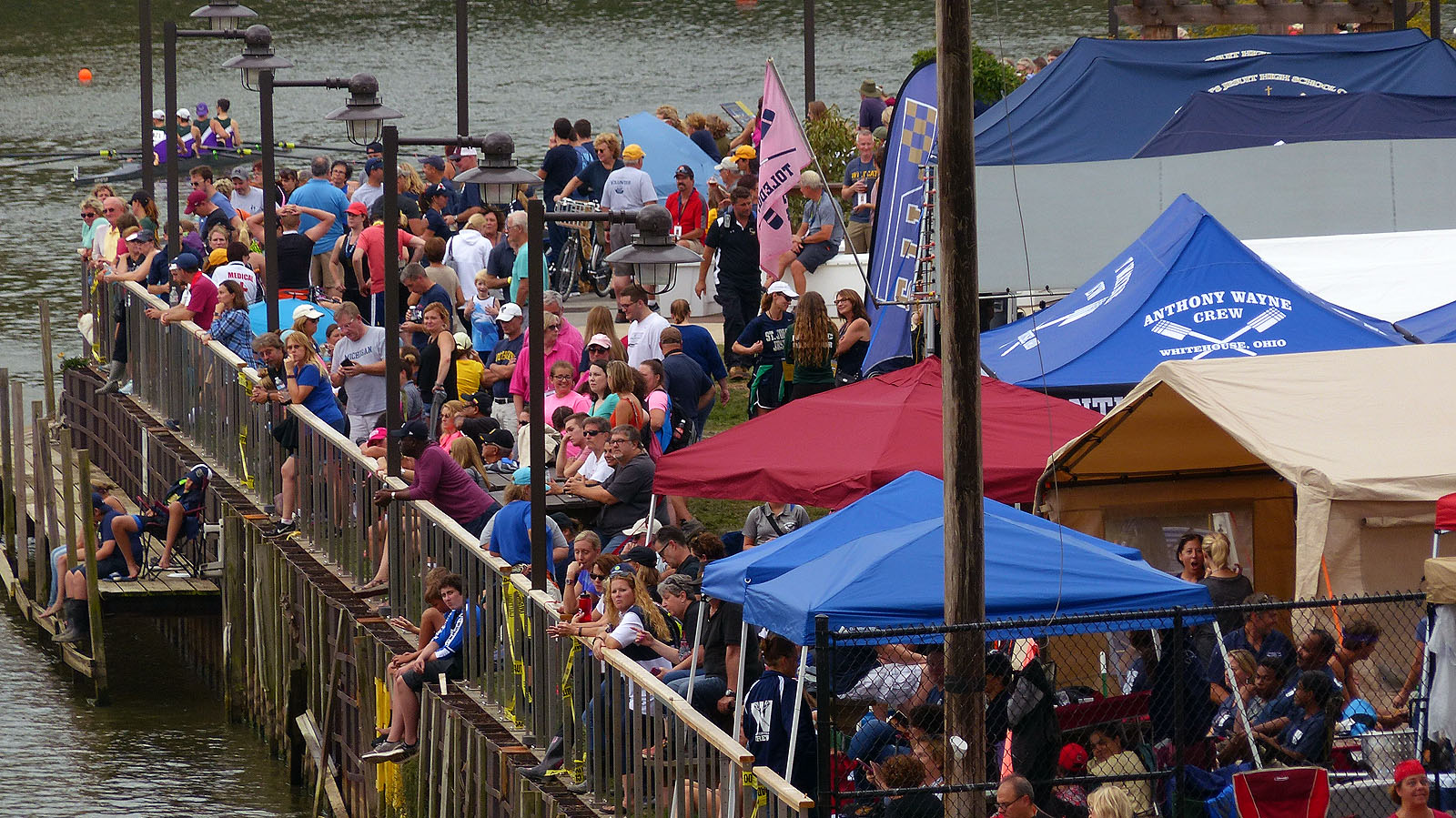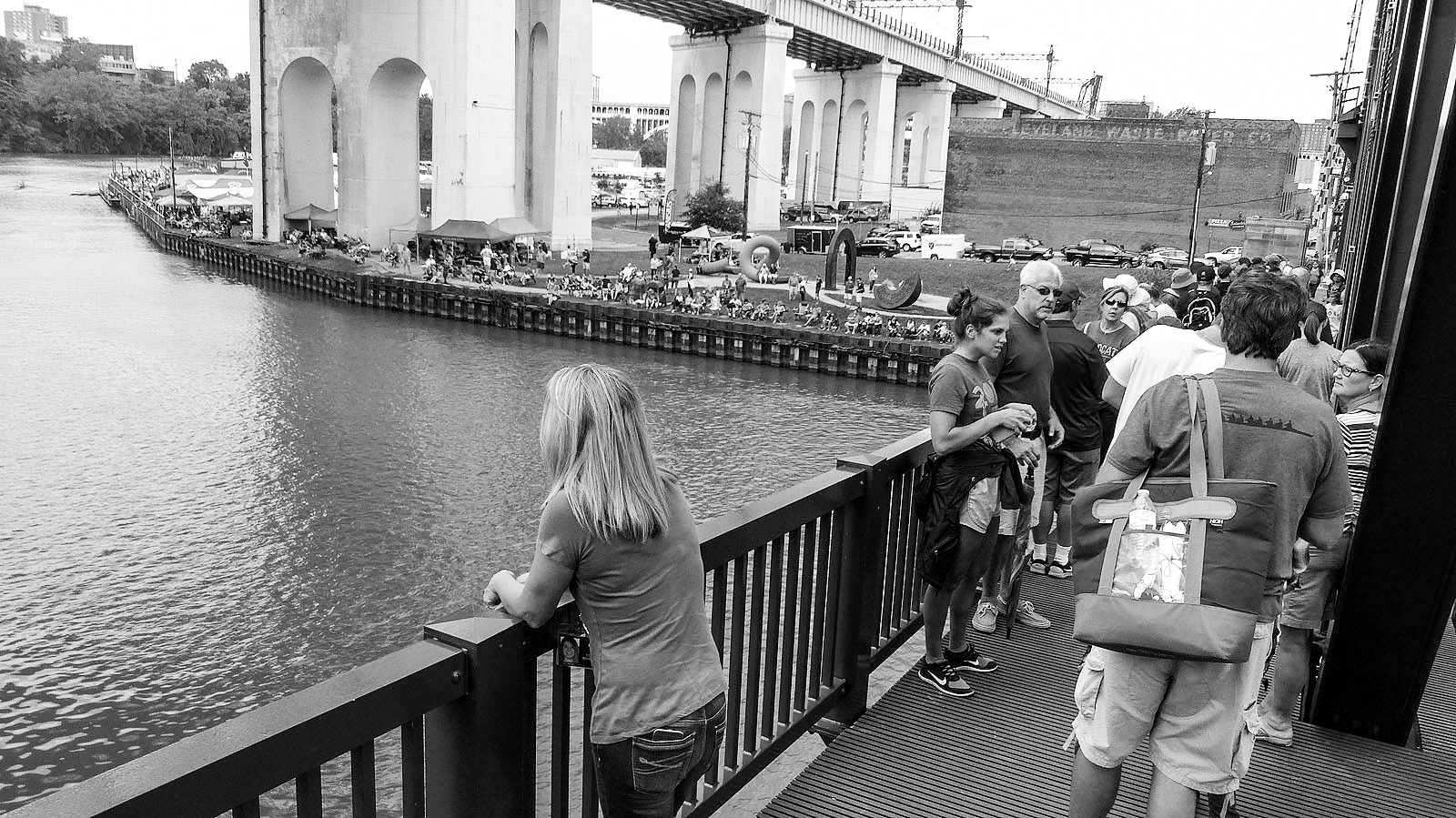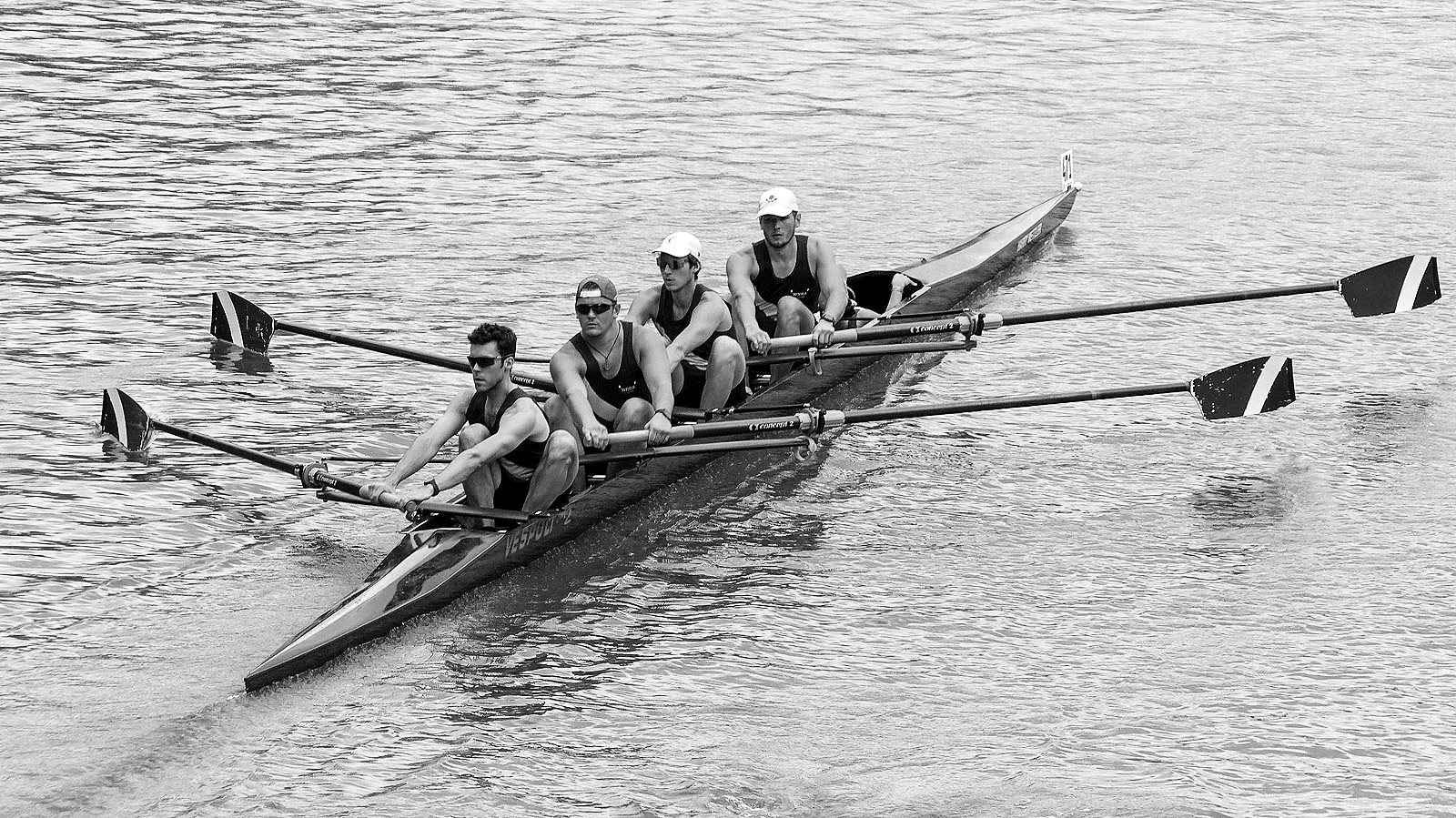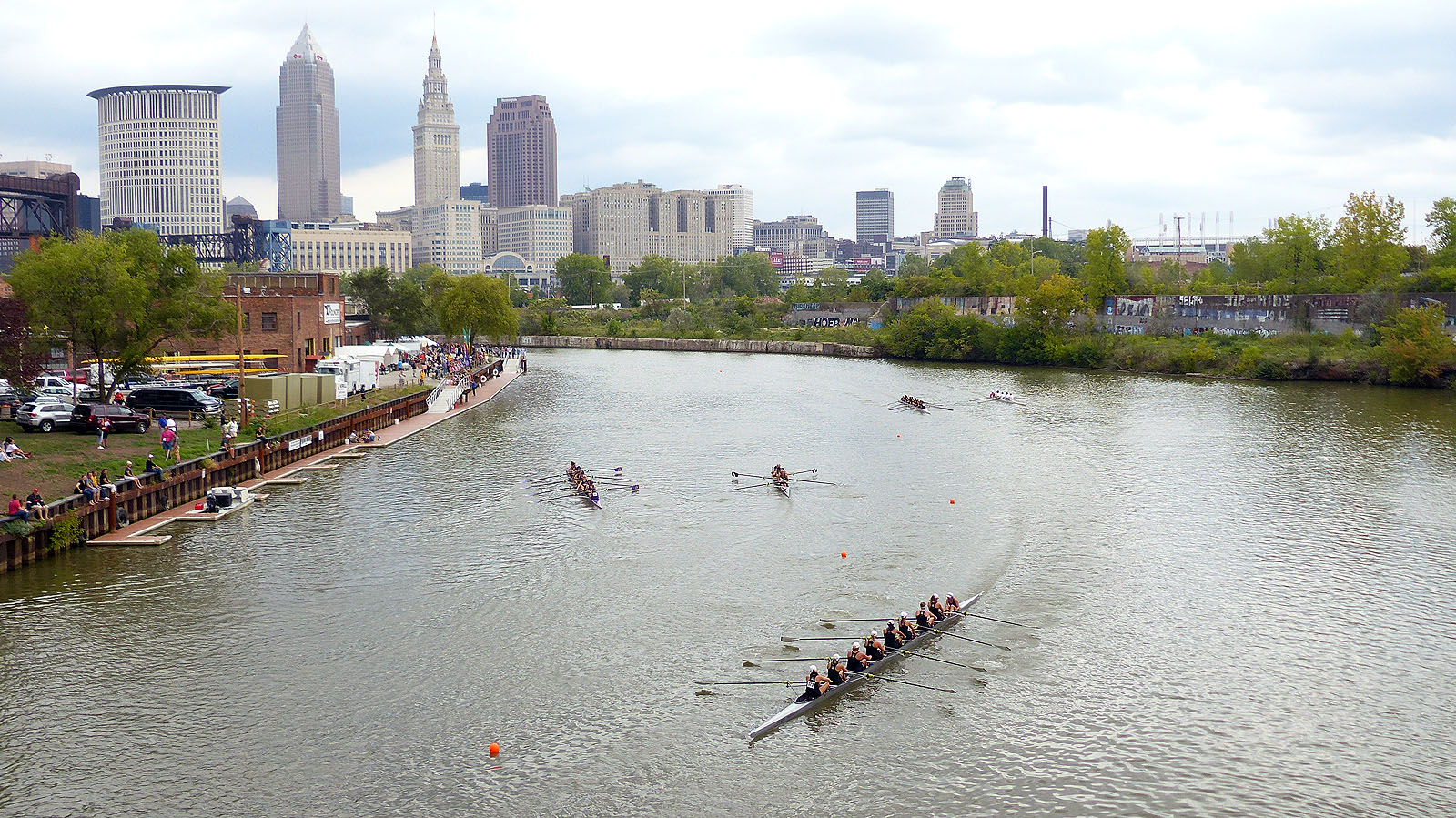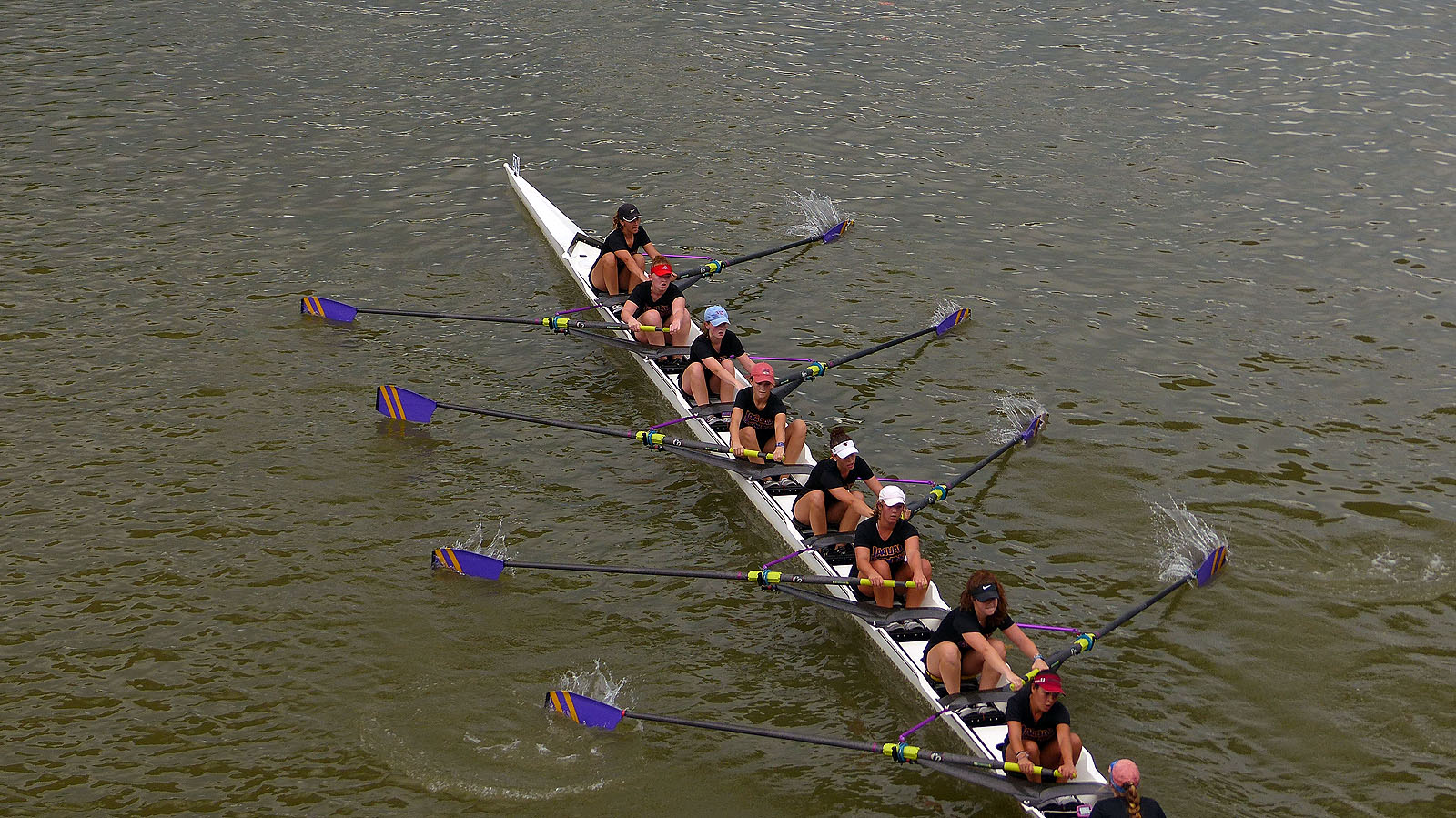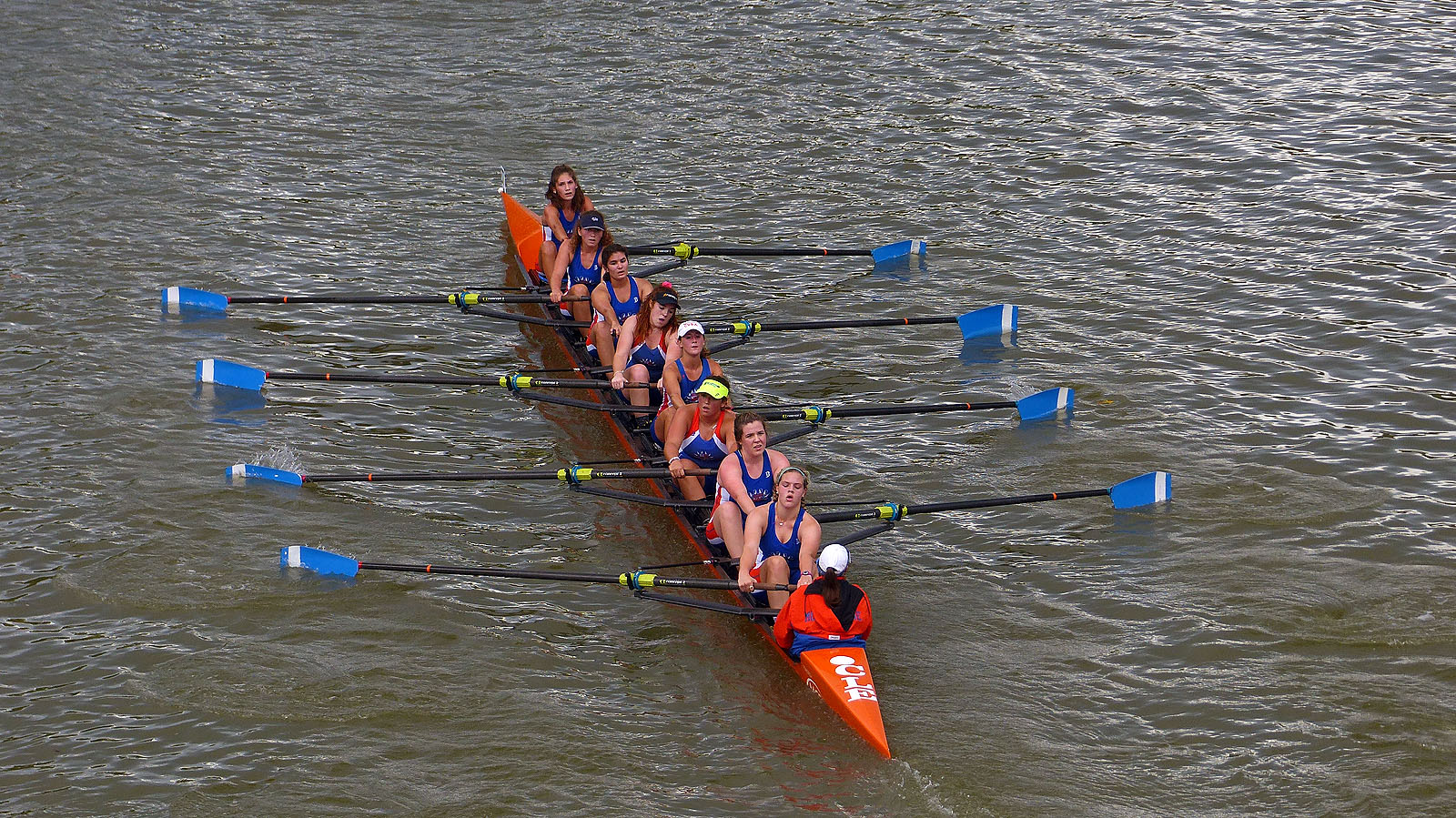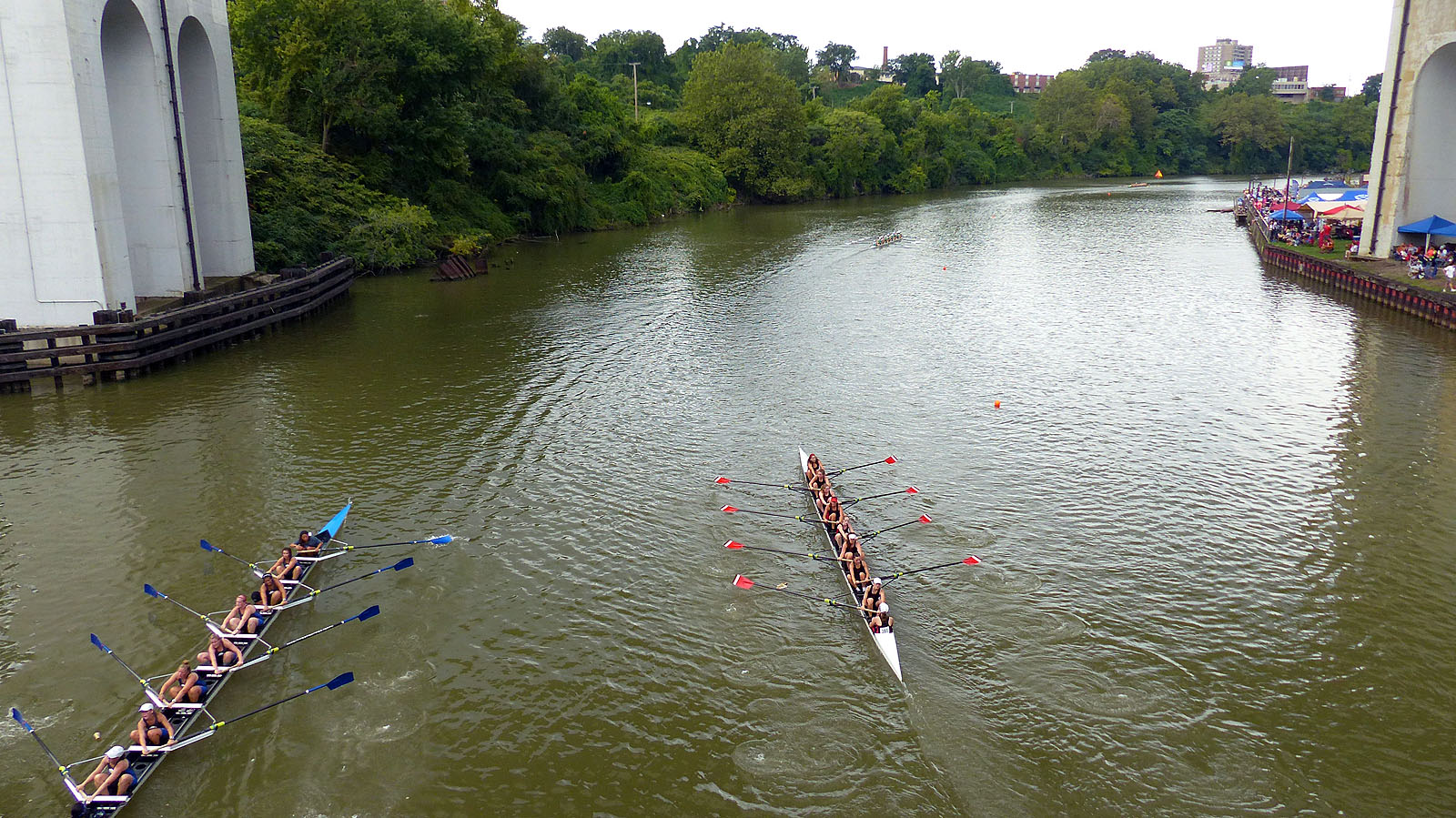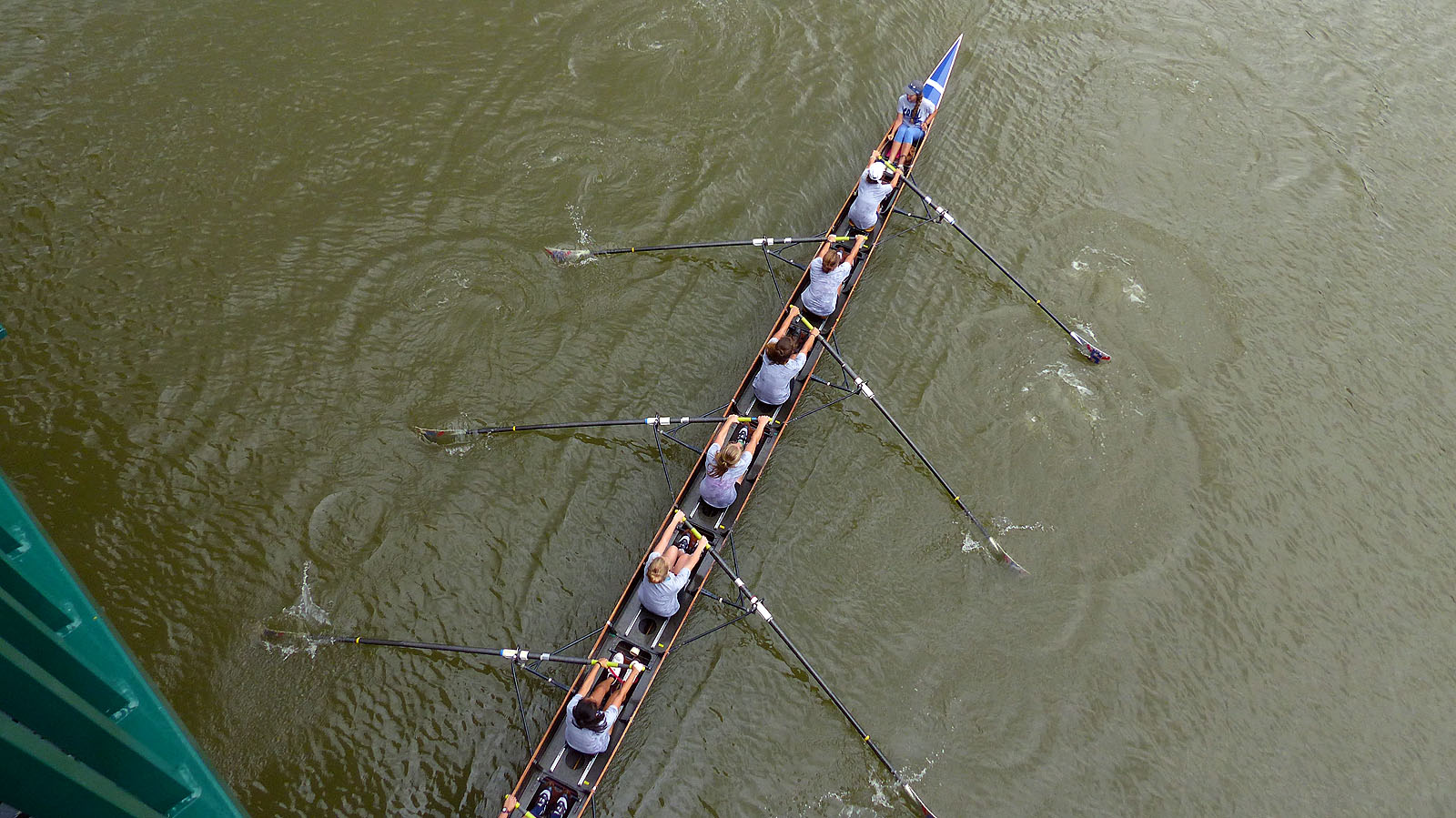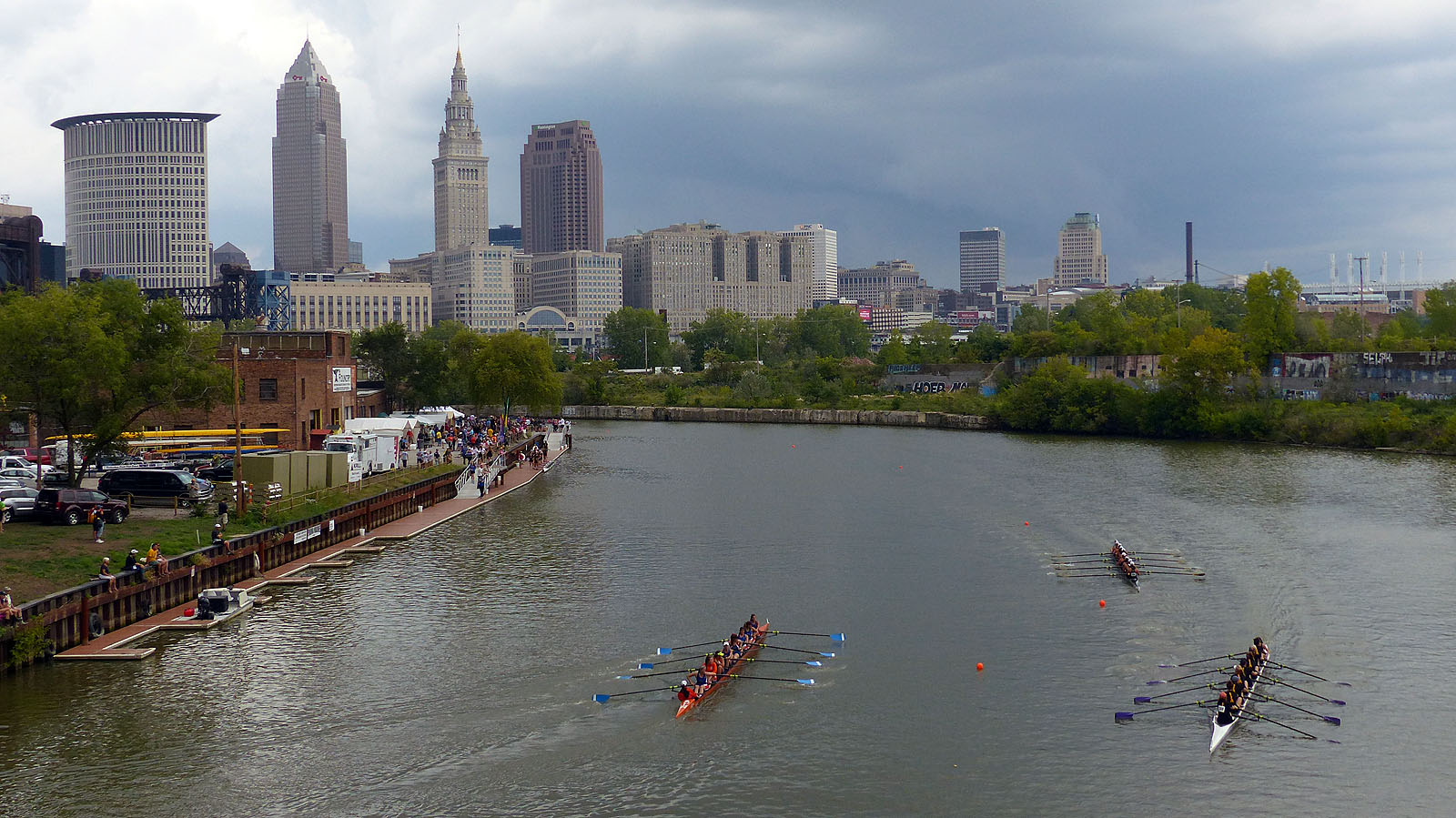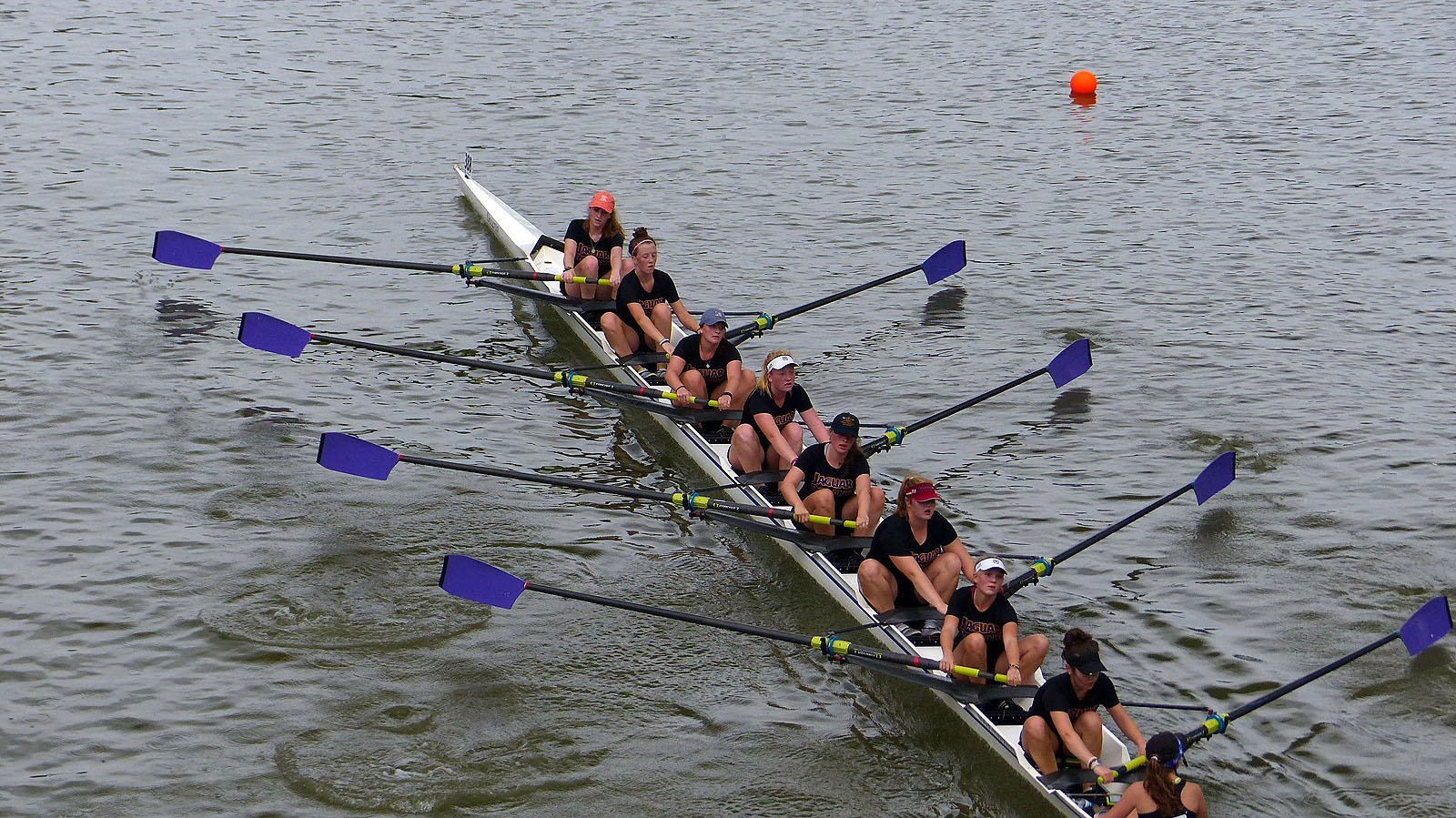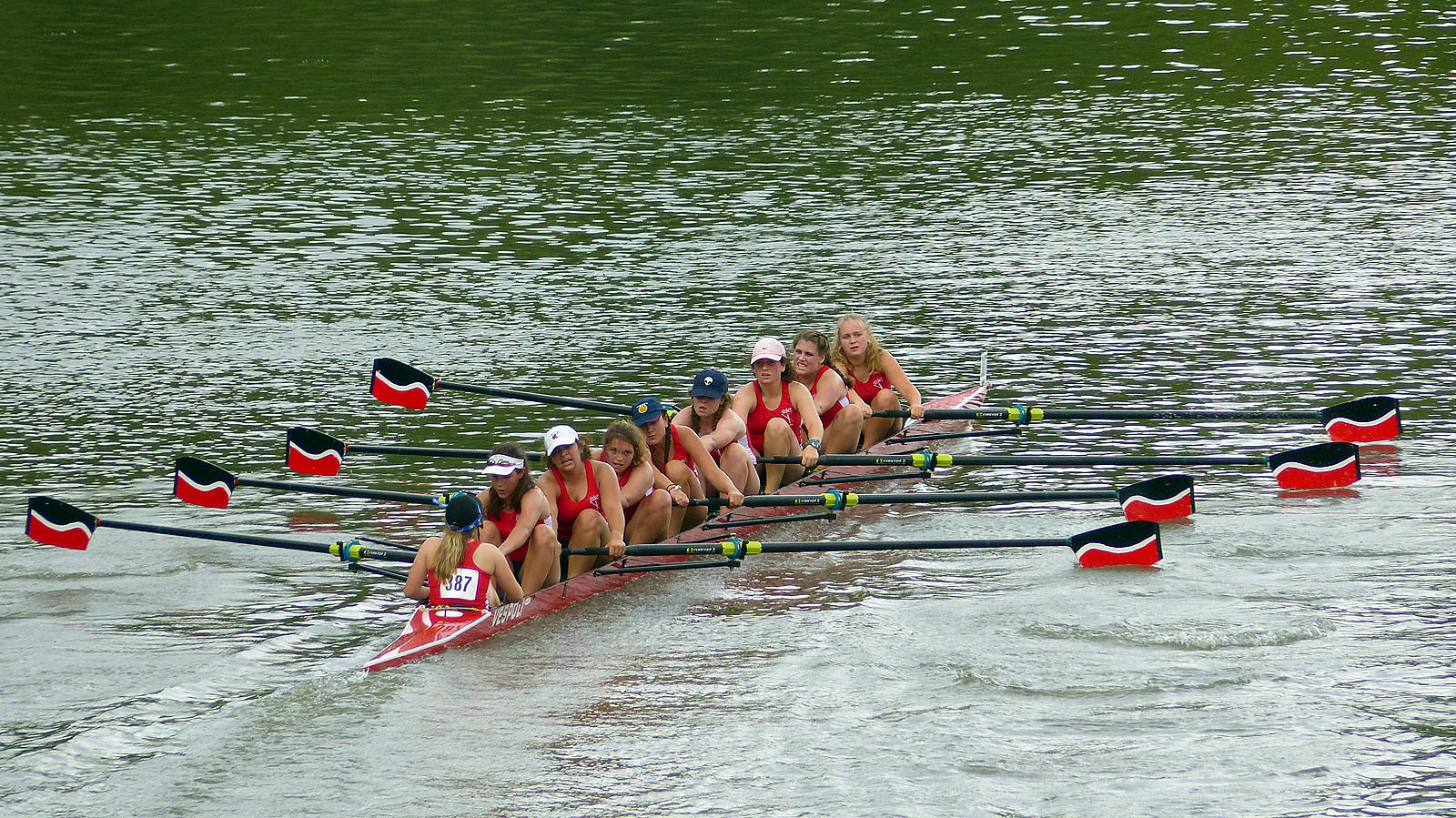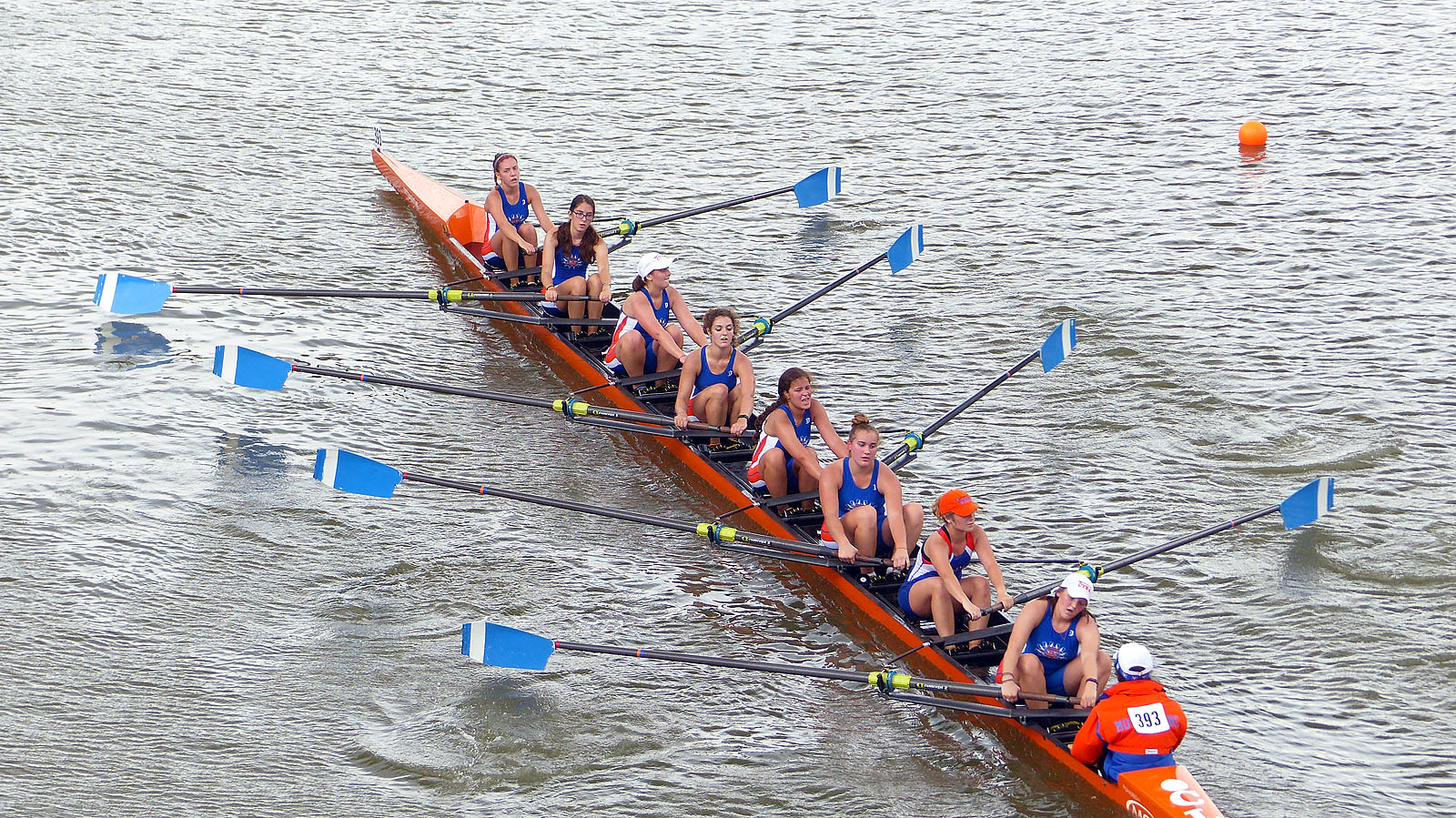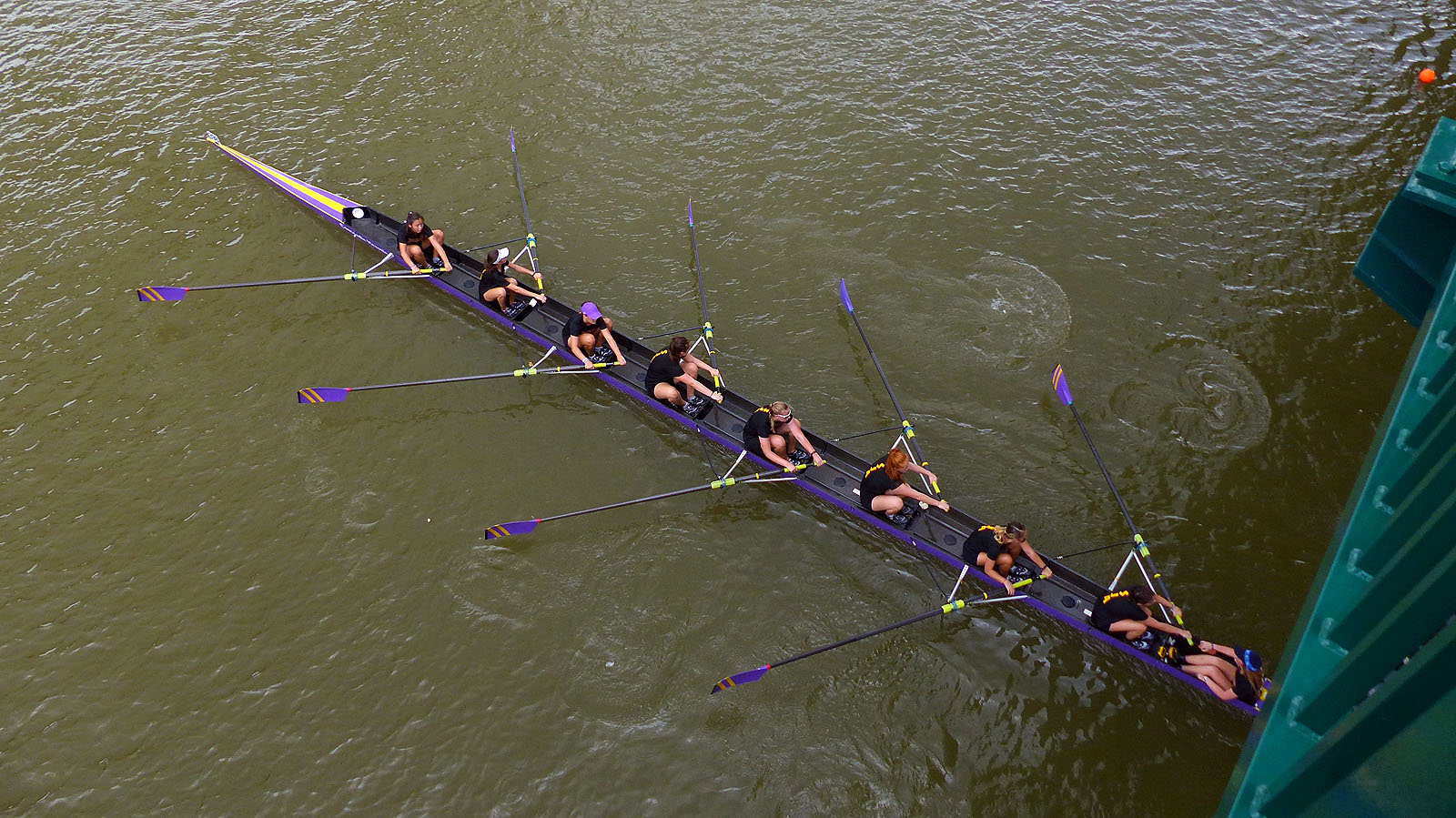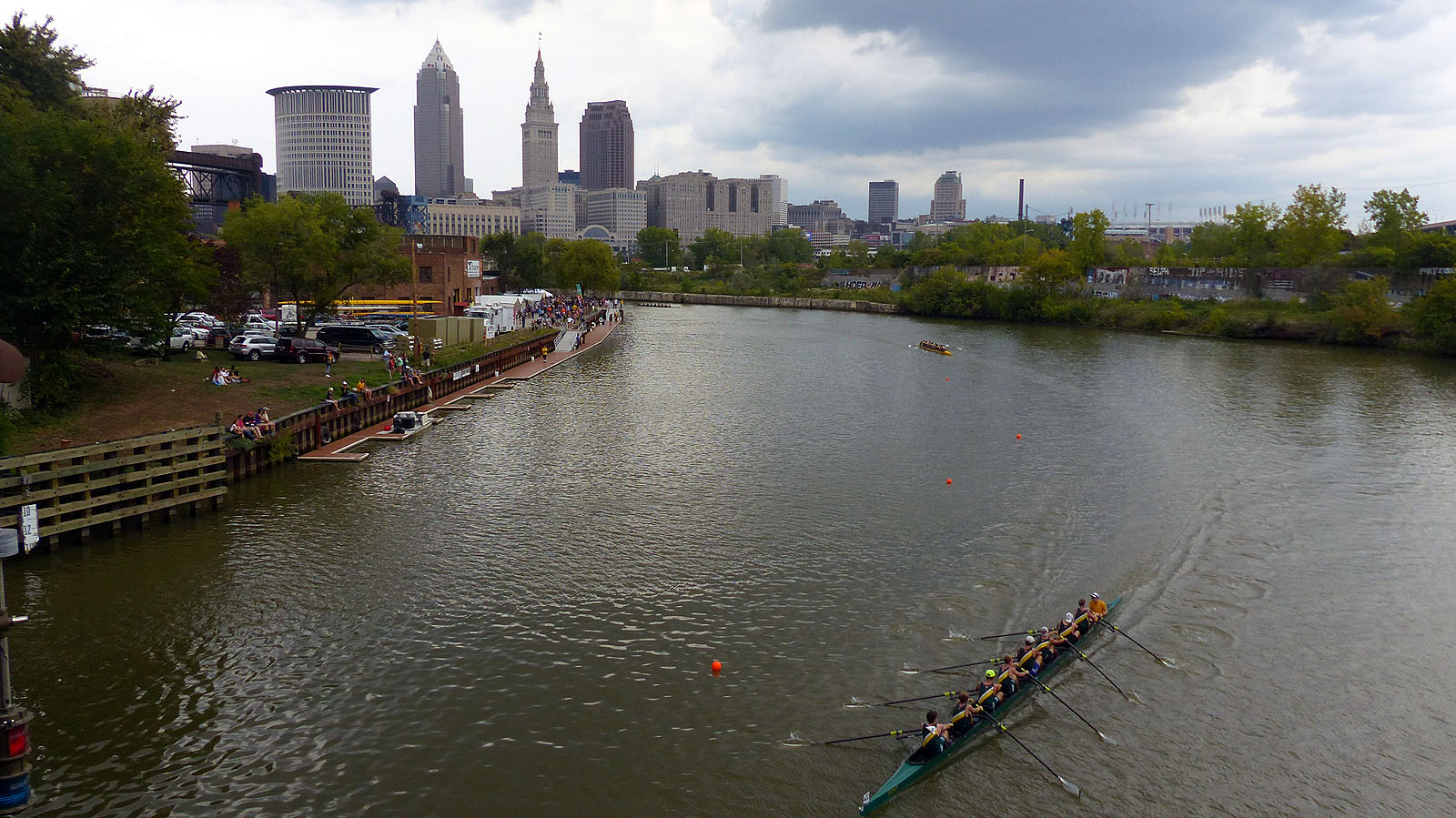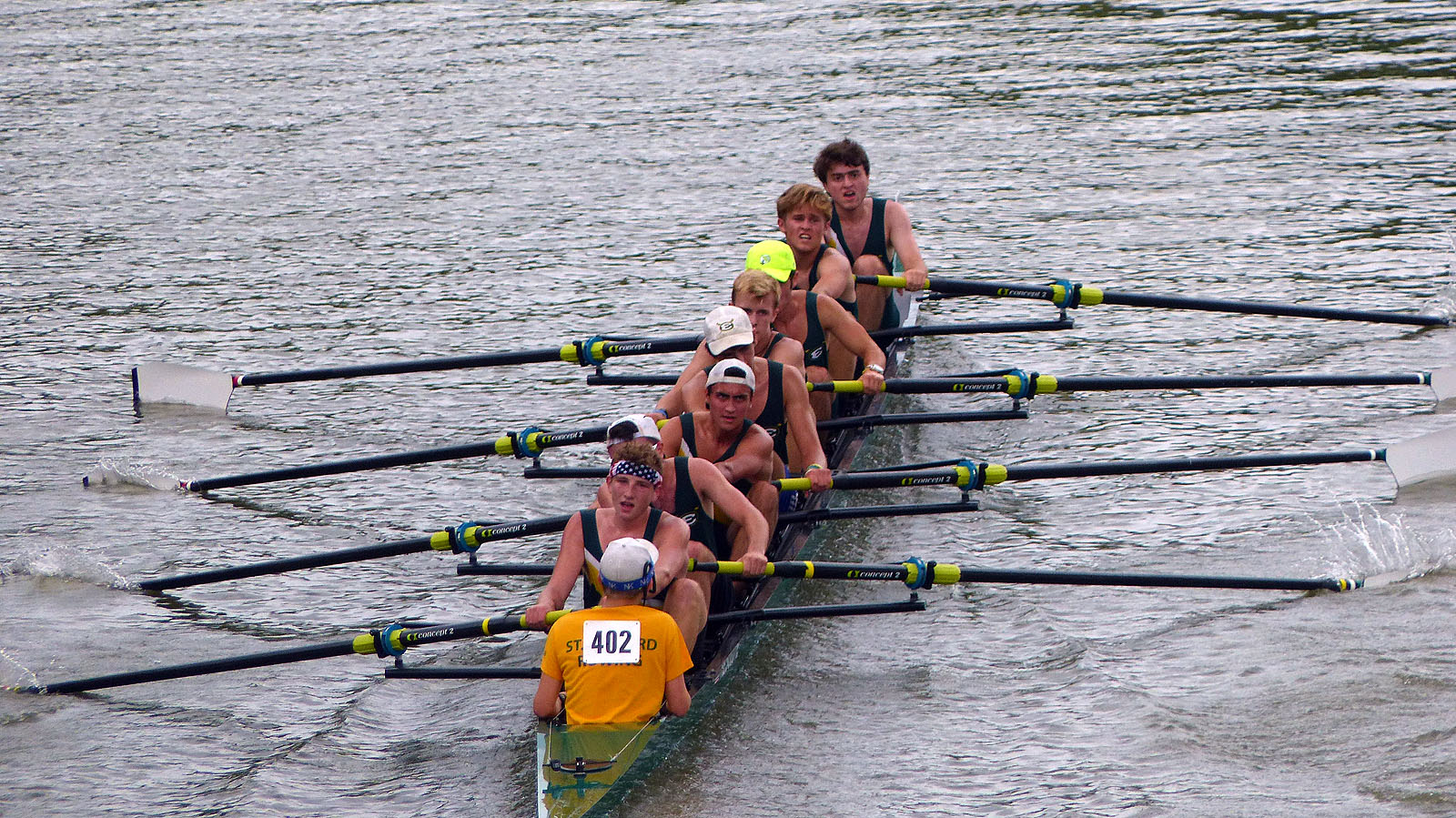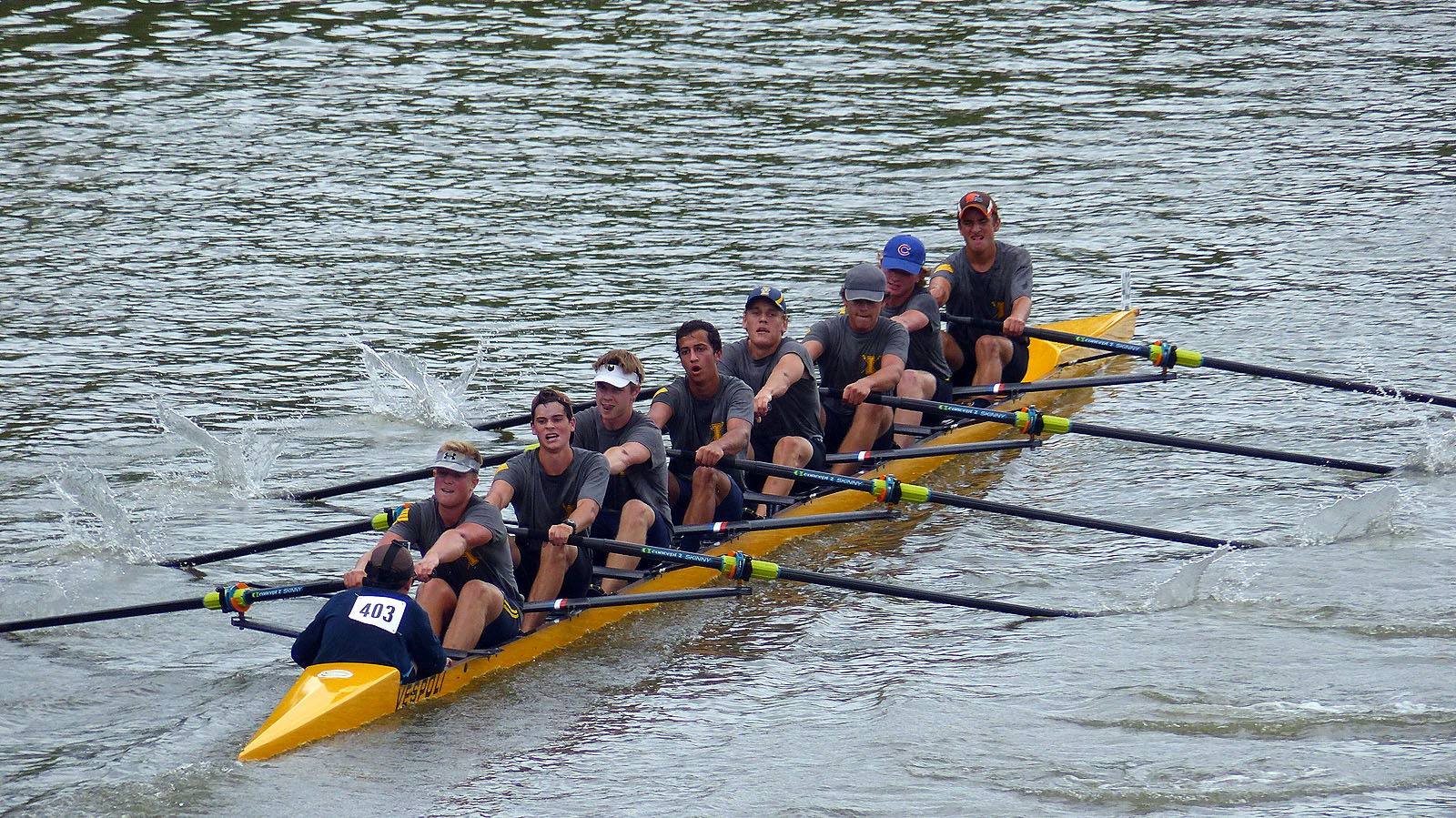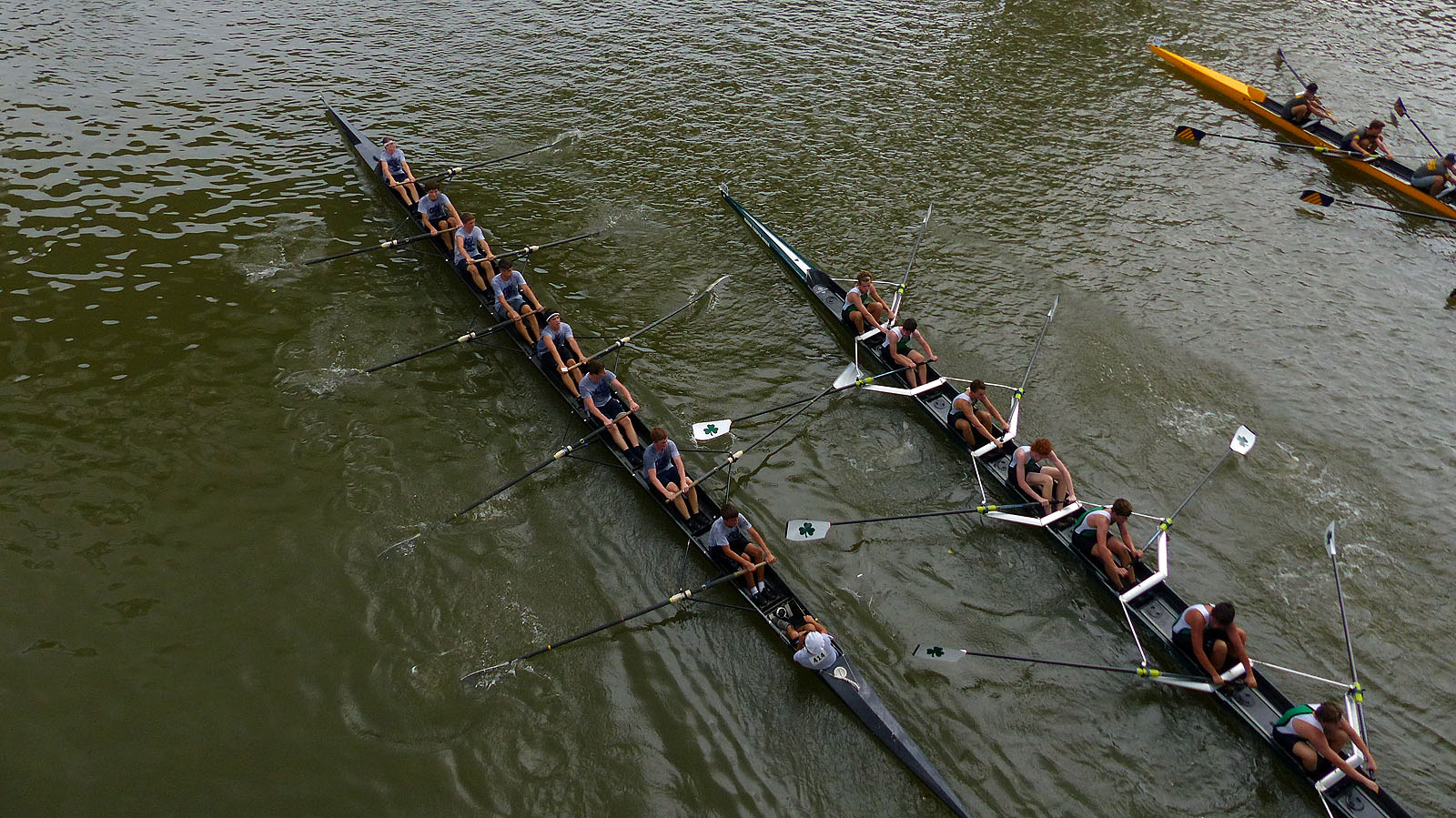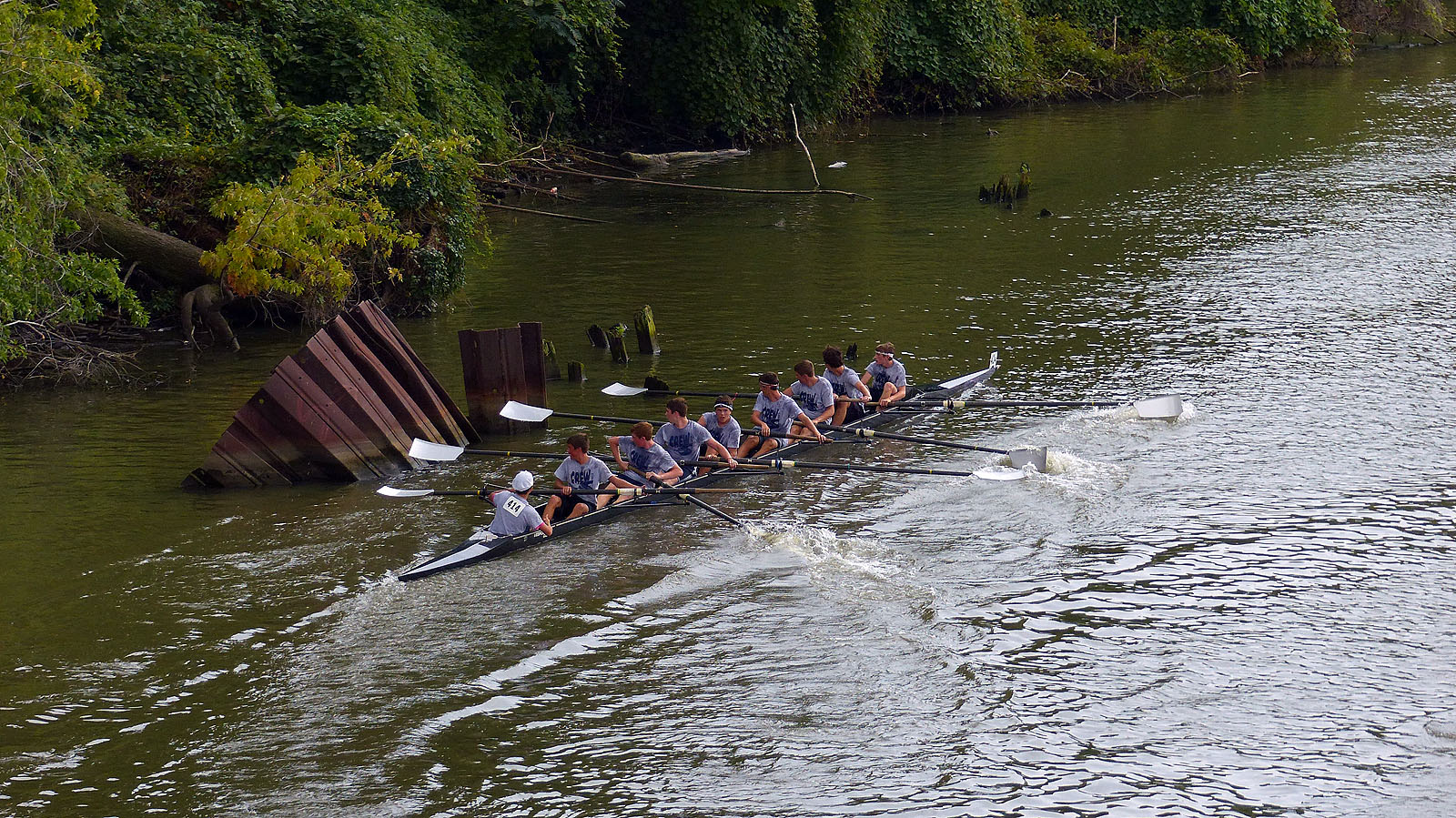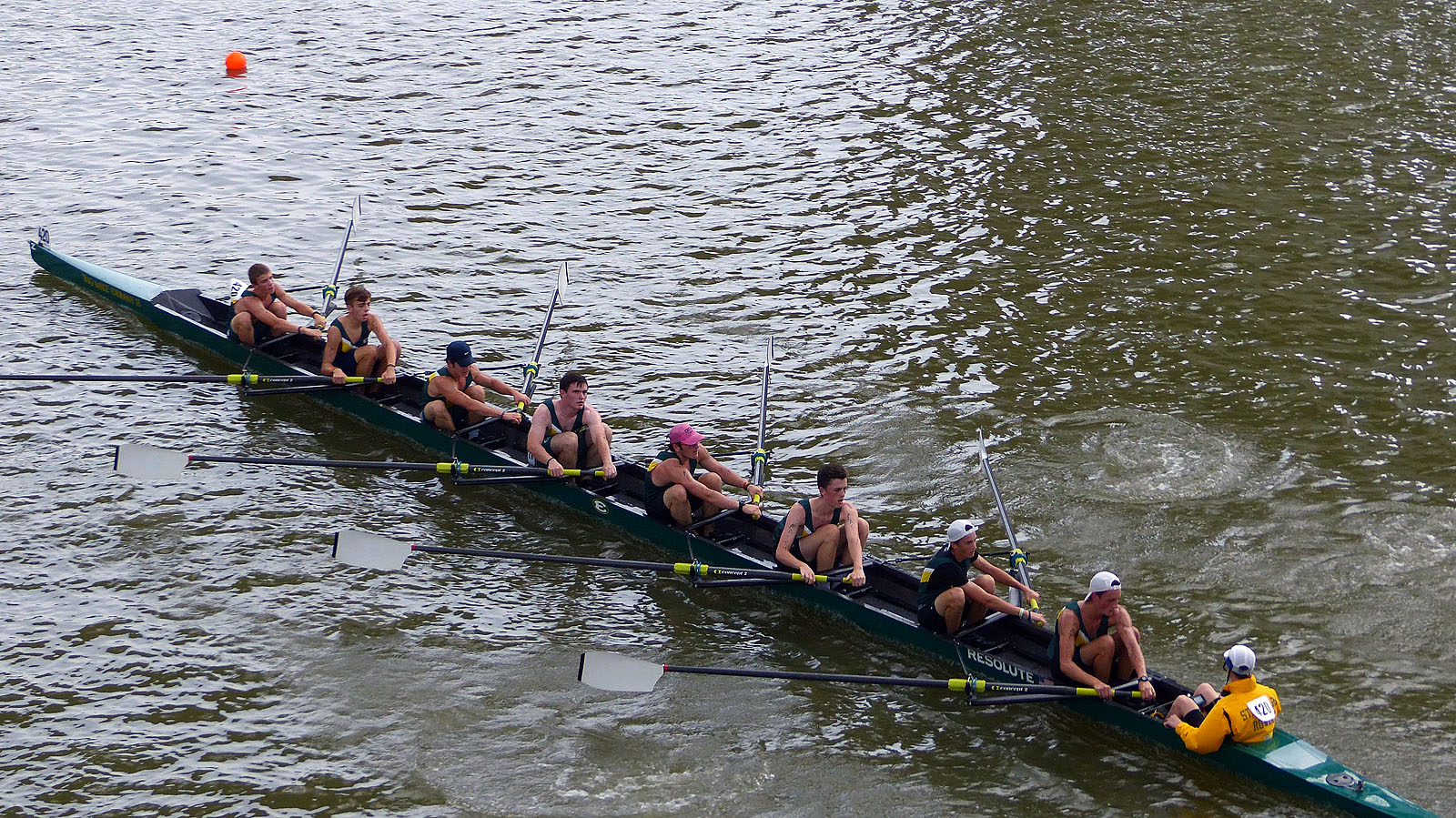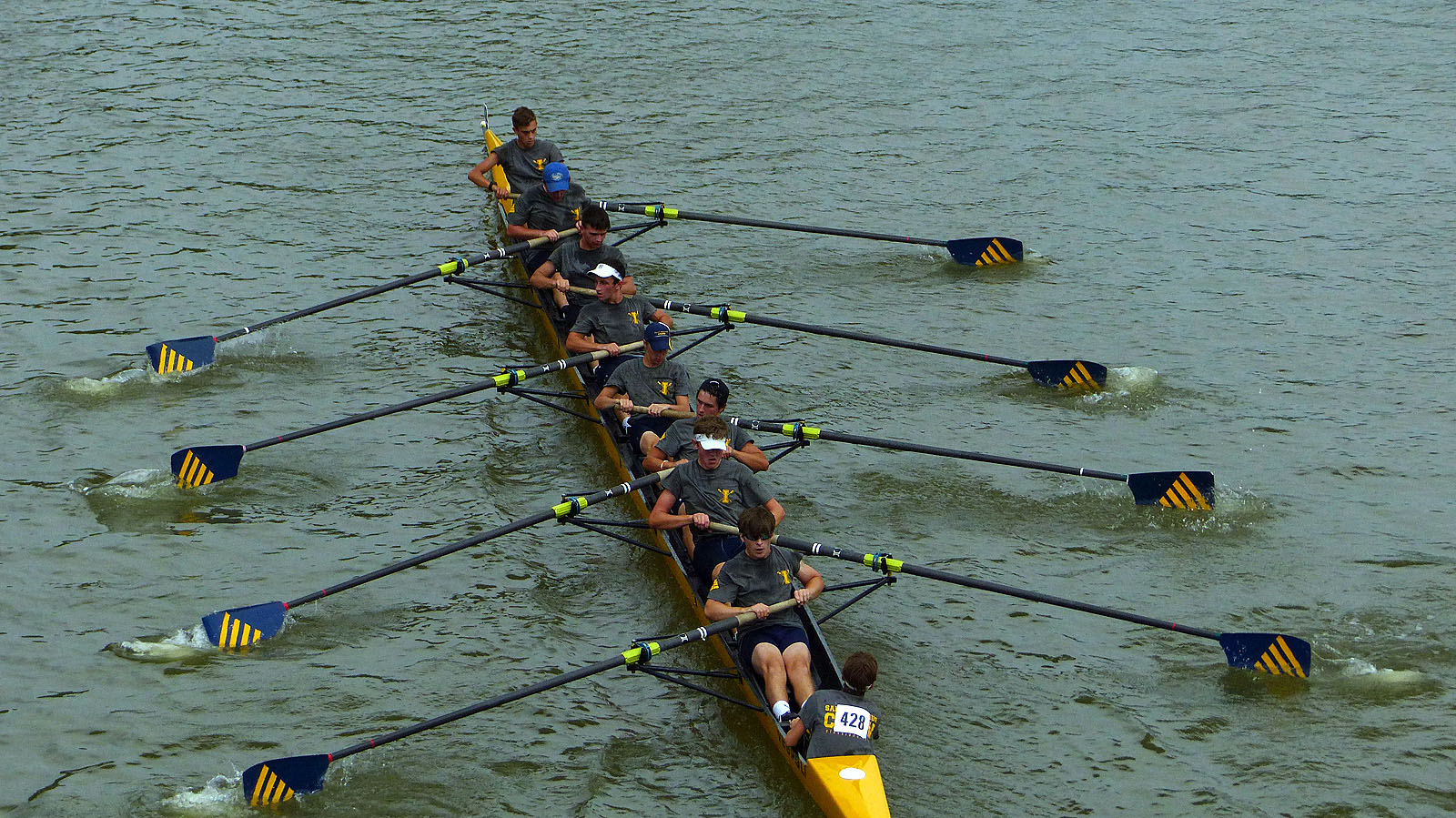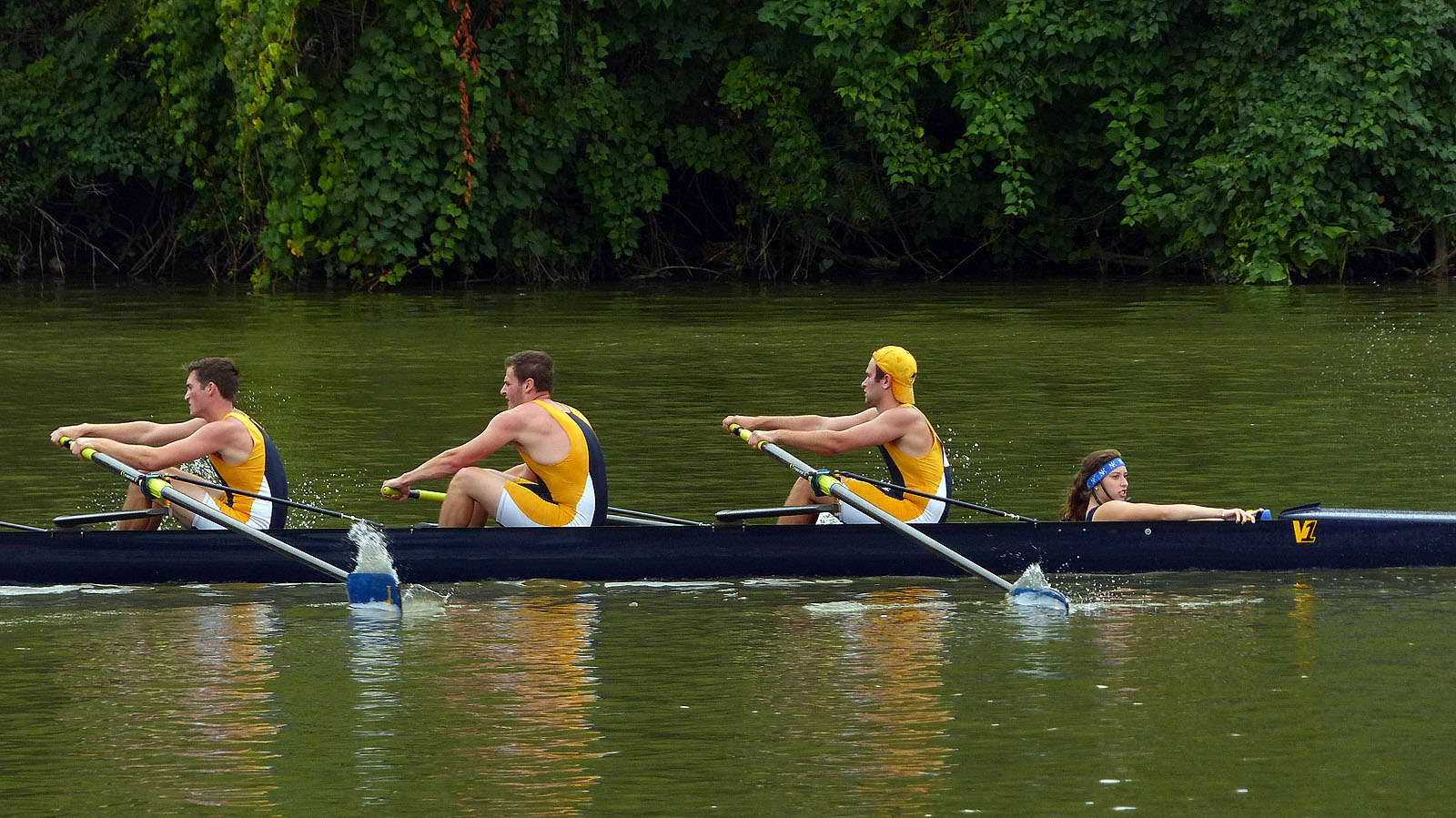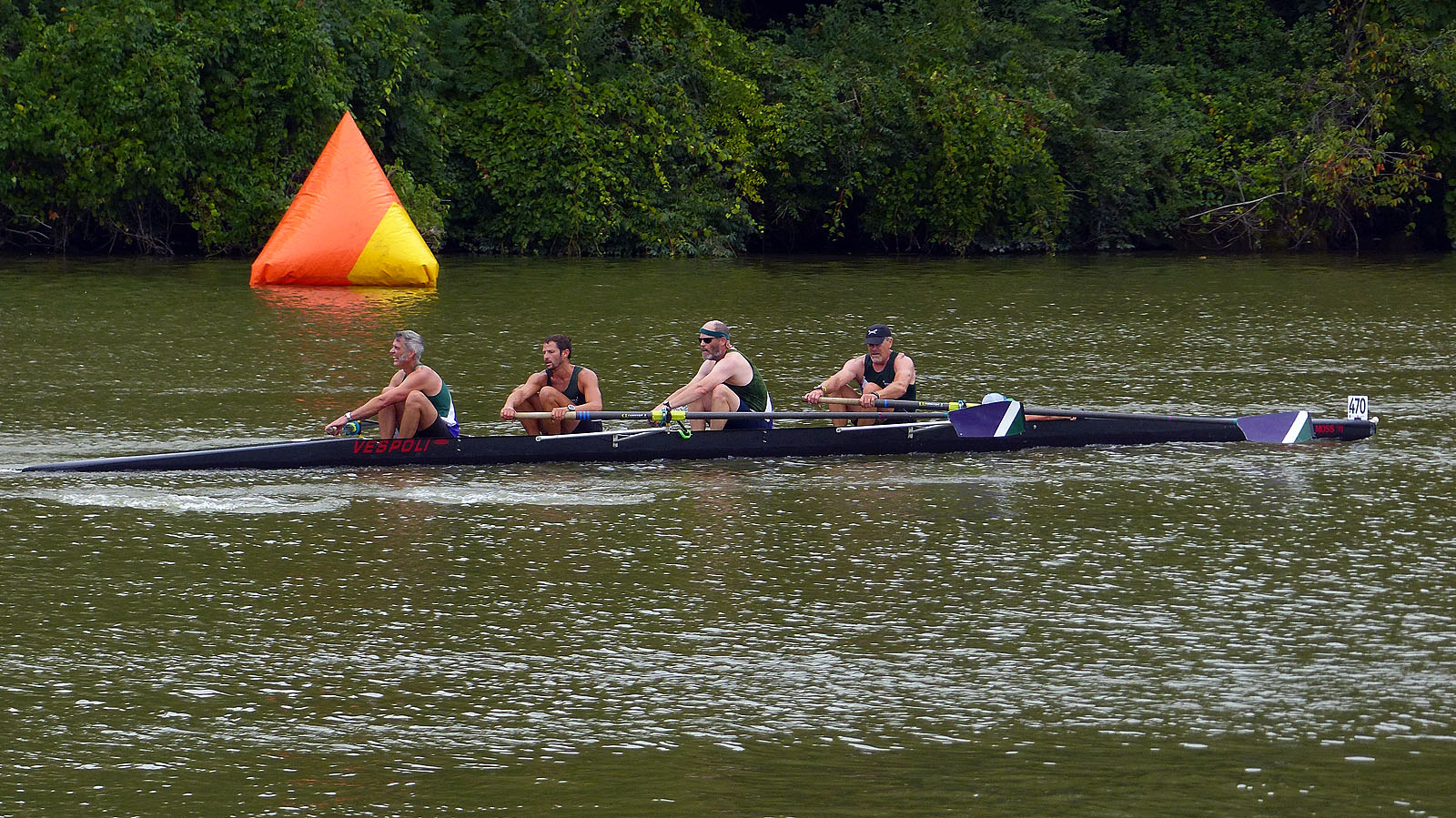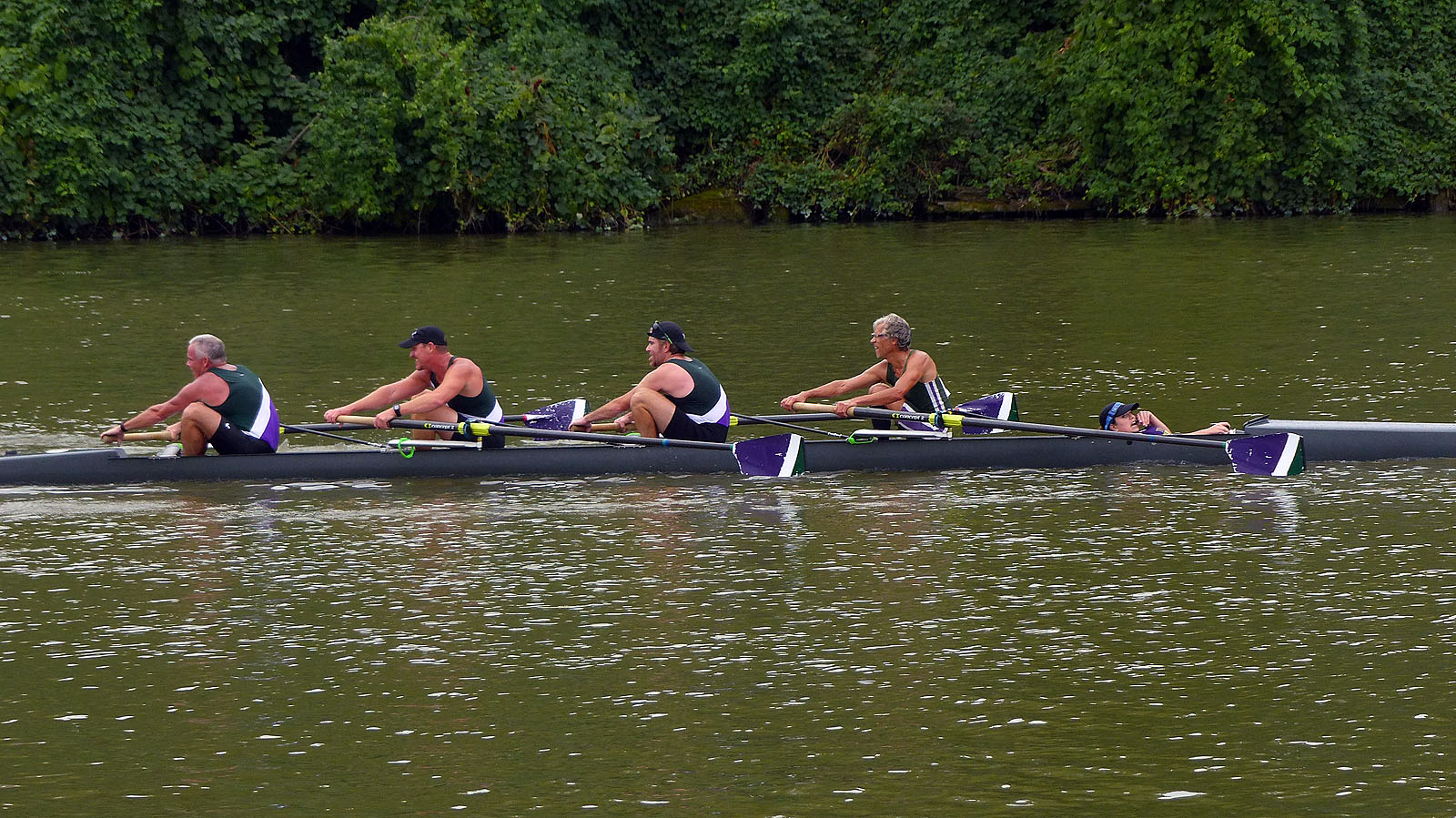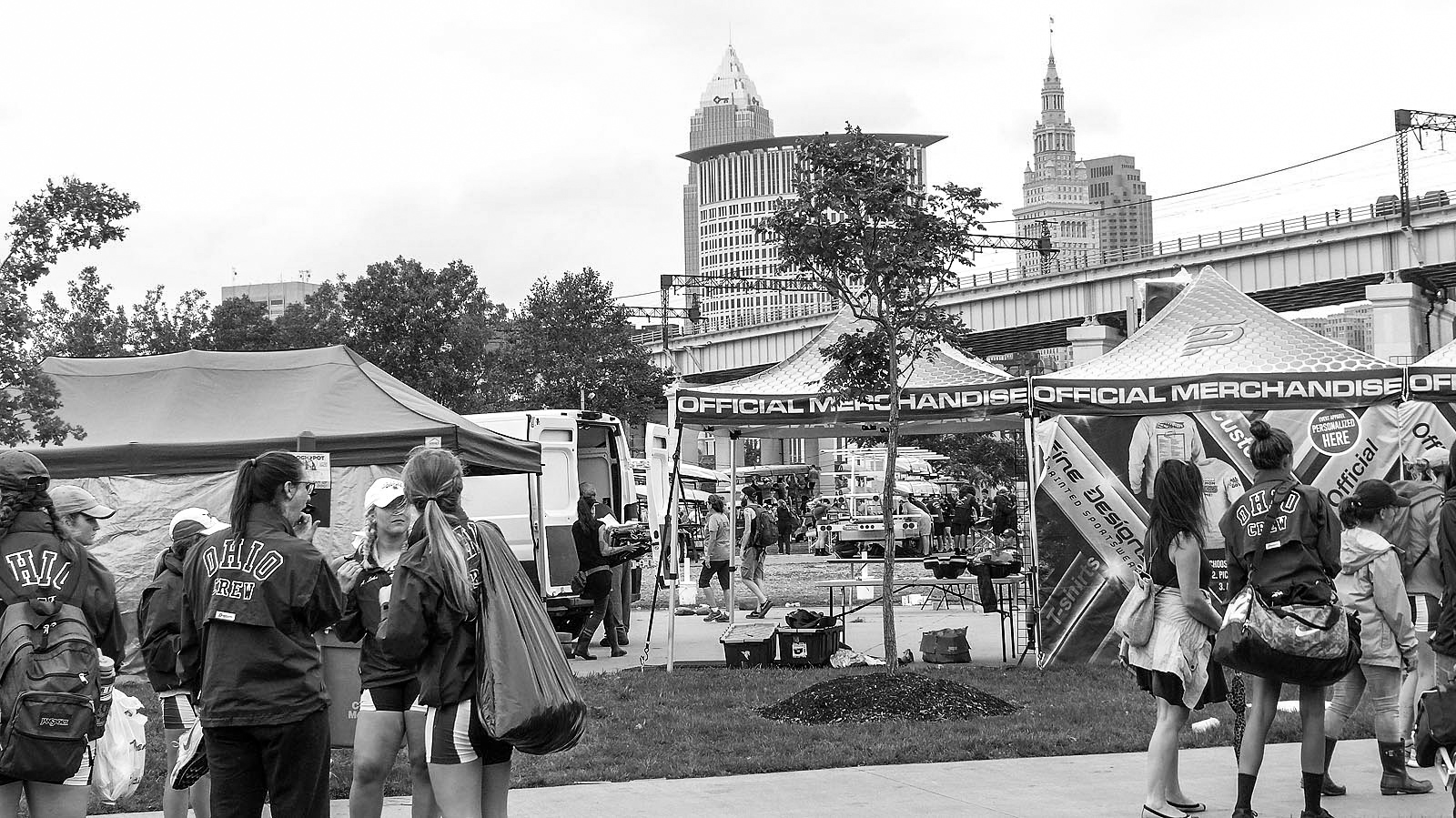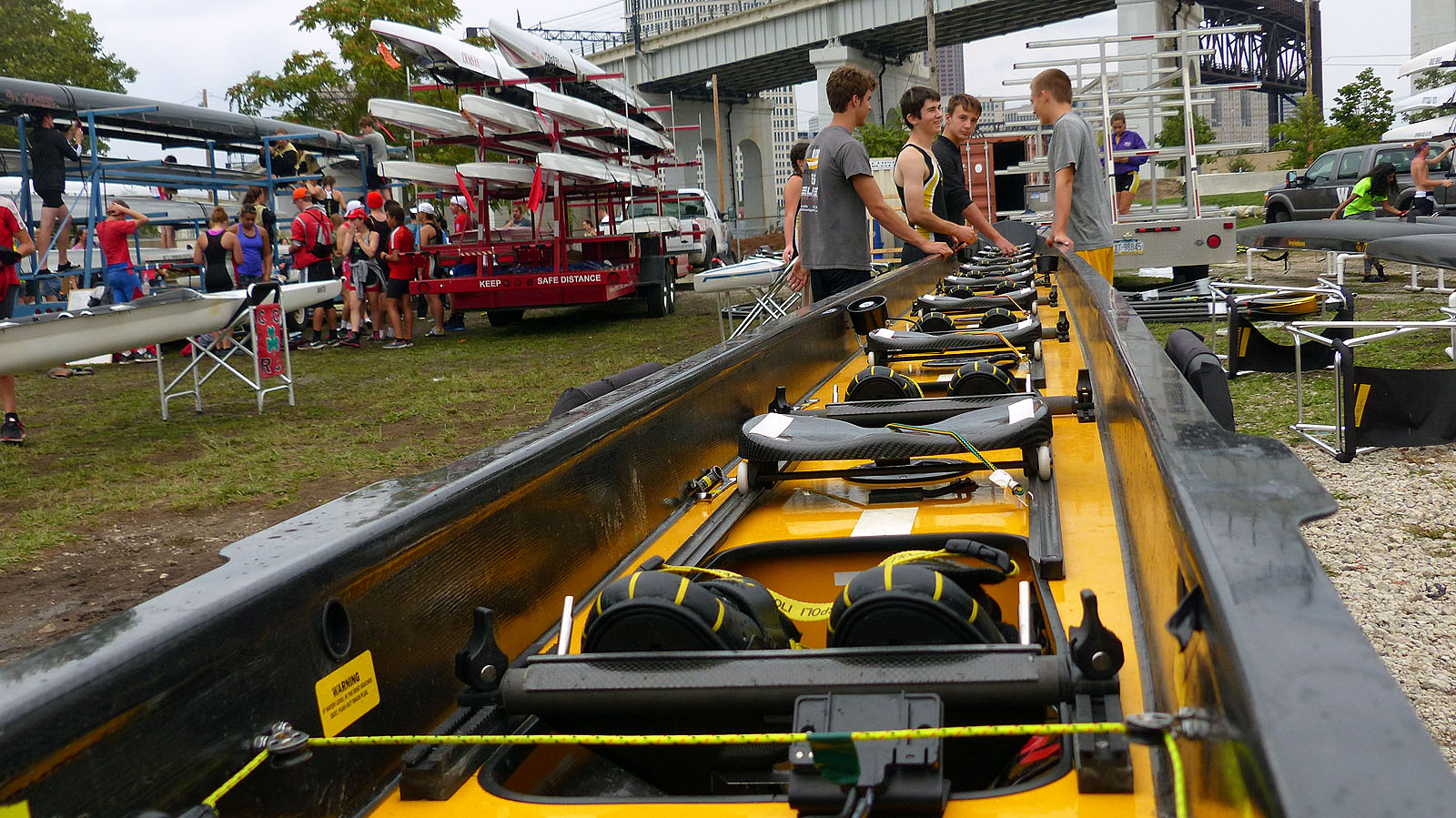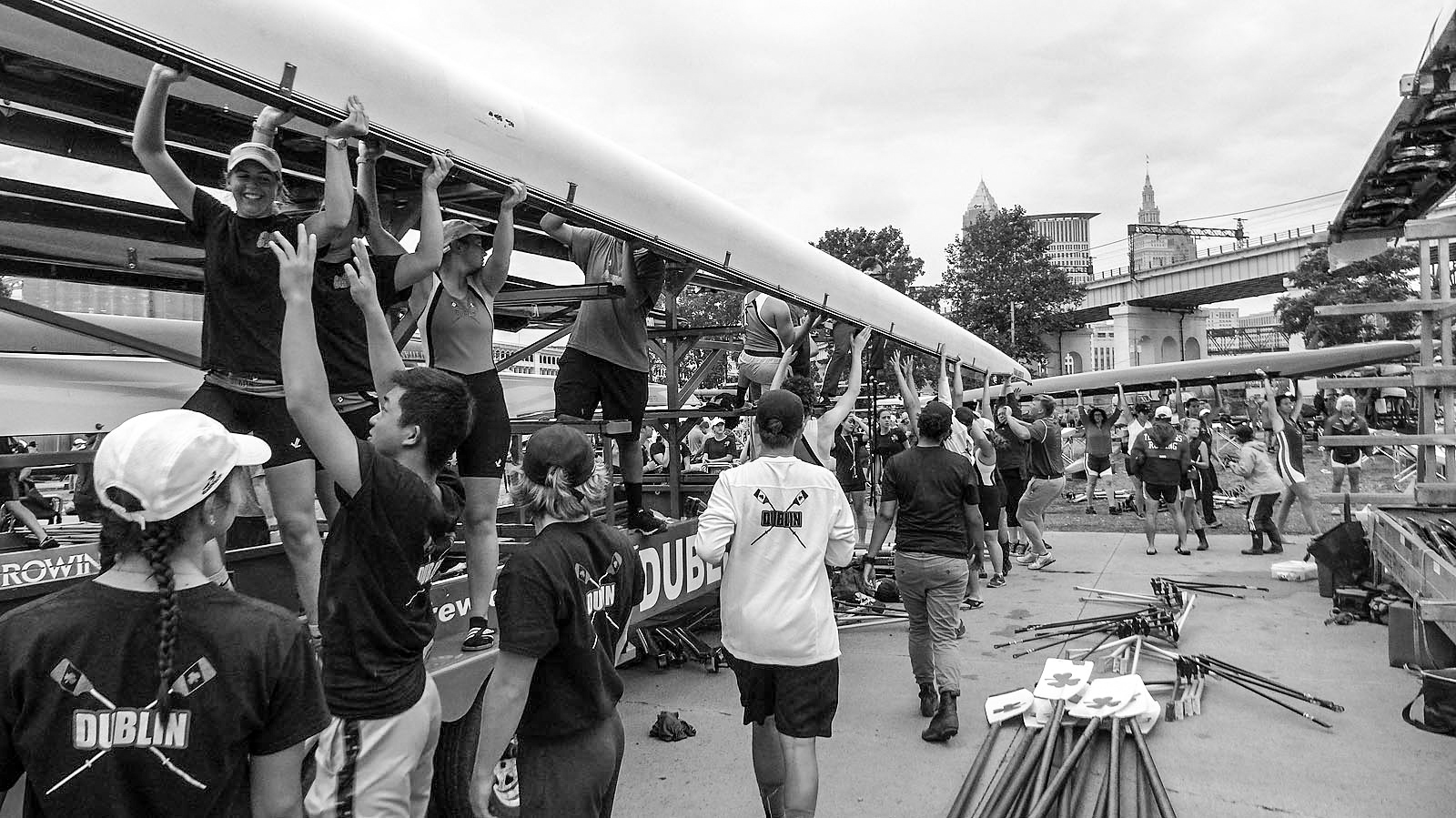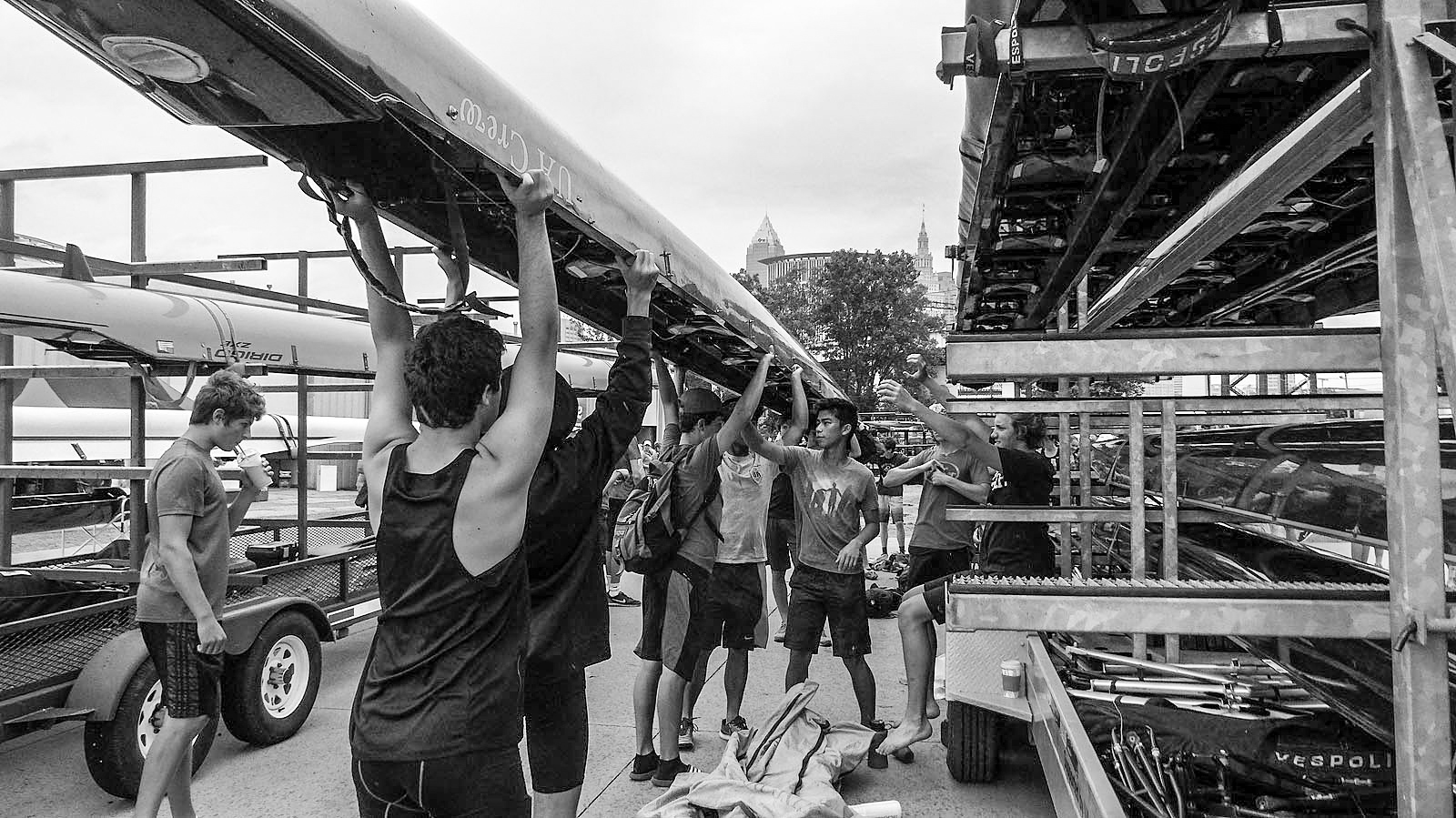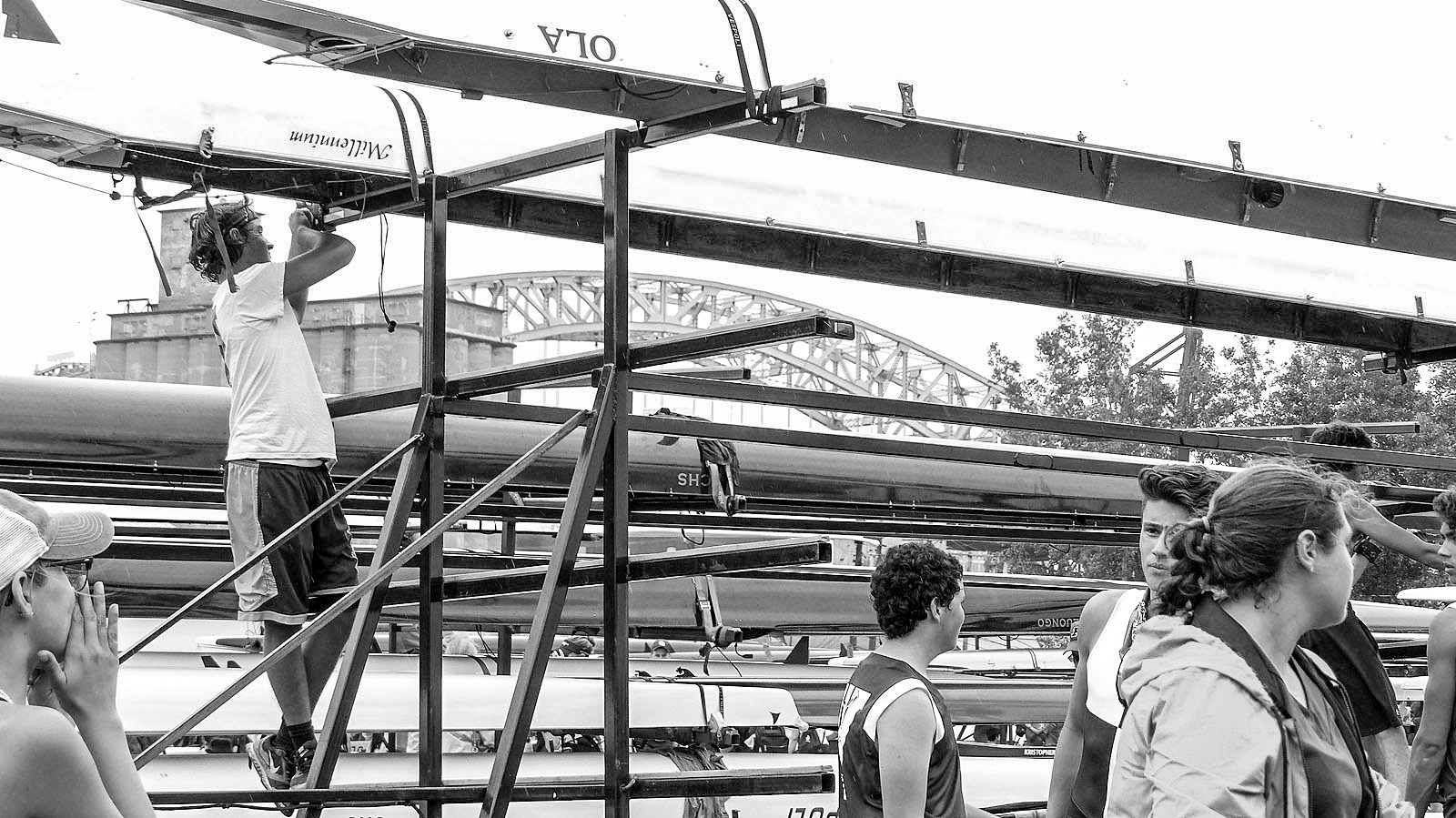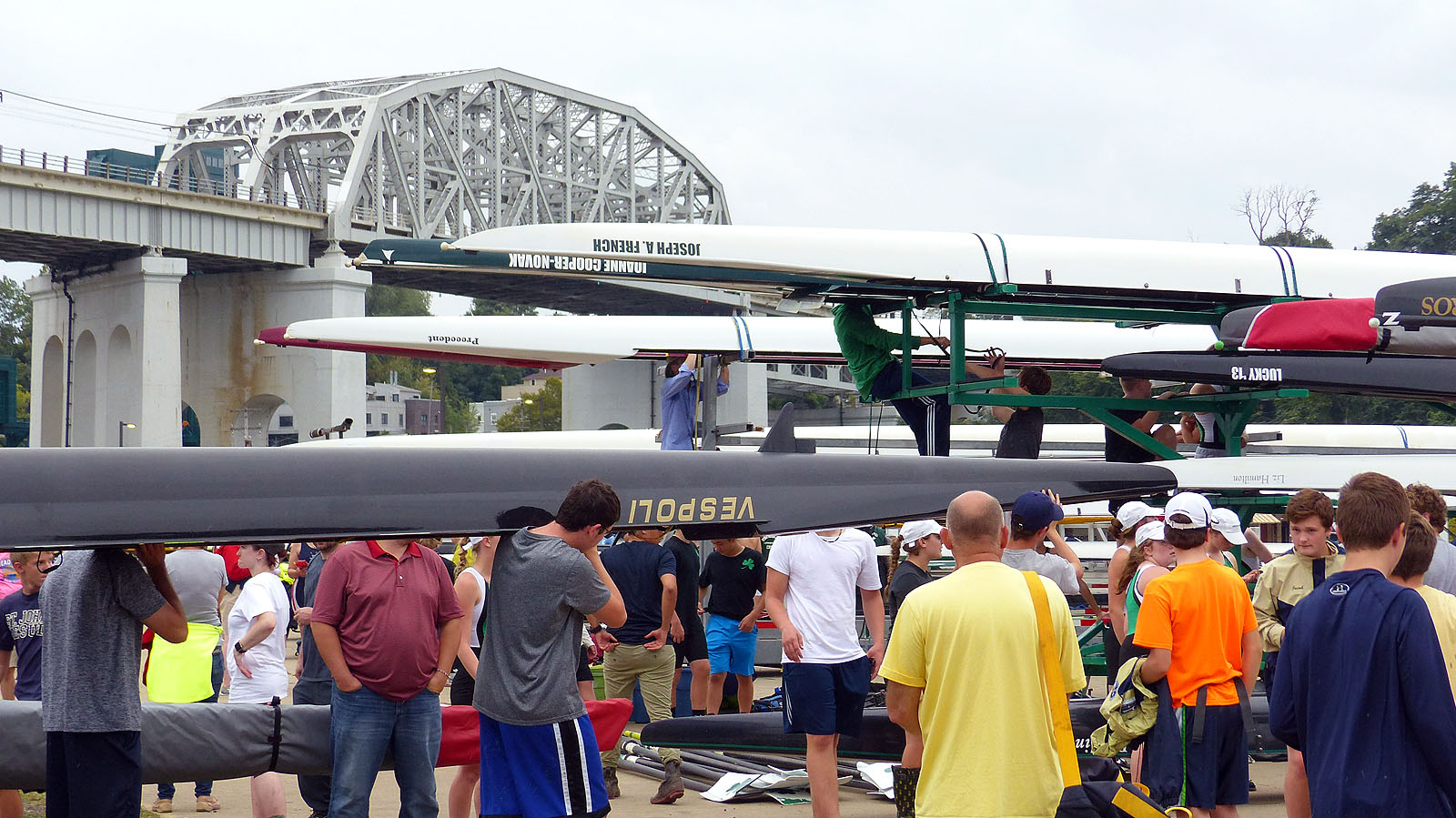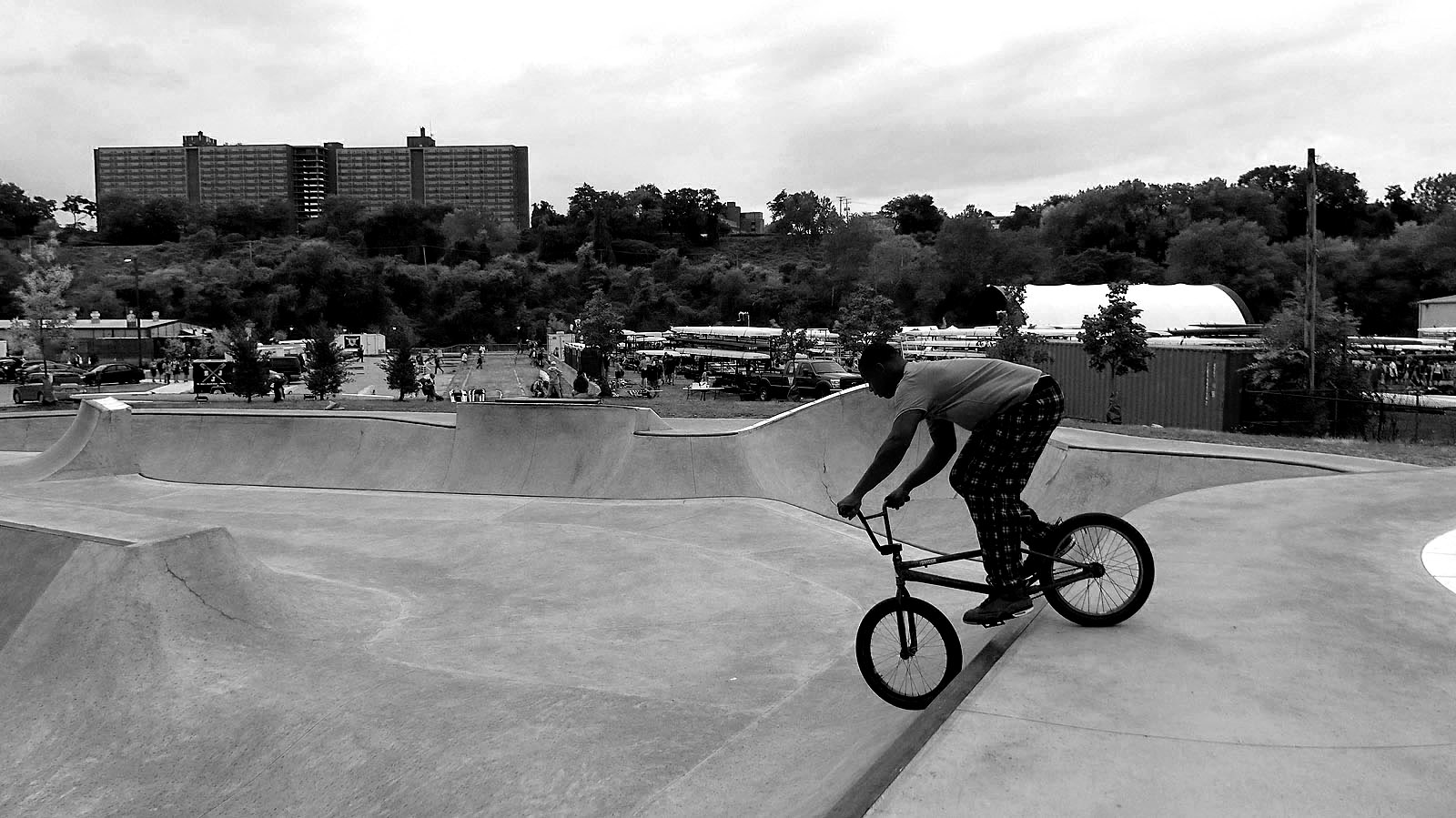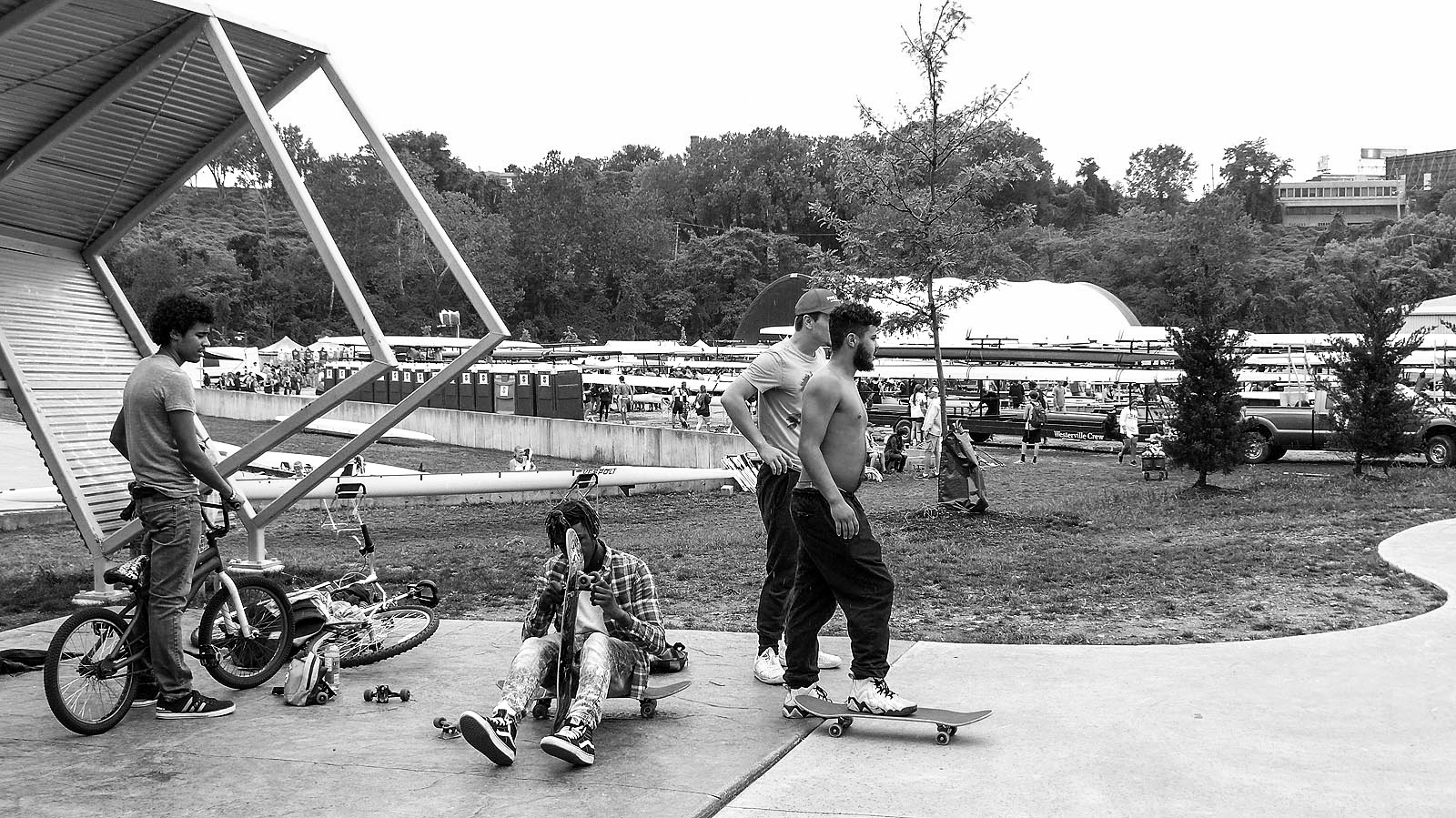Head of the Cuyahoga Rowers Get Pushed Around by Urban Stormwater Management Challenges
/Last Saturday's 21st Annual Head of the Cuyahoga Regatta (HOTC) hosted by the Cleveland Rowing Foundation brought thousands of rowers and spectators from 11 states and Canada to Cleveland's waterfront for a full day of racing on the Cuyahoga River. Regattas are a family friendly mix of sport, tailgate party and reunion as spectators wait in camps for teams they're rooting for to come down the course. The well respected and challenging 4,800 meter race course started near the 480 bridge and finished in front of the Cleveland Rowing Foundation.
One of the pleasures of competing in the HOTC as a rower is getting the opportunity to see Cleveland from an entirely different perspective. Sharp-eyed observers noticed young rowers scanning the scene as they passed under 11 bridges and varied landscapes associated with Cleveland's working shoreline during their 30 minute row up to the start line.
HOTC Race Day Photographs
While the HOTC is renowned for it's curvy course, this year's race was made a bit more challenging for a number of competitors racing shortly after a morning deluge. And that temporary challenge provided a tangible glimpse into ongoing investments in watershed infrastructure that's improving the water quality of Lake Erie and the Cuyahoga River.
We were shooting photographs just upriver from the Innerbelt Bridge when dark gray clouds looming to the west confirmed the arrival of forecasted rains. We scrambled for cover under the Norfolk Southern Lift Bridge and watched as the storm pounded rowing crews for 45 minutes.
As the front passed and skies brightened, we refocused on photographing the racing. It wasn't long before we noticed rowers were being knocked off their race line by a current surging into the Cuyahoga River. We were impressed by the oarsmanship of the rowers, especially singles and doubles (fewer oars to stabilize the shells) as they navigated their way past the turbulent water.
Video of rowers dealing with Walworth Run CSO current
The rowers found themselves in the middle of a peak outflow from Walworth Run, the largest CSO on Cleveland's west side, that, during heavy rainfalls, belches 320 million gallons of combined sewer overflow over an average of 43 discharges per year. Until the late 1800's Walworth Run was an open, bucolic waterway that was transformed by increased population pressures and industry into a discharge point for industrial wastes. The degradation, combined with periodic nuisance flooding, led Cleveland to enclose the tributary in a 16 foot diameter brick pipe that combined stormwater and sanitary water flows into a single outlet.
At the time of its construction, Walworth Run drained 2,125 acres (the area outlined in yellow) but subsequent sewer connections from areas beyond Walworth Run's natural watershed topography increased the sewershed load (the area outlined in purple) to 4,355 acres. Subsequent development (pavement, sidewalks, parking lots) further increased pressure on turn of the century sewer systems.
Coincidentally, as the Head of the Cuyahoga was happening, farther upriver Northeast Ohio Regional Sewer District (NEORSD) was hosting an open house to educate the public on, among other things, Project Clean Lake, the $3 billion, 25 year program (part of a consent decree with EPA) that will reduce raw sewage discharges in Cleveland and 6 inner-ring suburbs from 4.5 billion gallons to 494 million gallons annually.
“We’re all part of the problem and we all need to be part of the solution. We have to keep making investments or we are going to slide backwards”
Frank Greenland, director of NEORSD's watershed programs says Walworth Run is one of the largest CSOs in their system of 123 overflows. "There's also Morgana Run, Burke Brook and Kingsbury Run. People don't even know they're there as they've been culverted". "Most of the Project Clean Lake investment is in tunnel storage" adds Greenland, "With regards to Walworth Run, the 24 foot diameter Westerly storage tunnel will start near our treatment plant near Edgewater Park and run several miles to the Wallworth corridor. Once complete, we project it will reduce the number of annual discharges at Walworth Run from forty-three to two". The Westerly Tunnel is currently in design with construction scheduled to begin in early 2018 with an early 2024 completion date.
NEORSD is also working to reduce the amount of stormwater entering the sewer system by implementing green infrastructure initiatives. Greenland notes "We've awarded $2 million in green infrastructure grants to local communities. If we can remove stormwater from the system, that will further reduce CSO overflows". And one day, rowers passing the Walworth Run pipe will be able to say "I remember back when that pipe used to run hard, you shoulda seen it...."


